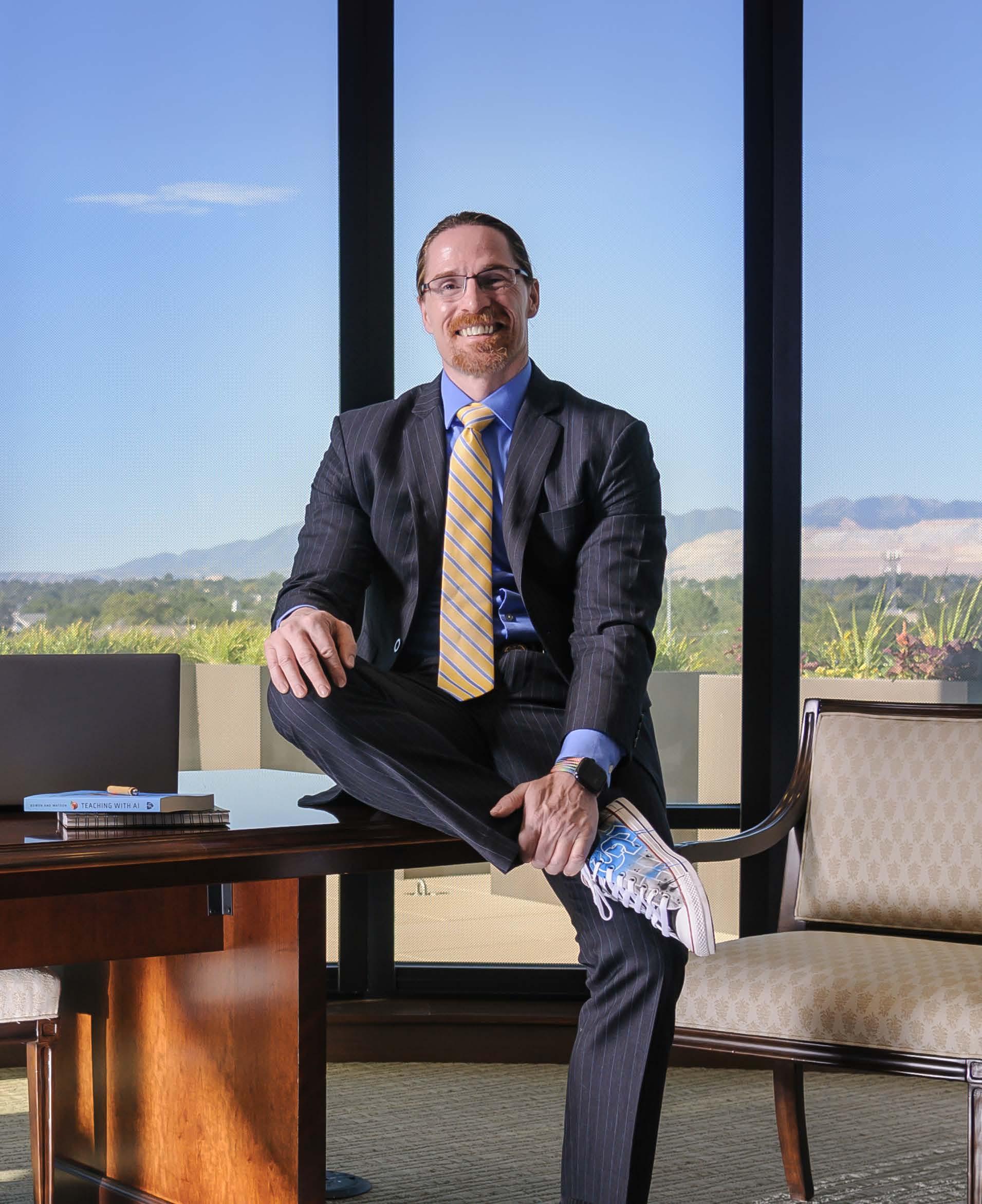

P panoramic


According to Todd Baird, the career forecast for graduates of SLCC’s Aviation Maintenance Program is bright. “Finding a job is not a problem,” he says. “All of our students have 100% placement when they become federally licensed, and repair stations even hire students without federal licenses.”
Over a four-month period this year, there have been 136 aircraft maintenance job postings in the Salt Lake area, with a median hourly rate of $33.60 — or just under $70,000 annually. Total projections for 2025 are 1,395 new jobs in the field, and that number is expected to grow by over 13% to 1,585 by 2030.
As a professor and program coordinator of Aviation Maintenance, Baird is the guy with the keys to several jets and airplanes, like the Beechcraft King Air 90 pictured here. In the program, students learn skills in 46 disciplines through hands-on experience with equipment, facilities, and aircraft like this. Those skills also transfer to other industries like NASCAR, railroads, amusement parks, heavy equipment, gas power, electrical power, and wind power — regardless of career goals, Aviation Maintenance students are setting themselves up to take flight.
Trish Gorman’s Business Vision
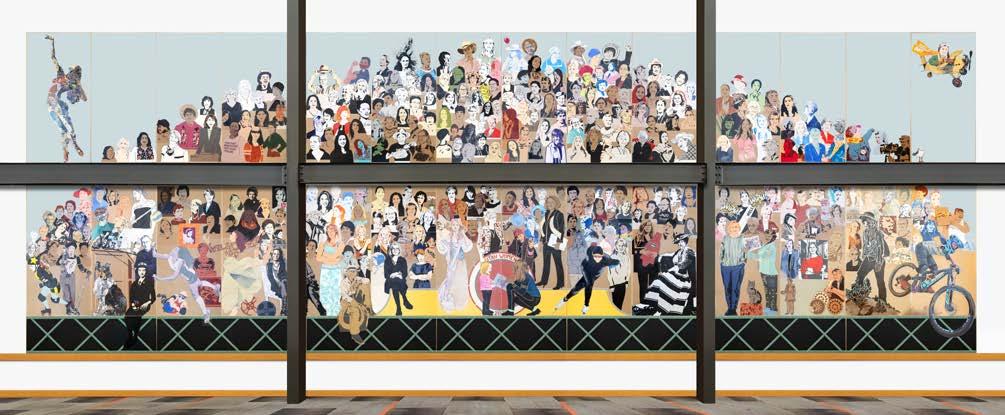
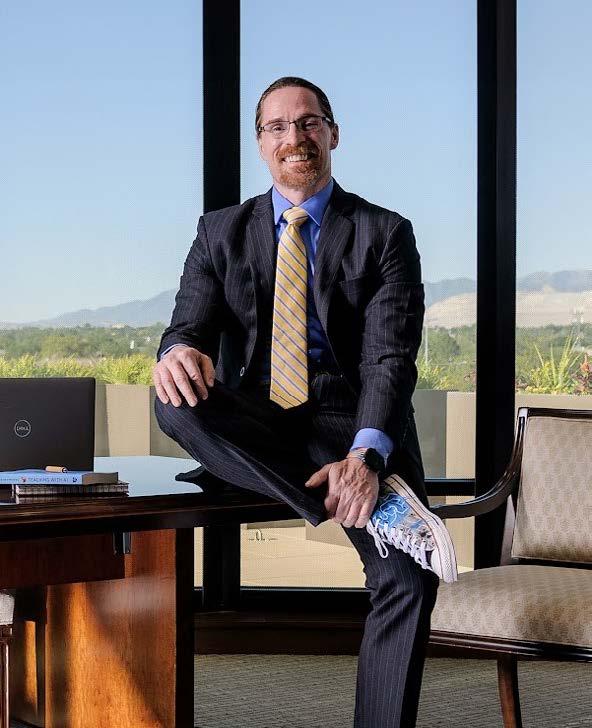
Photo of SLCC President Greg Peterson by Brett Colvin
D
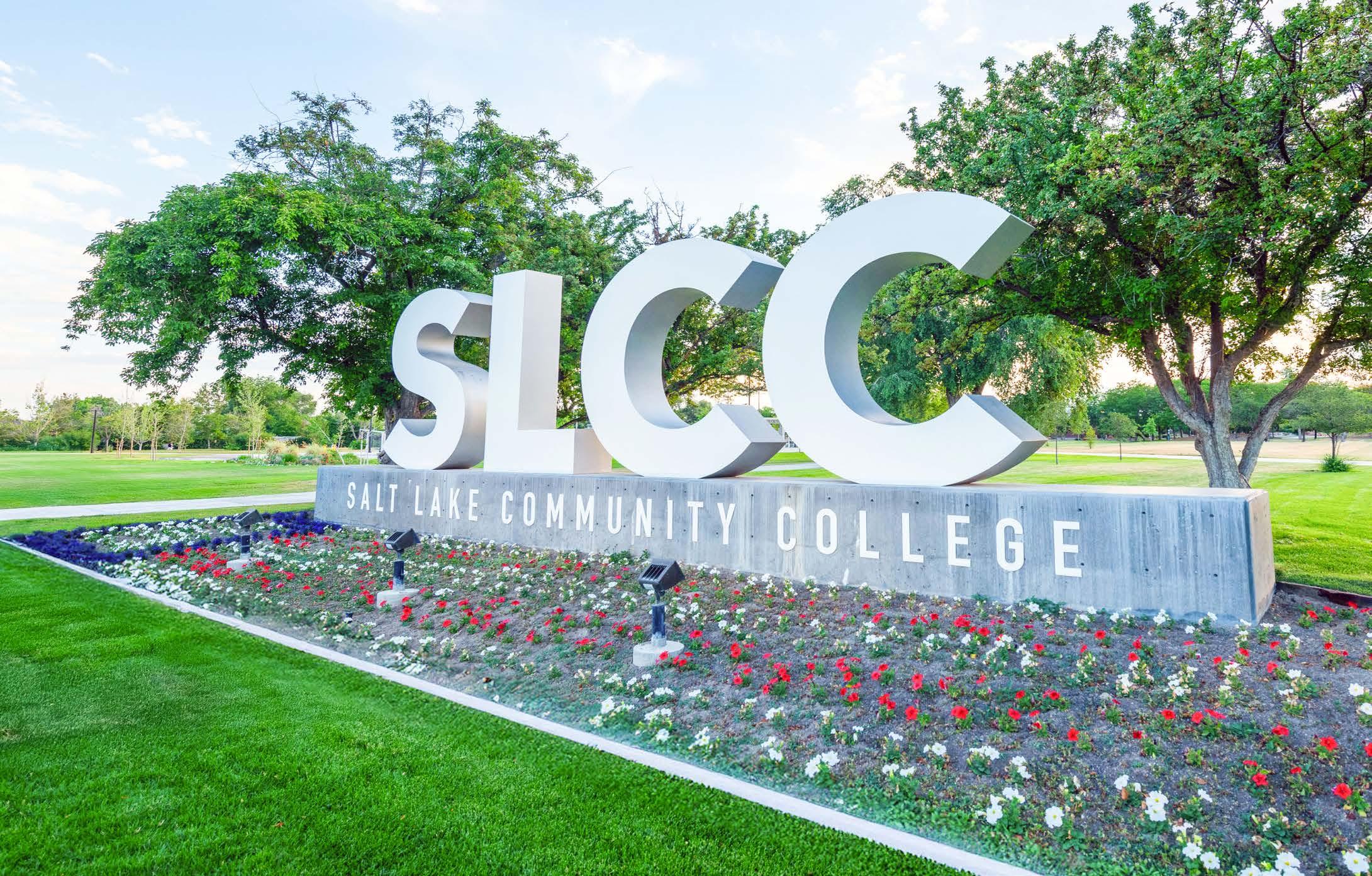
OPENING DOORS
Clarity, communication, and connection � those are the guiding principles behind President Greg Peterson’s approach to higher ed administration. They also inform the theme for this edition of SLCC Magazine: opening doors of opportunity for students and community members.
Given the nature of SLCC as Utah’s most affordable, most accessible institution of higher education, “opening doors” may seem too obvious to warrant such explicit mention; however, the theme’s prominence in each of the stories told in this magazine demonstrates that it’s unavoidably SLCC’s cornerstone. These stories also prove that the idea of access goes far beyond affordability.
In the classroom, SLCC faculty work to “demystify” complex subjects, inviting students into a shared space of expertise. In the local economy, The Mill, Goldman Sachs 10,000 Small Businesses program, and the Gail Miller Business School give entrepreneurs and aspiring
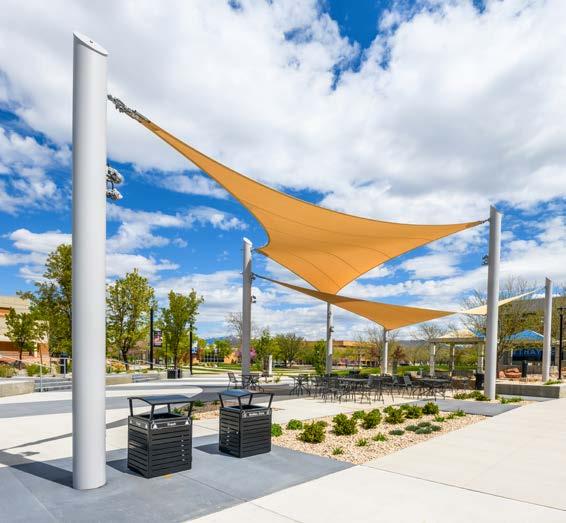
business owners tools to realize their dreams. In fields like healthcare, high�tech manufacturing, and aviation maintenance, hands�on experience and industry partnerships create tangible connections between students and career pathways. SLCC even opens doors for community members to view art, exhibiting the College’s permanent collection across the various campuses and partnering with state offices to display public art.
The theme of “opening doors” isn’t an editorial imposition, nor is it an unnecessary repetition of the College’s role. It’s a recognition that opening doors is, simply, the thread connecting every page in this magazine, because it informs everything SLCC does to support students, the local economy, and the community.
Rob Ware
SLCC Magazine Managing Editor
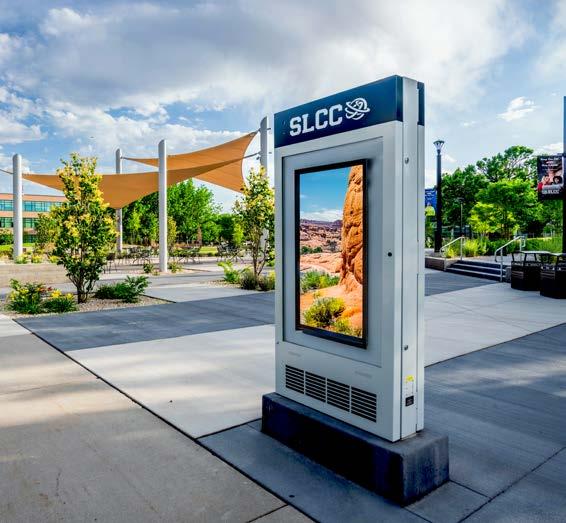

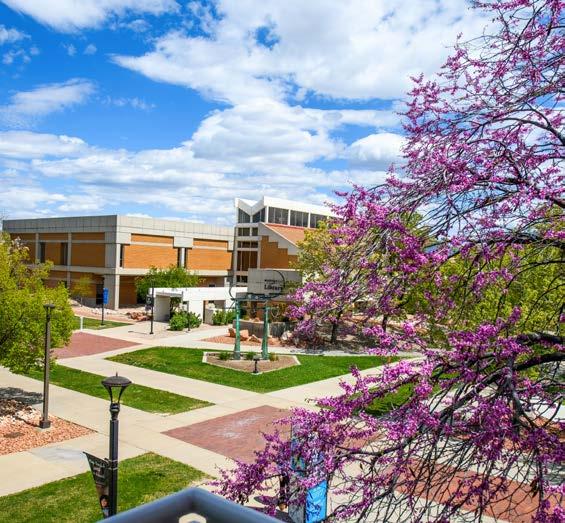
STAFF
SLCC Magazine
Published annually by the SLCC Institutional Advancement Division
Vice President for Institutional Advancement
Abby McNulty
Managing Editor
Rob Ware (AS ’04)
Graphic Design
Alex Martinez (AS ‘20)
Editors
Katie Bald
Melissa Leilani Larson
Peta Owens-Liston
Erika Shubin
Contributors
Verónica Aguilera Sánchez
Peta Owens-Liston
Spencer Porter
Liz Radley
Clint Stoker
James Walton
Rob Ware (AS ’04)
Photographers
Brett Colvin
Scott Fineshriber
Spencer Porter
James Walton
Editorial Advisors
Jenny Abbott
Rebecca Armitage
Scott Brown
Josh Elstein
Jason Pickavance
Jen Seltzer Stitt
Roger Thom
Bob Whittaker
THE ALL-NEW BRUIN CREW
A new ambassador program showcases student life
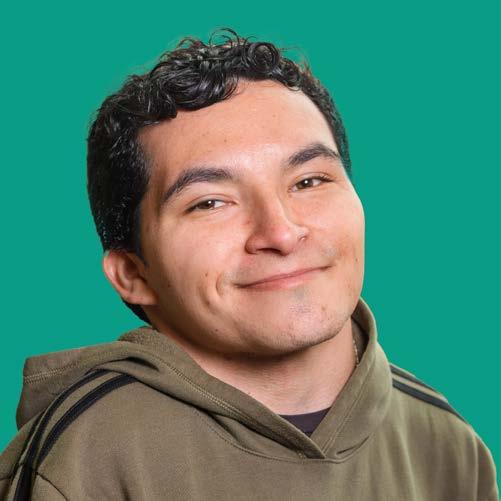
DILAN BERNALES
Occupational Therapy Assistant
“As an international student, I feel supported here at SLCC. I came to the United States as an international student to study, and I’m very happy to be given this great opportunity, allowing me to achieve my goals and create new ones. This has also allowed me to learn more about this country’s culture, as well as the other students’ cultures � I enjoy being part of a very diverse and interesting community.”
Spring 2025 marked the first time Salt Lake Community College piloted a social media ambassador program geared toward showcasing SLCC through the lenses of current students.
Four students were selected from multiple disciplines. Throughout the semester, the ambassadors were encouraged to create student-centered content, which showcased their attendance at academic competitions and student and sporting events. Meet the SLCC Bruin social media ambassadors for Spring 2025!
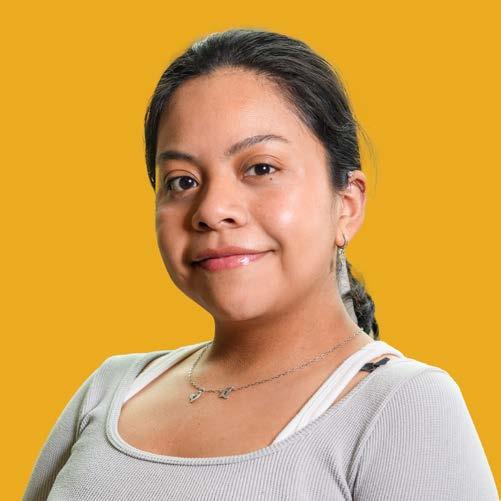
ANA BELEN GONZALEZ SOSA
Chemistry and Biology
“No matter where you are in your academic journey, being part of the SLCC Bruin family makes you realize that anyone can go to college. You can always find your community and a safe haven.”
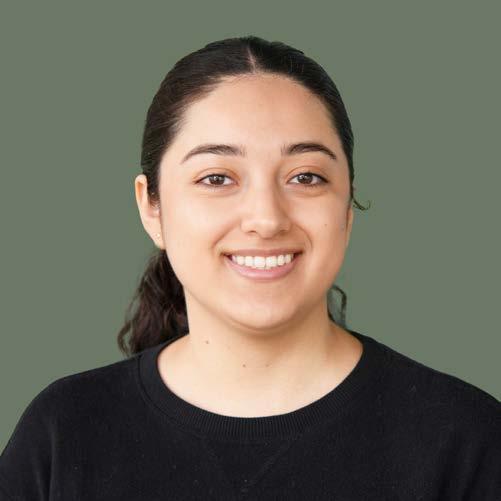
ESTRELLA CARLOS
Journalism & Digital Media
“Here, I’ve been able to feel a sense of accomplishment through my educational journey. It shows me that I can accomplish anything at any age.”
SEDIQA AHMADI
Radiologic Technology
“Being part of the SLCC community means belonging to a diverse and supportive environment that fosters learning, collaboration, and personal development. It is also an opportunity to obtain a college degree, gaining knowledge, developing professional skills, and securing a better future for myself. It represents personal growth, financial stability, and the ability to contribute positively to society.”
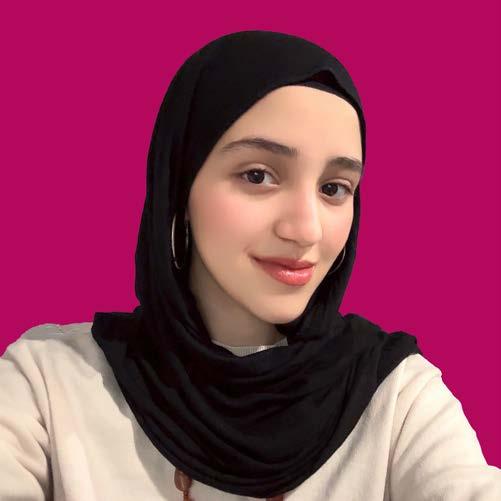
SLCC
Bruins

AI, MORE INTELLIGENTLY
NVIDIA and SLCC partner to strengthen students and educators with AI skills
Salt Lake Community College is one of nine Utah higher education institutions to be included in a recently announced public�private partnership with NVIDIA, a global leader in artificial intelligence (AI), to empower faculty to teach generative AI skills to students.
NVIDIA will provide a range of resources, including the opportunity for educators to earn a certificate through the NVIDIA Deep Learning Institute University Ambassador Program. This program will provide teaching kits, workshop materials, and access to NVIDIA’s GPU-accelerated cloud�based workstations. Utah educators will also gain resources in accelerated computing and data science, equipping them to enhance classroom instruction and prepare students with in�demand workforce skills.
“AI is rapidly powering change in almost every industry, so we are thrilled to be part of this partnership with NVIDIA to ensure Salt Lake Community College is preparing our students with the AI skills and knowledge they will need to optimize their careers,” says
Greg Peterson, president of SLCC. “This state�wide investment in Utah’s higher education by NVIDIA is a win�win for all involved.”
In addition to this accelerated program, state agencies will provide internship and apprenticeship opportunities that will allow students to attain hands�on experience in AI and technology, further enhancing their skills and positioning them for academic and career success.
“With AI revolutionizing industries worldwide, it’s critical to prepare current and future workforces with the right skills and training,” says Greg Estes, vice president of corporate marketing and developer programs at NVIDIA. “Through this AI education initiative with NVIDIA, Utah can foster innovation, improve economic growth, and prepare students to tackle today’s most pressing challenges.”
Folio: SLCC’s Literary & Art Magazine can’t stop winning awards
Inwhat has become an almost annual event, SLCC’s literary and art magazine, Folio, has won another distinction from the National Council of Teachers of English (NCTE) via the REALM program. The “Renaissance” issue, published in fall 2023, received the rank of Superior from REALM’s judging committee. REALM, or Recognizing Excellence in Art and Literary Magazines, celebrates student�produced, faculty�supported publications.
The latest accolade from the NCTE joins a crowded trophy case, including Community College Humanities Association awards for two issues (Fall 2013 and Spring 2019) and 16 individual awards for fiction, nonfiction, poetry, drama, photography, and artwork dating back to 2017.
Folio’s student design editor, Olga Gao, came to SLCC from the California College of the Arts, bringing with her a BA in design and some professional experience designing packaging. Gao is continuing her education by studying graphic design at SLCC.
Gao recognizes that there’s pressure to maintain the streak of accolades, but she’s confident that Folio will continue to excel. “We have really good art pieces from the students,” she says of the visual contributions that she’s responsible for selecting.
Literary contributions are selected by Abraham Smith, the literary student editor, who refers to his role as “a wonderful opportunity to display, appreciate, and perhaps uplift the art of my peers.”
FOLIO WELL -FÊTED
While Smith is ultimately responsible for curating, he’ll receive plenty of guidance from Daniel Baird, associate professor of English at SLCC and Folio’s faculty advisor.
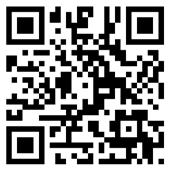
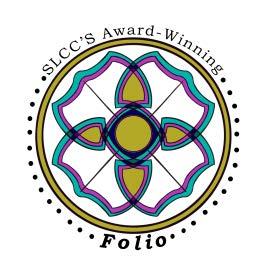
“I teach them a couple of different ways to look at literature,” Baird explains of his hands�off approach to his advisory role. “So it’s not just them saying ‘I like it’ or ‘I don’t like it.’” These critical lenses include evaluating work as mimetic, pragmatic, expressive, meditative, or through the classic model of formal criticism. He also brings in guest lecturers to help, including SLCC Professor Emeritus and current Utah Poet Laureate Lisa Bickmore.
Though the guest�lecturer spots may be exclusive, seats in ENGL 1830: Literary Magazine Studies � the class that produces Folio � are not. The door is open to all students, says Baird. “If you’re interested in learning how to put together a literary or arts magazine, come to the class. Interest is the pre�requisite.”
The same is true for contributors. “This is the first publication for a lot of students,” Baird continues, calling it an opportunity to build confidence with a chance to be published in an award�winning magazine. Questioning if you’re qualified to be published? Baird has an answer:
“I say submit.”
Folio: SLCC’s Literary & Art Magazine accepts submissions year�round from students, staff, and faculty.
Scan the QR code or visit slcc.edu/folio to learn more or pick up a copy of “Renaissance” at the Publication Center (Taylorsville Redwood Campus, AAB 137).
C
SAFETY. SERVICE . SECURITY.
The new SLCC SAFE app is so much more than emergency alerts

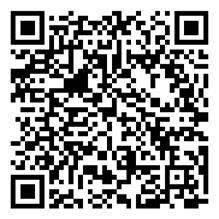
Scan the QR code to learn more or to download the SLCC SAFE app.
Salt Lake Community College Emergency Management recently launched the SLCC SAFE app, a comprehensive and easy�to�navigate application that all SLCC community members are encouraged to download for their safety and the safety of others while on campus.
Michael Gipson, the deputy director for Emergency Management, built the app to provide a one�stop safety shop for students, staff, and faculty. Through the app, users can get emergency notifications, request a parking lot escort, get help to jump start a vehicle, purchase a parking permit, receive campus navigation assistance, and even order food from Bruin Bites.
Gipson encourages all users to familiarize themselves with the app so they can easily navigate it in an emergency. Additionally, he wants app users to submit feedback for improvement through the Comments and Questions box at the bottom of the application.
“I want the SLCC community to know that Emergency Management is here for you; we work for you. Our goal is to ensure everyone’s safety in every way, and with the app, we want to make students know that we are easily accessible to help them with anything safety related that they may need,” says Gipson.
The application is free of charge and is available for Android and iOS users. Gipson recommends that, once the application has been downloaded, users enable notifications. “The only time users will receive a notification will be in case of emergencies or campus closures due to weather, and we want folks to receive those messages right away,” says Gipson. “SLCC safety matters; together, we can ensure a safer campus through SLCC SAFE.”
GOLDMAN SACHS AND SLCC CELEBRATE 1,000 SMALL-BUSINESS SUCCESS STORIES
The Goldman Sachs 10,000 Small Businesses program celebrated a significant milestone this year by reaching a four�figure graduate pool. The 1,000+ business owners who have completed the local program have gone on to create revenue exceeding $2 billion while supporting more than 24,000 jobs. Those numbers are all tied to the region, and they confirm Governor Spencer Cox’s assertion that Goldman Sachs is “a key pillar in the Salt Lake community.”
Every pillar needs a strong foundation, and � ever since Goldman Sachs made its first $15 million commitment to the College in in 2012 � SLCC has provided a firm and fertile one, with the program currently based out of SLCC’s Miller Campus.
The program’s 12�week curriculum equips participants with tools for successful entrepreneurship, including how to manage and report finances, what effective leadership looks like, and tactics for negotiation. The final product is an actionable growth plan, something that turns dreams and ambitions into a tangible path.
Natalie Cass, a recent graduate and founder of Cass Studios, LLC, is just one example of the program’s lasting benefits for small�business owners. “Early on, I was able to use tactics and strategies from the program to stabilize cash flow and reduce stress,” she says. “I’m currently focused on laying the groundwork � cleaning up my financial records, establishing accurate metrics, and ensuring I have the right people in place � before scaling the business.”
Many program attendees enter with a plan to scale but leave with a new understanding of just how far they can go. Dr. Betty DeLass, founder of Reborn Pelvic Health & Wellness, attests to that, saying she “learned to dream BIGGER [emphasis hers] than I had been prior to this program,” though the growth was equal parts personal and professional. “You will get as much out of GSSB 10K as you put in,” she says. “It really is quite the gift.”
Cass also highlights another key benefit of the program. As a member of the alumni community, she’s connected with a likeminded “network of small business owners, people with passion and grit who truly support one another.” And that community is set to get even bigger. Beginning this year, the program will reach beyond Salt Lake City as Utah becomes the 11th state to expand the program with Goldman Sach’s Investment in the Rural Communities initiative.
Asahi Pompey, the global head of Corporate Engagement and chair of the Urban Investment Group, refers to the new initiative as “doubling down” on investing in Utah businesses. She says the expansion will help replicate the city�centered success of 10,000 Small Businesses in communities that don’t often see the same level of resource investment, “reaching small businesses across the state so that even more Utahns can grow and thrive.”
$2BILLION I N REVENUE
2 4 , 000 JOBS
1 DREAM AT ATIME
“WHAT YOU DO ACTUALLY MATTERS MORE THAN JUST WHAT VALUE YOU CREATE.”
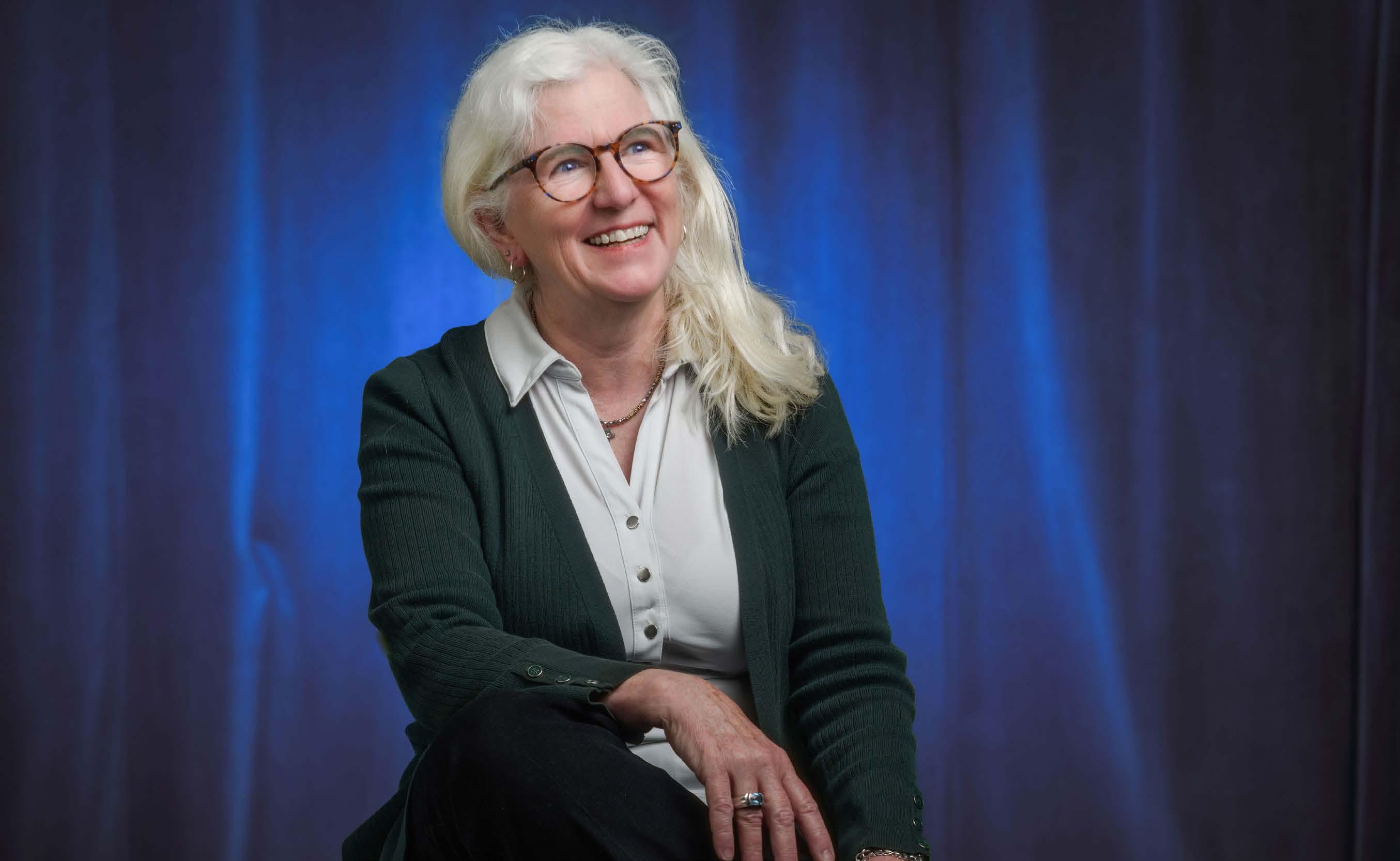
THE CORNER
of Ambition and Integrity
Trish Gorman brings clarity of vision and purpose to the
Gail Miller Business School
By Rob Ware
Columbia, Wharton, Duke, McKinsey, Deloitte, and the Jack Welch Management Institute � the institutions and companies on Trish Gorman’s resúmé read like an all�star roster of global capital, and that list doesn’t even comprise a quarter of them. Since the summer of 2024, she’s been applying that leadership experience as dean of the Gail Miller Business School, which was named for Miller in 2023 following the largest donation in Salt Lake Community College history.
Miller’s involvement is a central reason Gorman came to SLCC, because in Miller, she sees sound business principles � the accounting, finance, and operations that represent the traditional business education � paired with an additional layer of ethical awareness.
“I really admire Gail Miller’s value system,” Gorman says, recalling with distaste the words on a billboard she frequently saw while living in Los Angeles: He who dies with the most toys wins.
“When [Miller] talks about winning the game of life, she doesn’t mean, you know, the one with the most toys wins. She’s very dedicated to doing the right thing and to doing right by people,” Gorman continues, saying Miller’s philosophy of business is ambitious and embraces opportunity, but not at any cost. Modesty, integrity, responsibility, stewardship � Gorman places as much emphasis on those qualities as on drive, because she recognizes that personal reputation and relationships are valuable resources. She also insists that doing the right thing ethically is, simply, the right thing to do. Toys be damned.
“What you do actually matters more than just what value you create,” she explains. “I’d like our business school to be at the corner of ambition and integrity.”

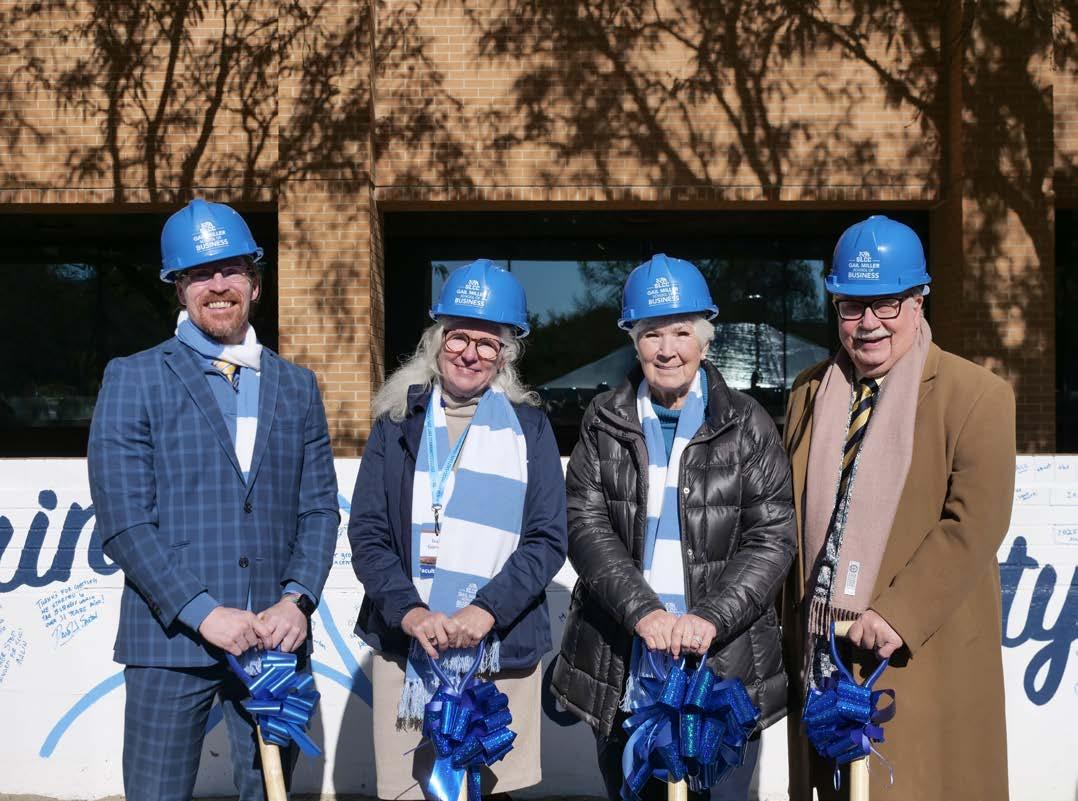
LOCAL PURPOSE, GLOBAL OPPORTUNITY
This isn’t Gorman’s first experience in the Utah business school ecosystem. From 2016�2020, she was also the inaugural director of the University of Utah’s Goff Strategic Leadership Center, which was founded in part to challenge existing norms, dismantle barriers, and help everyone realize their own leadership potential. Gorman uses similar language to describe her new role at SLCC.
“Accessibility, affordability, flexibility � that’s our mission,” she says. The Gail Miller Business School is an alternative pathway for students and entrepreneurs at any stage of their careers who find traditional business programs untenable.
“ACCESSIBILITY, AFFORDABILITY, FLEXIBILITY — THAT’S OUR MISSION.”
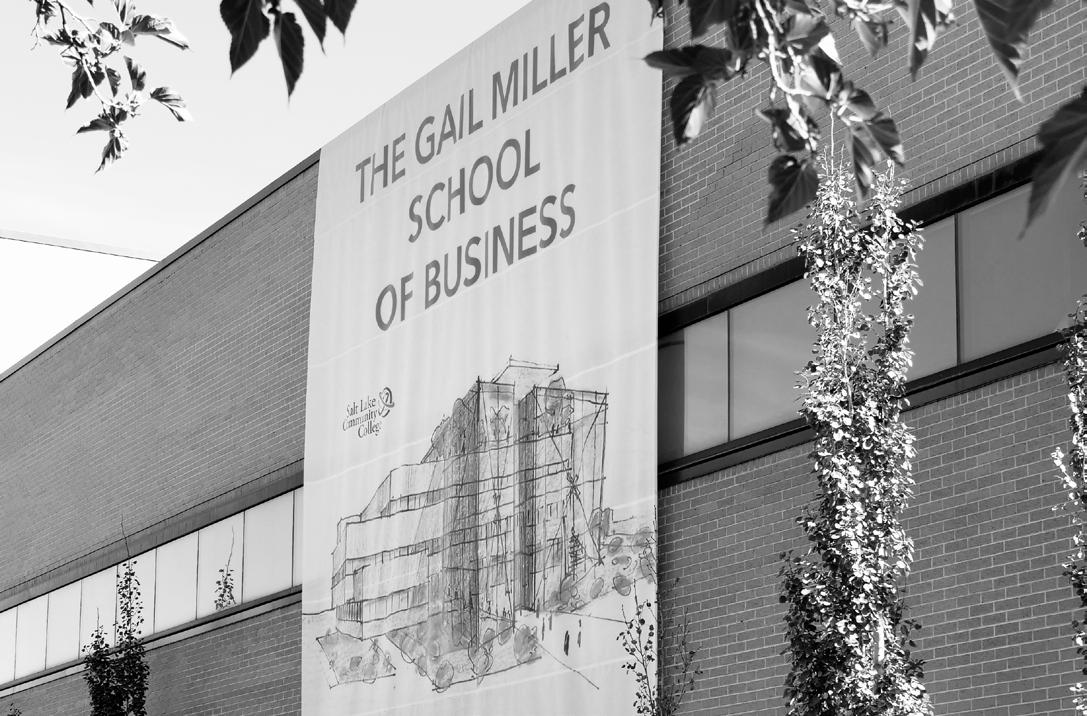
“There are some people who want to formally study business, going from here to a four�year institution,” she explains, “but many other people are already in the world of business because they’re making a living, they’re selling services and products and goods, and they’re providing value to their communities.” By meeting those people where they are, Gorman says, SLCC can help them do that more effectively and more efficiently, adding value that she simply doesn’t see in most MBAs or undergraduate programs. She also credits the fertile business field in Utah for providing ample opportunity.
“One of the reasons I enjoy Utah so much is because it really is a wonderful place to start a business,” Gorman says, citing a young population, high general demand, and economic optimism. “There are opportunities across the state, and it’s a very rapidly growing state. Those opportunities are fantastic for our students, but they differ by region, by industry,” she continues, explaining that, compared to business schools at four�year institutions, the Gail Miller Business School can be more rooted in its local community.
Gorman refers to this approach as being “more than local,” calling it “hyperlocal,” and saying it lets SLCC be more connected to the economic ecosystem surrounding each campus. However, like with any ecosystem, SLCC’s business focus can’t only be hyperlocal � it must move from its immediate situation to the local and beyond. A failure to understand larger industry forces and mechanics outside of the Salt Lake Valley limits potential, and while a community college’s impact is often hyperlocal, Gorman says that “it’s still impossible to think about it without considering the larger ecosystem.”
Meeting students where they’re at is a core principle of a community college education, she reiterates, “but I’d be happy if our students go work for international companies. We need international companies in Utah, just like we need local companies. We need an ecosystem” � a lesson she’s learned through first�hand experience while working, teaching, and consulting in over 40 countries.
BUSINESS IS BUSINESS IS ART
Whenpressed by a business novice about what, exactly, business is, Gorman is as likely to breakdown the engineering and logistics of an object in the room (like a mini fridge) as she is to say: “Business is business is business.” For a business novice receiving that answer, its circularity may sound limiting. For Gorman, it’s expansive.
Business isn’t just accounting and spreadsheets and strategy. It also includes everything that those tools quantify � a complex map of overlapping impact. From strategic planning to execution, from theory to practice, from inputs to outputs to models of value creation, Gorman’s approach to business is about building a comprehensive understanding of the context around any decision, product, or solution � again, the idea of an ecosystem.
That approach is, necessarily, complicated, and that complication may be the central “problem” that any business school (or any business venture) is trying to solve. Gorman’s solution? Refuse simple answers and dig deeper. This is a process she describes as “always observing the cues” in everything related to commerce � the same way a liberal arts critic might analyze a novel or a piece of music.
Gorman can also do both.
In addition to the standard fundamentals of a business education, she studied French and music. She also reads daily, a practice she shared with her grandmother, who was a cleaning woman and cafeteria aide in New York with insatiable reading habits. Gorman credits her grandmother with catalyzing the state’s interlibrary loan system by reading through the local branch’s entire catalog, forcing them to dip into other libraries’ stock to bring her more books.
Gorman clearly inherited whatever gene excites such curiosity. A random selection from her office bookshelf is as likely to include Henry Miller as anything strictly related to supply chain optimization. She sees the value of the humanities for a business leader.
“Students will do well in business if they’re able to embrace both the quantitative and the qualitative, the logical and the emotional,” she says, noting that a well�rounded education can “help business students see opportunities around them and make good choices about where to invest their time and energy.”
A strong background in nuts�and�bolts business fundamentals represents a toolbox to empower any business journey, but creativity and critical thought � fundamentals of the liberal arts � are also necessary to recognize where that journey is beginning, identify where it’s going, and imagine a path to get there.
“You can’t analyze your way to a strategy,” Gorman says. “You need creativity � but if you’re just creative, it’ll be very hard on the other side, the analytical.”
BUSINESS FOR ALL
Gorman
also thinks the Gail Miller Business School is for more than just business owners, students, and aspiring entrepreneurs. Everyone, regardless of major, benefits from studying business.
“Business students tend to be self�aware of where they fit in the consumer society,” she says as encouragement for non�business majors to sample the GMBS offerings. “Taking some business courses will help you understand the whole system that you are embedded in and what it means to be a thoughtful consumer.”
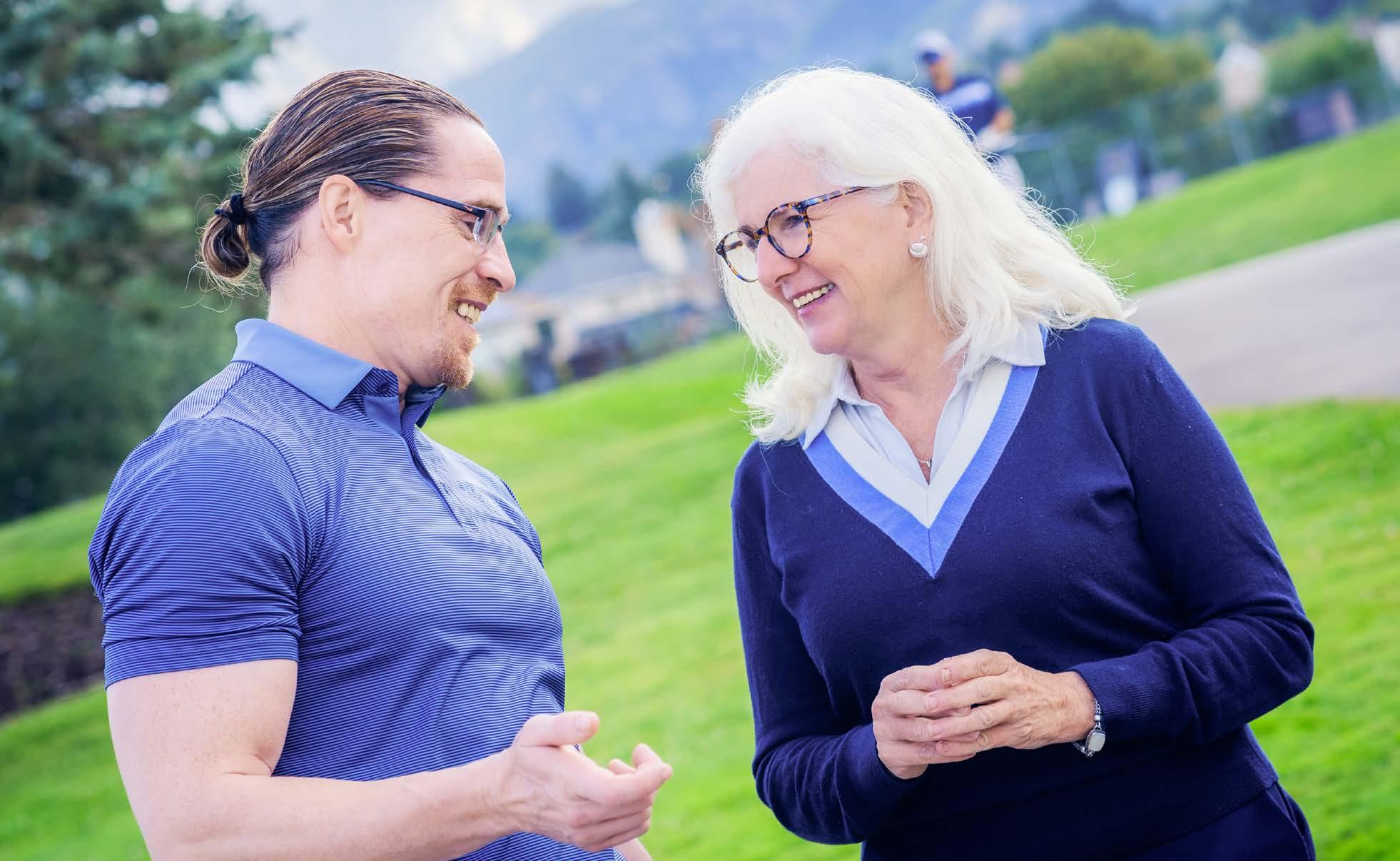
YOUR COMMUNITY, YOUR COLLEGE
Thank you to the donors and supporters who empowered SLCC students by contributing during our 2025 Giving Day.
Education is a catalyst for lifelong learning and growth, and — as Utah’s largest open-access institution — SLCC helps nearly 52,000 students learn, build, and thrive in their educations and professions. Together, we’re unlocking potential, shaping futures, and building stronger, more vibrant communities.
Thank you for making a difference. We look forward to celebrating with you again next year!
TOTAL RAISED $360,000 Over

CHALLENGE GIFTS
800+ DONORS + SUPPORTERS
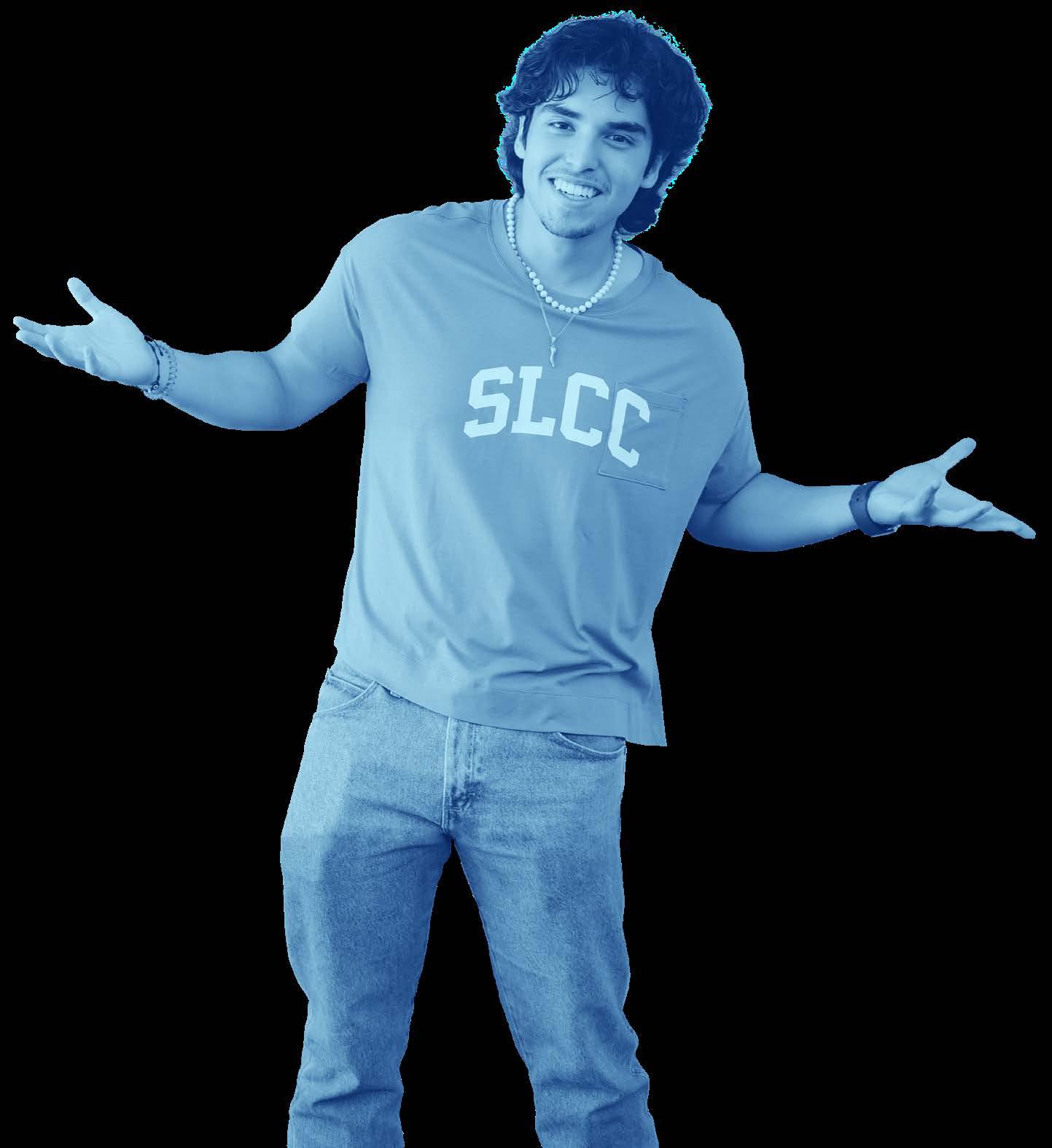
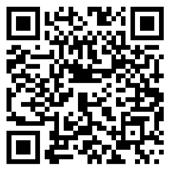

KEEPING ‘PUBLIC
ART’ PUBLIC
UA&M LOANS 22 HISTORICAL ARTWORKS TO SLCC
With James Walton
HannahBarrett refers to public art as “the people’s collection.” She’s also passionate about ensuring Utahns have the opportunity to access it. As the collections manager for the Utah Division of Arts & Museums, she’s in a position to affect that access, and with a new loan of public art to Salt Lake Community College, she’s doing exactly that.
The loan comprises 22 large-scale pieces on a five-year term from the Alice Merrill Horne Art Collection, which includes 3,000 pieces total. Much of that collection is currently in storage, so Barrett suggested a partnership with SLCC to get some of the more spectacular pieces out of limbo and into the spotlight. Most of the pieces are now on display across five of SLCC’s campuses, with additional sculptural works coming soon.
The loaned pieces were curated by Barrett, the College’s Art Committee, and James Walton, SLCC’s gallery & art collection specialist. While it’s impossible to do these works justice with photographs and print, Walton agreed to share some background and his impressions of a few of the pieces.
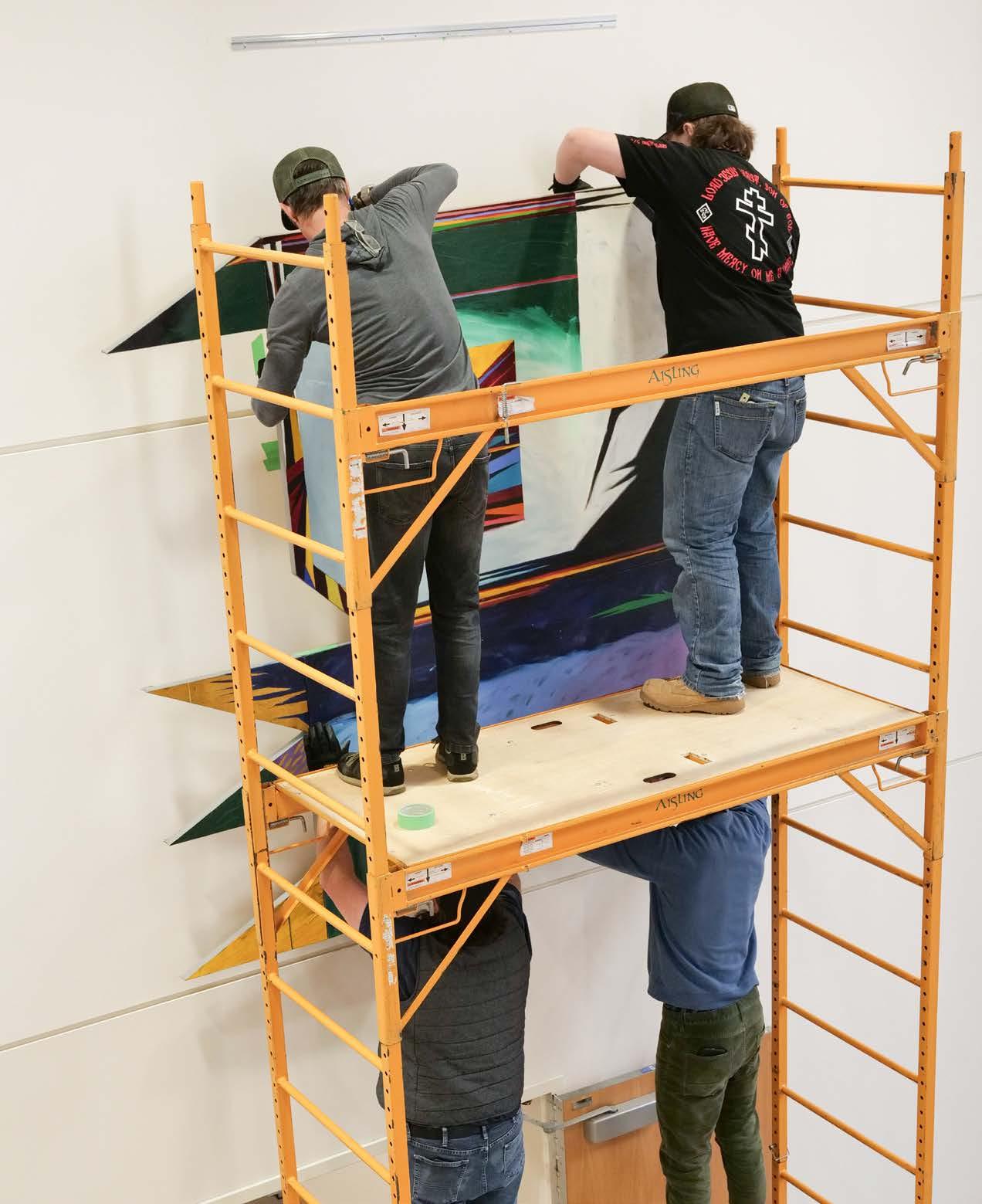
ALLEN BISHOP
Pray/Eyeing Humantis, 1986
81.5 x 86.25 inches
Location: South City Campus
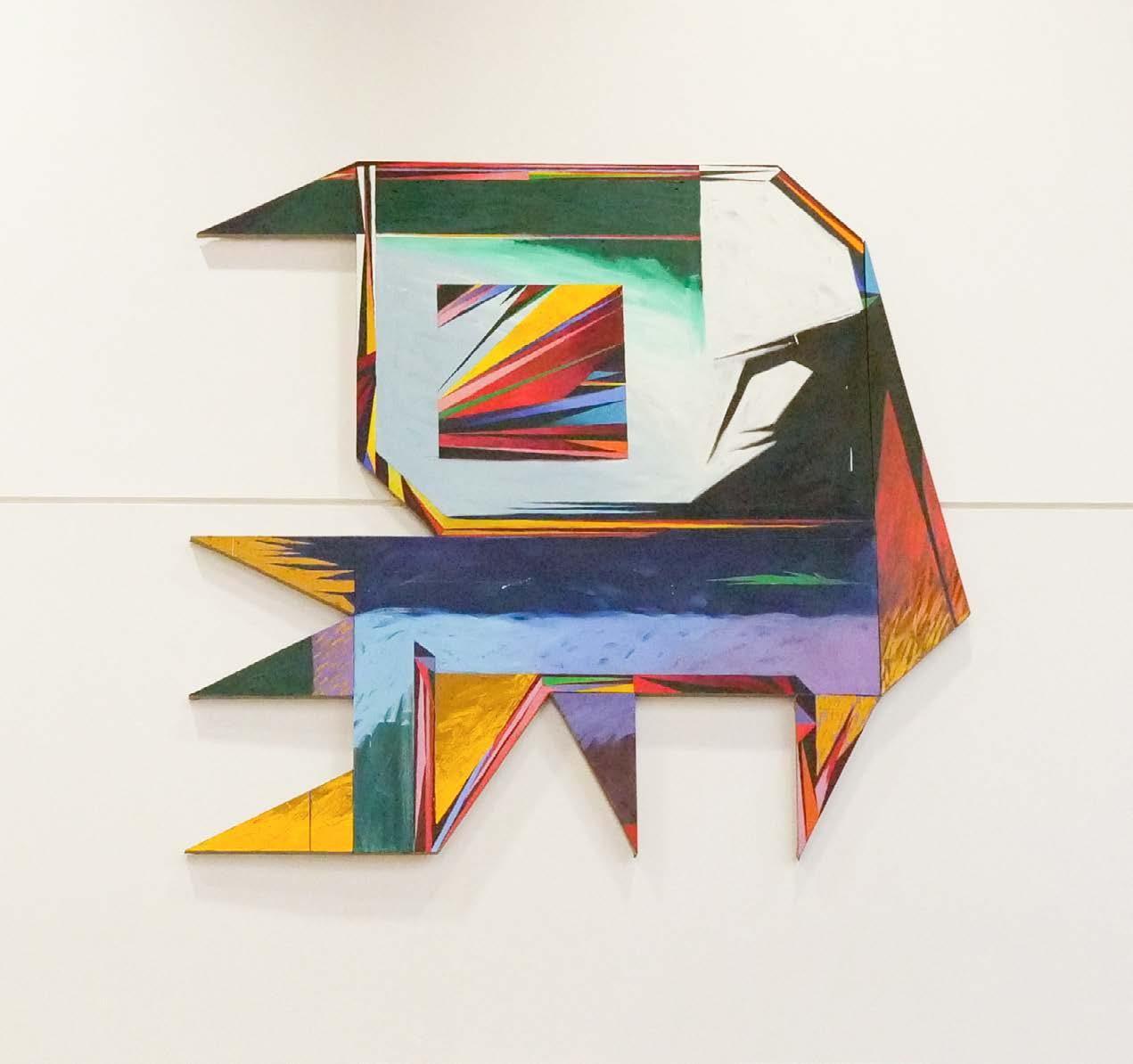

Location: South City Campus, Center for Arts and Media, outside the George S. & Dolores Doré Eccles Art Gallery
Gregory Abbott, born in 1945, grew up in Bakersfield, CA and spent time as a child with family in Parowan, UT. He earned art degrees from Brigham Young University and the California College of Arts and Crafts.
This painting’s pastel colors evoke a weirdly specific era of late’80s/early-’90s southwestern interior design. I worked for years as a real estate photographer, and this particular look has mostly been renovated out of existence. A realtor once described it as “how rich people lived in the ‘90s.”
Beyond the time-capsule living room, I thoroughly enjoy the absurdity of this cow, this queen of bovinity, standing nonchalantly indoors and calmly regarding the viewer as if to challenge their right to be in her house, reminiscent of the bespectacled, Muu Muu-wearing cows from Gary Larson’s absurdist “The Far Side” comic. This is the kind of surrealist art that hits me right in my pleasure centers: nostalgia, unexpected pairings, funny animals, “high” and “low” art co-existing, controlled chaos undeniably funny but not “ha-ha” funny.
Upon closer inspection, you’ll see the fine details of the furniture and the cow’s unique features are rendered beautifully, and the precise drafting of the animal’s anatomy and the room’s architecture give the “joke” a level of seriousness and care that elevates the whole thing far beyond a whimsical idea.

Abbott also superimposes Henri Matisse’s iconic 1910 painting La Danse on the cow’s body, almost as if it was shaved into its fur. This unexpected detail creates a delightful mental whiplash in an already strange tableau, initiating a journey that transcends time and space, bending reality like Abbott’s Surrealist heroes Dali, Miró, De Chirico, Ernst, and Duchamp. We visit Matisse’s Fauvist period in the early 20th century. We scoop up some sample culture innovations courtesy of 1960’s pop art. We crash-land amongst the sly rule-breaking and era-blurring revolutionaries of 1980’s post-pop.
GREGORY ABBOTT
Sacred Cows of Art History: A Recital for Henri 45 x 65 inches

RUBY CHACÓN
Untitled (And Justice for All), 2001
76.5 x 89.5 inches
Location: West Valley Center, Room 123
Ruby Chacón is a living legend in the Utah art scene whose accomplishments are too numerous to list here. But I’ll try, anyway. She is a co-founder of the Mestizo Institute of Culture and Arts (MICA), and her many public art projects can be seen locally and on American Indian reservations as well as internationally in India, Thailand, and Morocco. Her art has been published in books, magazines, calendars, and on the covers of academic texts, and she owns a dizzying collection of prestigious awards.
Chacón strives to inspire a sense of belonging in the art world through identity, culture, and voice. In doing so, she hopes to heal, empower, and inspire creativity and action. I asked her about the inspirations and symbolism behind this powerful painting.
She says it represents the 14th Amendment, and that it “feels more relevant than ever” in 2025. The painting was inspired by two events: The death of Pete Suazo, Utah’s first Hispanic State Senator, and the tragedy of 9/11.
“Growing up in Utah, I rarely saw stories, images, or representations of Chicanx people that weren’t stereotypes,” Chacón explains. “Senator Suazo was the role model my mother always reminded me of,” a correction to the stereotypes that she usually saw in the media and had come to internalize.
Chacón describes Suazo as “a voice for the voiceless.” With “Justice for All,” she raises her own voice while including representation for virtually every demographic in Utah.
LEE DEFFEBACH
Dreams, 1980
Oil on canvas 120 x 72.5 inches
Location: South City Campus, First Floor, Information Desk
Born in Houston, Lee Deffebach was a vitally important Utah artist and a relentless innovator. She graduated from the University of Utah in 1949, then studied at the Art Students League in New York and continued her education on a Fulbright Scholarship in Italy, Turkey, and North Africa.
Her international studies were instrumental in forming her artistic identity as an ever-evolving giant of the secondgeneration Utah Modernists. With her finger on the pulse of the radical changes in style and technique coming out of the New York School of Modern Art, she was an early adopter of abstract expressionism, embracing the style in the ‘50s.
In the ‘60s, she was the first Utah artist to experiment with pop-art assemblages and the only female artist in the state making non-objective abstract art. In the ‘70s, she created massive color-field paintings on canvas.
Her 1980 painting “Dreams” is a monument to her mastery of the many styles of abstract art she had been perfecting in the preceding 30 years. At 10-feet tall, “Dreams” puts Deffebach’s superpower of creating palpable moods and emotions using totally abstract shapes and luminous colors on full display. The massive canvas breathes with the life and energy of an artwork that was birthed spontaneously, as large semi-translucent acrylic washes bleed into each other in a playful, dream-like dance.
Deffebach gave us insight to her creative process in a Salt Lake Tribune article from 1965. “Most serious artists have experienced the surprise situation. The artist tries to express an idea, and it just doesn’t jell. He may work for hours, days, weeks. Then, just as he reaches an impasse, the whole thing comes into focus, the work appears on the canvas or paper as though some invisible force was moving his hand. And when it’s finished, he knows it’s right. And good. The best of which he is capable. And there is deep satisfaction in the knowledge.”
STEVEN J. FAWSON
Weeping Walls, 1985
Oil on canvas
66 x 66 inches
Location: Herriman Campus, Juniper Building, Pre-Event Space Room 124
Salt Lake native Steven J. Fawson has been active in the local art scene for decades and is well known for his surreal still-lifes and his highly realistic figurative works. He was also once heralded by Utah Holiday Magazine for his masterfulyet-surprisingly-affordable portraits.
“Weeping Walls” is a remarkable painting when you realize that it was made 40 years ago. The androgynous teen sporting stylish monochromatic punk rock attire looks like they would be equally comfortable at Club DV8 in the downtown SLC punk scene of 1985 as they would walking into Aces High to see a local hardcore band in 2025.
The look: A mop of expertly disheveled jet-black hair, timelessly hip cat-eye shades, Battalion of Saints tee, leather pants, and white heels has all aged so well. I was legitimately surprised to learn that this wasn’t painted in the last five years. This calm, assertive punk rock energy generated by the relaxed posture, iconic fashion, and total disregard for gender-norms resonates powerfully on a chaotic-neutral frequency that disrupts mainstream culture and gives life to goth kids of every generation.
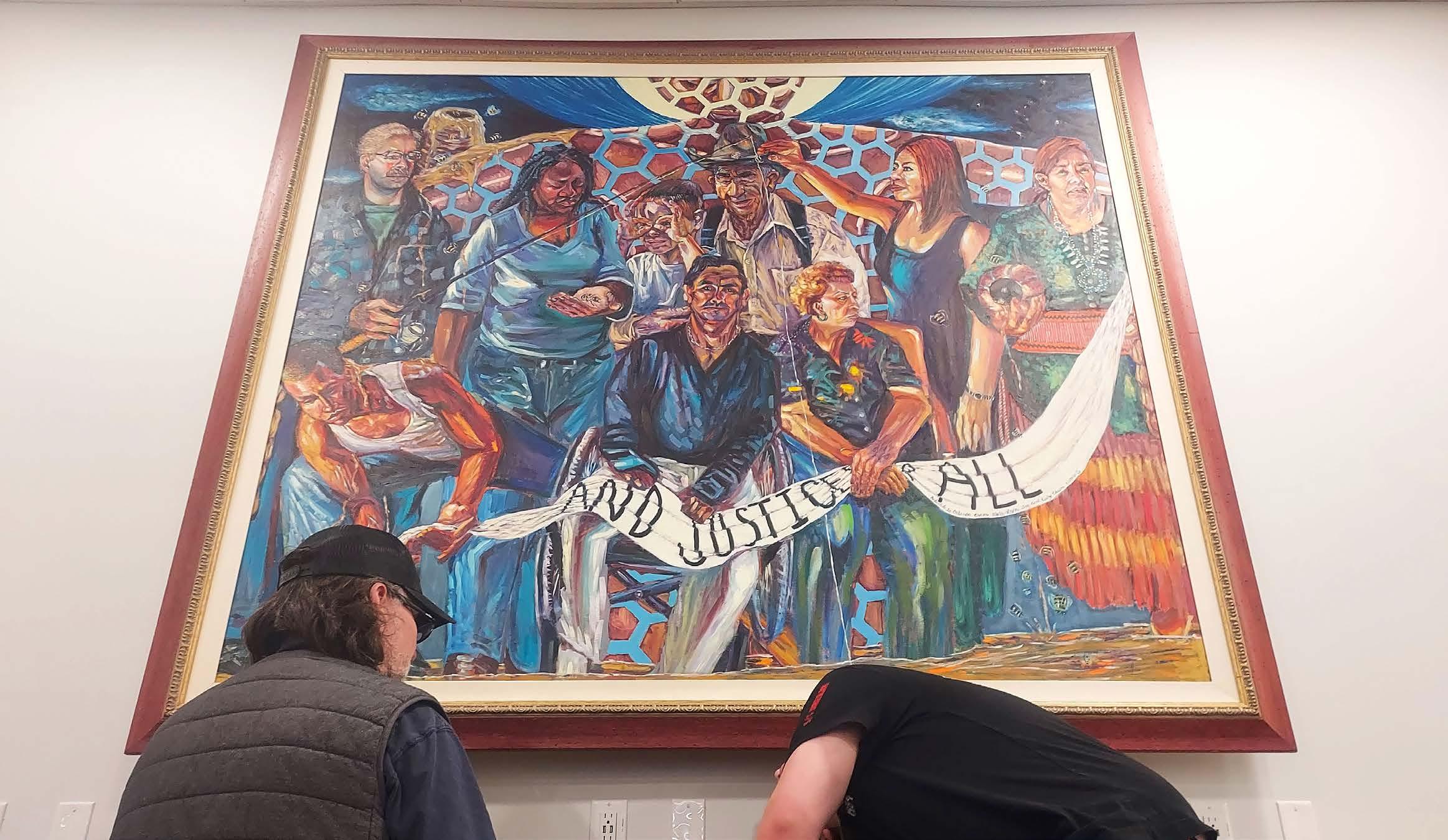

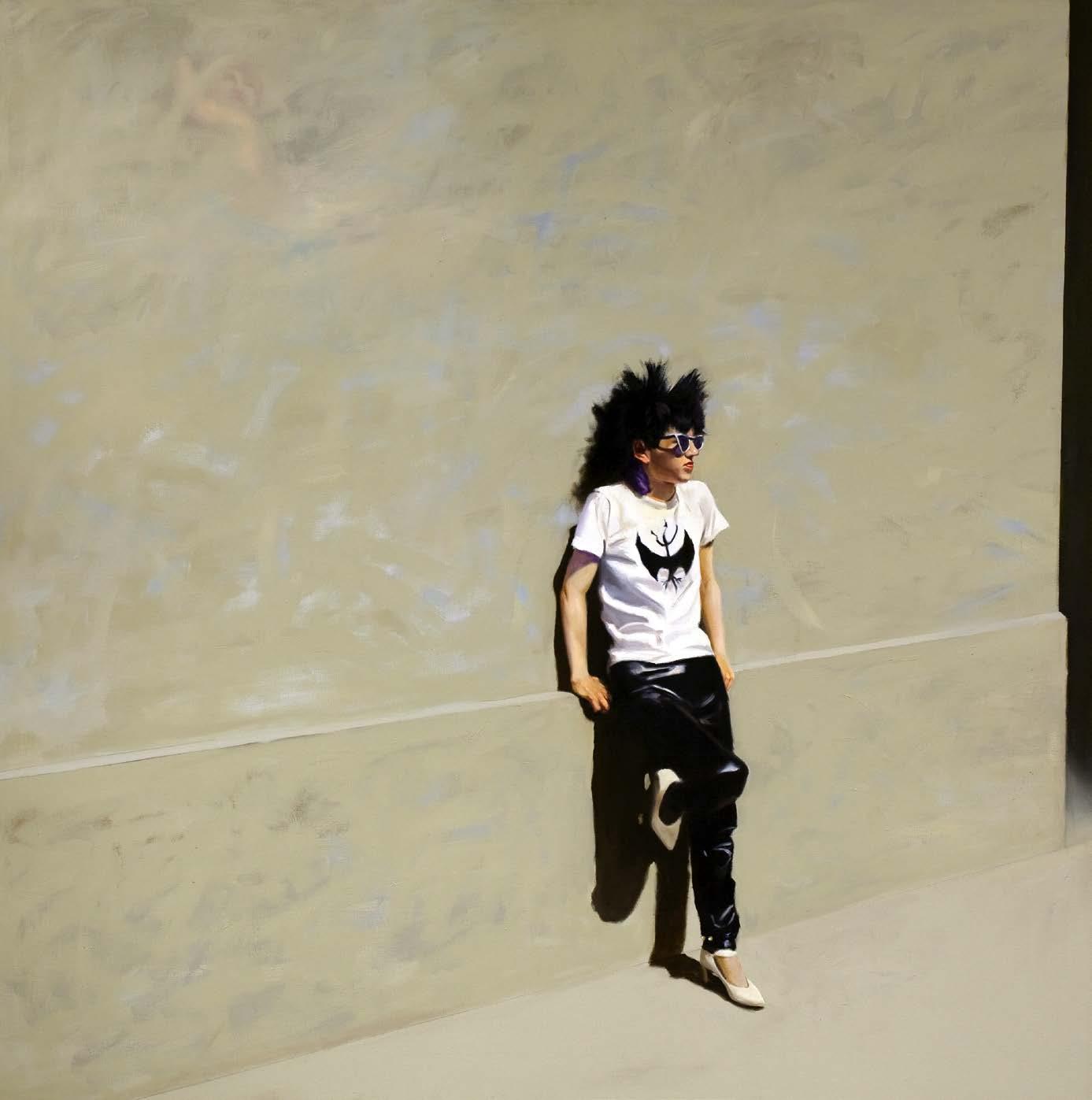
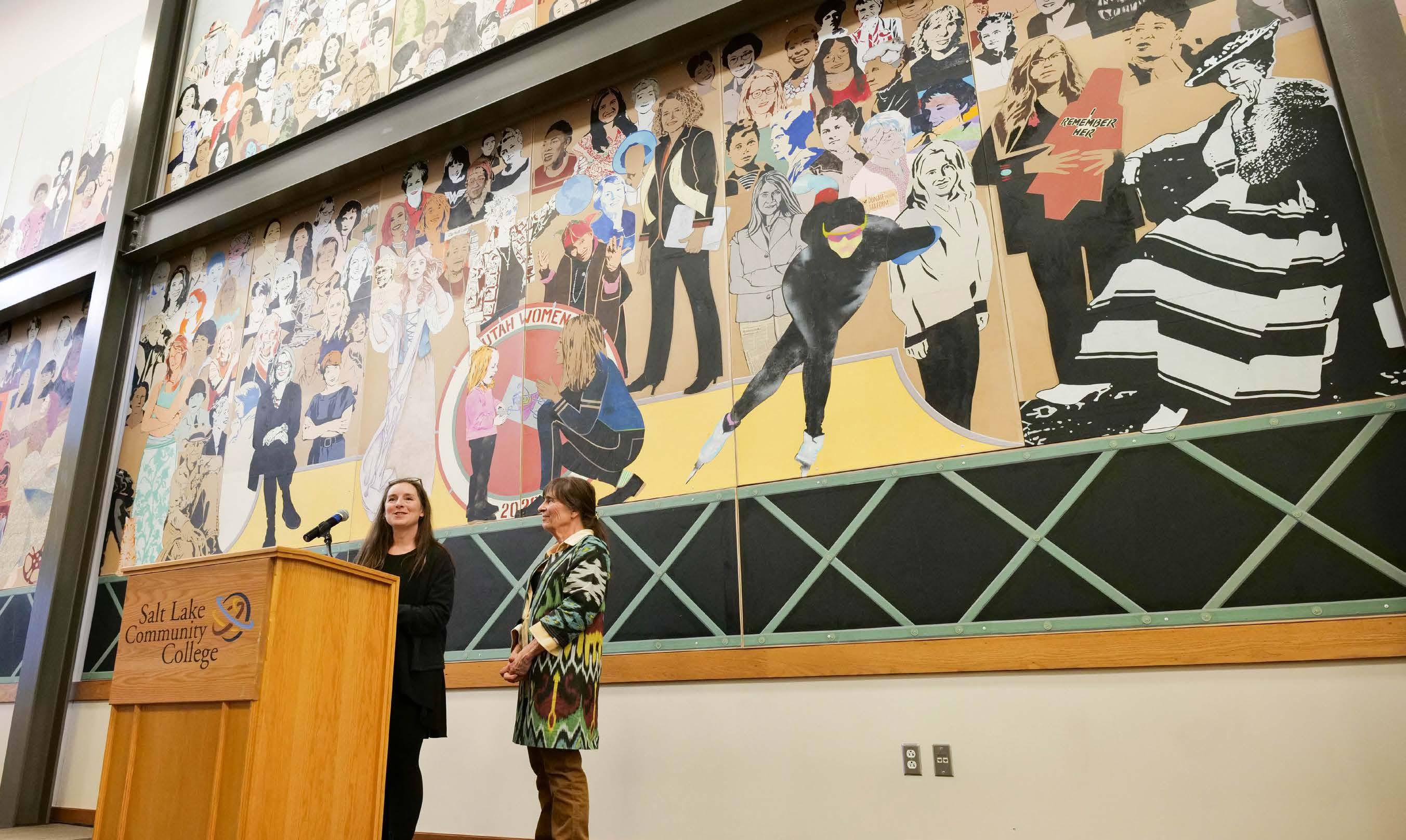
UNFRAMED UTAH WOMEN,
CELEBRATING PAST, PRESENT, AND FUTURE GENERATIONS OF THE WOMEN WHO BUILD THE BEEHIVE
By Peta Owens-Liston and Rob Ware
The “Utah Women Mural” now has a permanent home in the Atrium of Salt Lake Community College’s South City Campus.
The massive collage comprises over 350 individual stencils produced by over 300 artists of varying expertise. The project was led by Jann Haworth, a pop artist and soft�sculpture pioneer who also designed Salt Lake’s “SLC Pepper” mural and its reference piece, The Beatles’ iconic 1967 album cover for Sgt. Pepper’s Lonely Hearts Club Band. The mural was co�installed by Haworth’s daughter and fellow artist, Liberty Blake.
According to one of the women included in the mural, Dee�Dee Darby�Duffin, every woman represented has one thing in common: she’s formidable. But Haworth insists that formidability doesn’t necessarily mean each woman is a titan of industry, an accomplished athlete, a surgeon, or � as with Darby�Duffin � a singer, actor, and stage director. Instead, the project celebrates all Utah women, levelling the idea of who qualifies as the subject or creator of art.
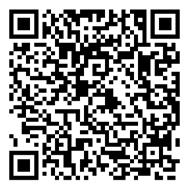
The “Utah Women Mural” can be accessed online, including a panel-by-panel guide to identify the name and artist for each included figure.
“This mural is about equality and fair representation � the women in it are from all walks of life,” Haworth explains. “And it has been created by individuals from all artistic backgrounds, many not formal artists but who are teachers, nurses, and lawyers. It opened the art process to everyone.”
“It is truly a community�oriented artwork,” confirms James Walton, who co�chairs SLCC’s Art Committee and manages the College’s art collection. “With so many different artists involved, you see this incredible variety of styles and skill levels that capture a wonderful diversity of looks and personalities that would be impossible to achieve from a single artist.”
The mural’s riot of colors and styles is as diverse as the lives of the women depicted. In remarks at the mural’s unveiling, former SLCC President Deneece Huftalin highlighted that range of representation, noting the inclusion of such disparate political figures as Republican Olene Walker, the state’s first female governor, and Heidi Redd, the cowgirl conservationist from Dugout Ranch who often serves as the ecological conscience of Southern Utah.
Huftalin herself is also in the mural � it’s dedicated to her tenure as president of SLCC � and she shares space with women like Neylan McBaine, who founded the Mormon Women Project and co�founded Better Days 2020, and Gail Miller, namesake of SLCC’s Gail Miller Business School. Holly Yocom, former director of Salt Lake County’s Department of Community Service, anchors the piece in the bottom center with her daughter, Harper. Yocom’s mother, Billie Jean Martak, is also in the mural, making those three the only generational trio represented.
Not all of the women depicted are native to Utah, but they did grow in � and catalyze the growth of � the state during their
lives. Darby�Duffin, originally from Baltimore, illustrates this point. “Myself and Utah have grown up together. I came here with the hopes of changing the trajectory of my life, and I did that,” she says. “It was a gift to myself.”
The SLCC mural was adapted from a 2020 mural that commemorates the centenary of women’s suffrage and the 150�year anniversary of the first woman to cast a ballot in Utah. Both murals were commissioned by Zions Bank Advisory Board Chairman Scott Anderson on behalf of Zions Bank, with the SLCC Foundation contributing funding for the South City Campus mural. The earlier project was led by Haworth in collaboration with her son, Alex Johnstone, and remains viewable on the eastern face of the Dinwoody Building in downtown Salt Lake City.
Blake created the new mural with the original paper portraits, which are also part of SLCC’s permanent collection. She installed those originals, plus some new additions, on expansive wood panels with a correspondingly large amount of wheat paste (“buckets of glue,” Blake emphasizes) to create this new iteration.
Haworth sees the “Utah Women Mural” as an important corrective to her most well�known work, calling it “an apology for the near complete absence of women in the Sgt. Pepper design.” With the “Utah Women Mural,” Haworth addresses that lack in two ways.
The first is, of course, in the mural’s title and content. The second is more subtle.
Haworth added a figure in a blue hat with a blank face as a way for observers to project any girl or woman from their own lives � including the viewer herself � into the mural, making the work a living tribute to Utah women that will continue to evolve with future generations.
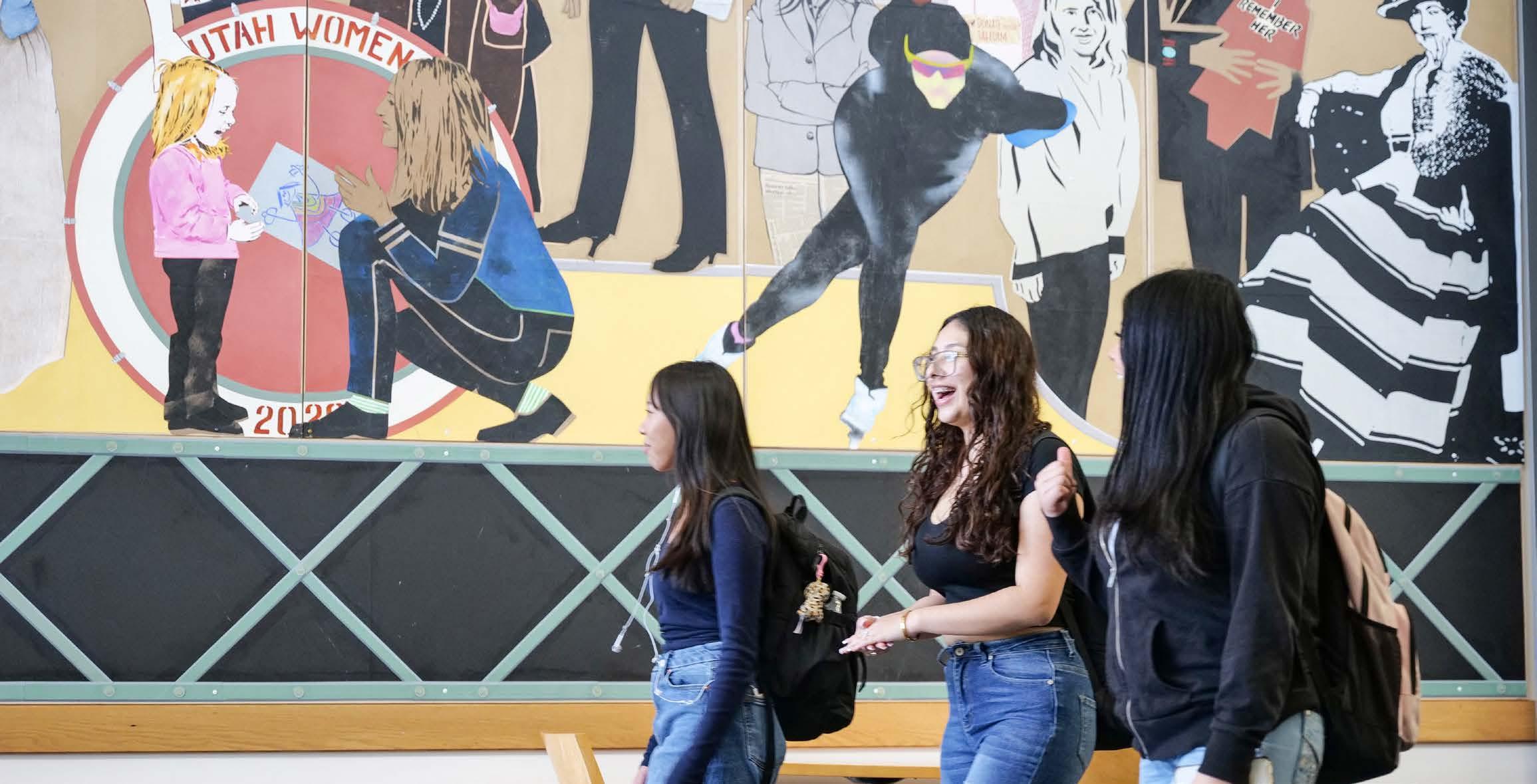
MTHE UTAH WOMEN MURAL
The “Utah Women Mural” at SLCC’s South City Campus Atrium is divided into six distinct panels by I-beams, part of the building’s exposed industrial infrastructure. The literal supports are echoed by virtual ones the base of the mural is a row of girders joined by bolts, which may be a nod to Rosie the Riveter (who’s included in the mural) and also the idea that these and other women are foundational elements of the state.
The girders themselves are the same oxidized green as another womancentered monument, the Statue of Liberty, and the negative space is exactly that: negative, solid black, further emphasizing the idea that the women depicted are critical to establishing the cultural, social, economic, medical, scientific, and political structure that gives Utah its shape — a foundation for future generations to continue building.
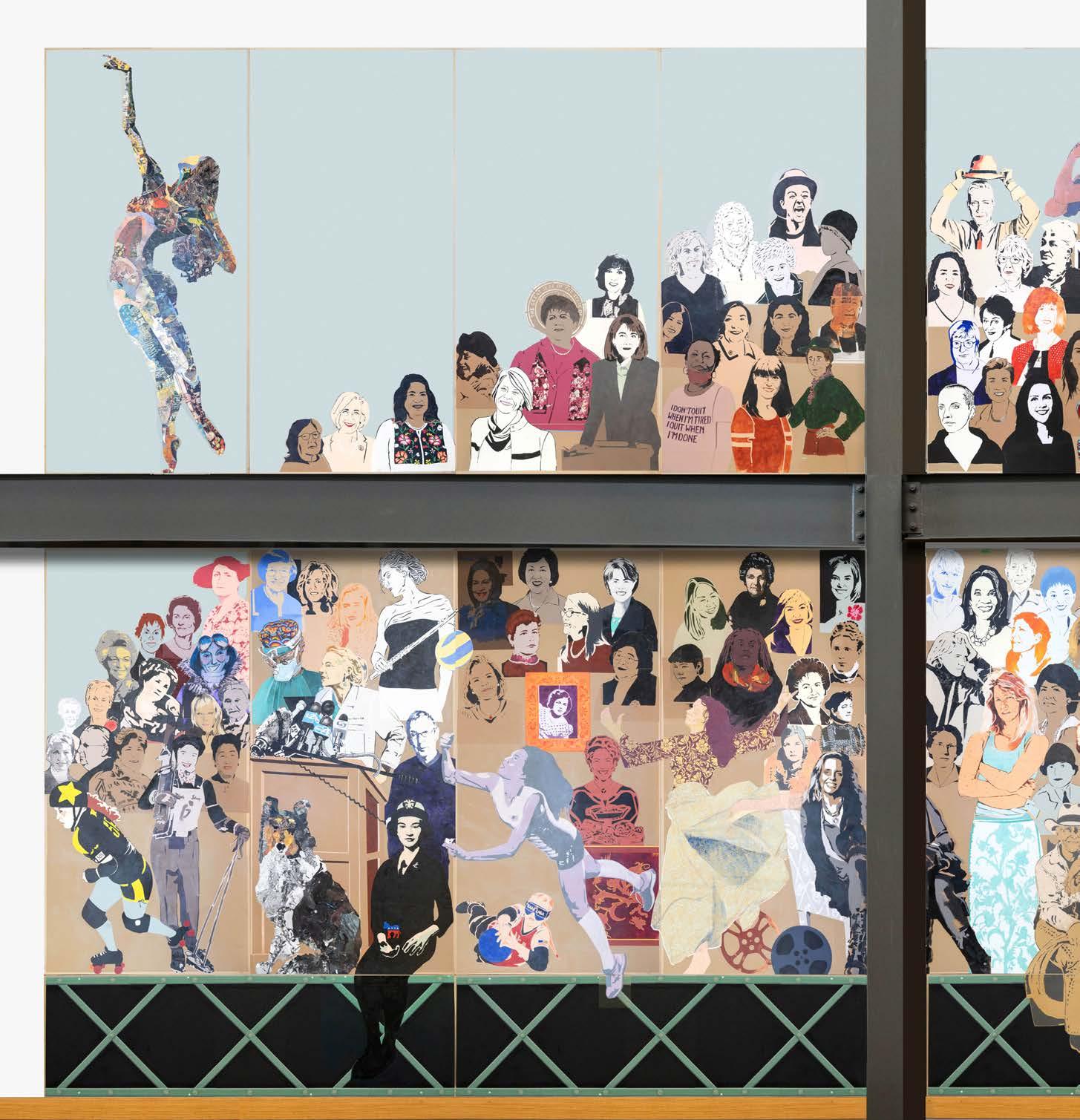
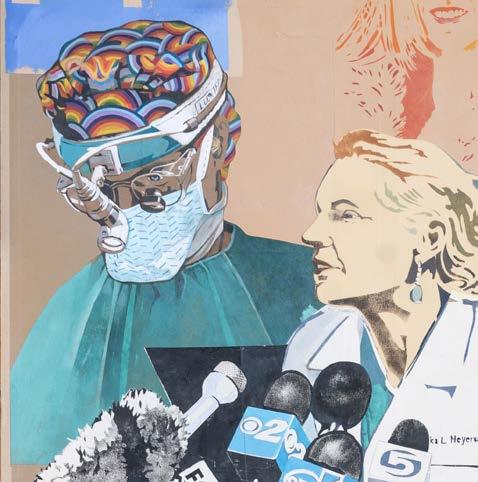
Rebecka Meyers, MD
Much of the work that Dr. Meyers has accomplished during a decades-long career as a pediatric surgeon could easily be considered miraculous, but one moment stands out. In 2006, she led two separate teams in a 16-hour surgery to separate twins conjoined at the hip who shared a pelvis, liver, and large intestine. The twins also shared a kidney, and this surgery was the first time that conjoined twins sharing a kidney had been successfully separated.
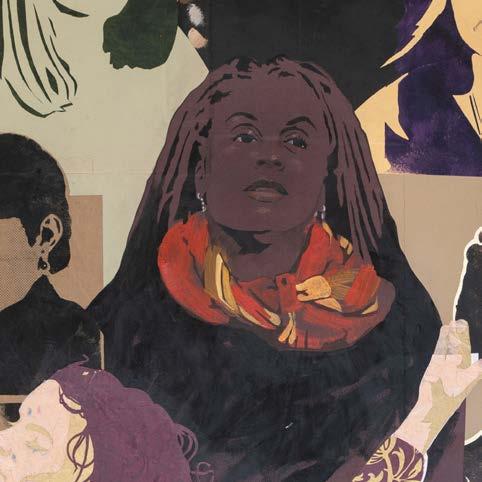
Dee-Dee Darby-Duffin
Darby-Duffin checks every box you’d expect from a multi-talented performer: actor, singer, playwright — if there’s a stage involved, then she’s mastered the craft. The Baltimore native blazed onto the Salt Lake City arts scene with a performance as Billie Holiday in Lanie Robertson’s Holiday biodrama, Lady Day at Emerson’s Bar and Grill. She’s been burning through dramatic roles, sets of jazz standards, and leadership roles in the performing arts ever since.
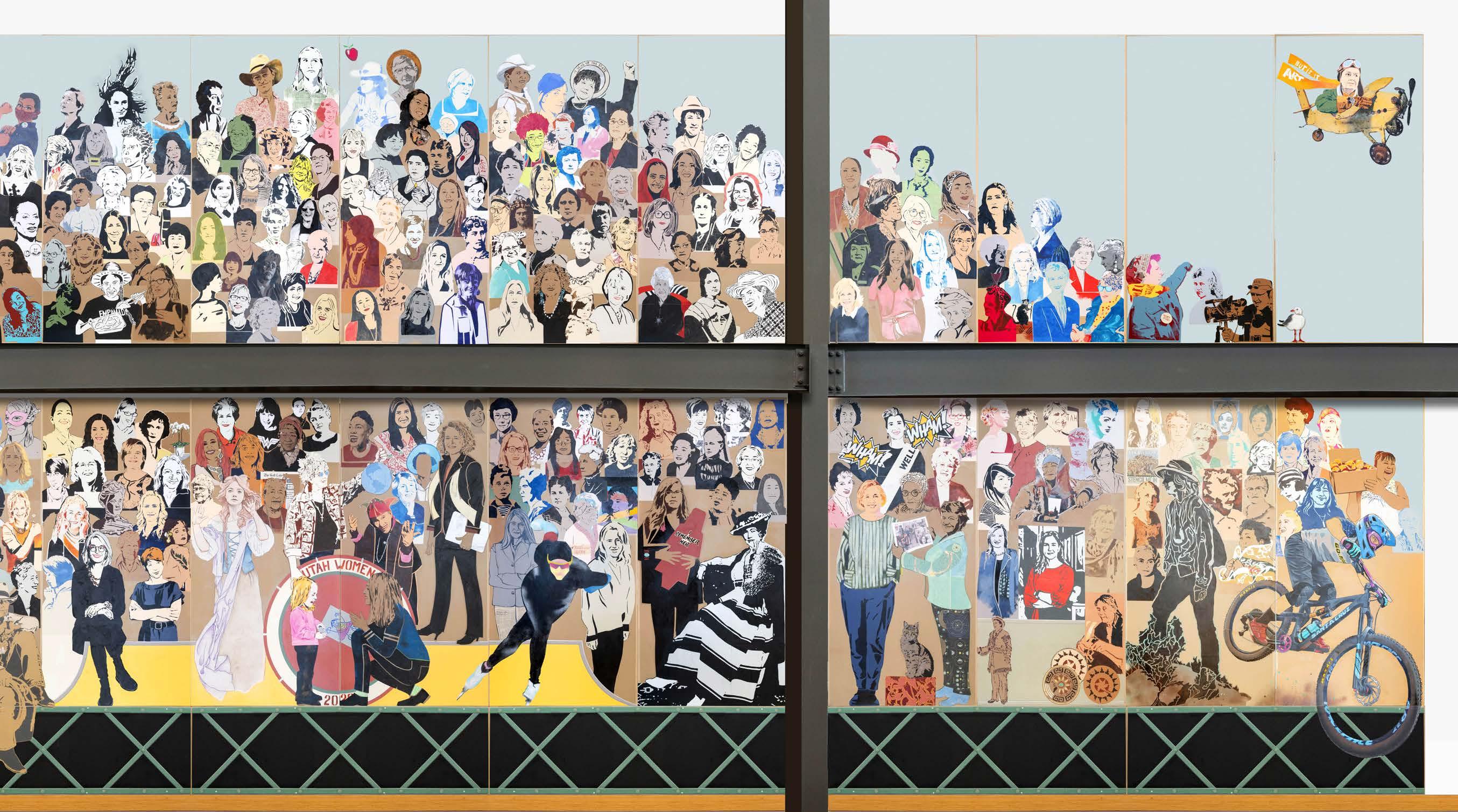
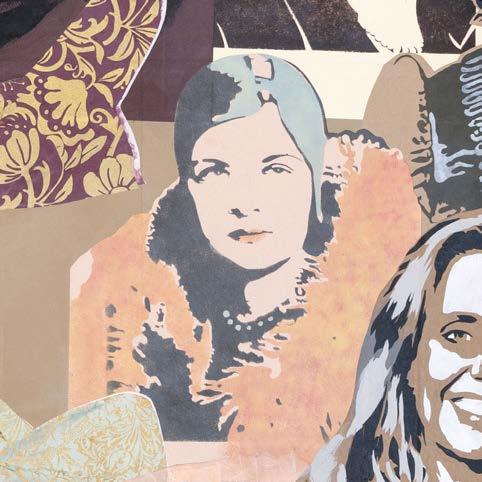
Helen Foster Snow
Snow — alias Nym Wales — is a Utah woman whose biggest impact was literally on the other side of the globe. Her footsteps led from Cedar City through Salt Lake City to China in 1931, where she dove into global culture as an aspiring novelist. A strong pen, a distaste for injustice, and a penchant for storytelling inevitably led to a career in journalism, which in turn led to war correspondence and a more clandestine career as an activist against Japan’s occupation of China in WWII. She was well-fêted, with two Nobel Prize nominations and an official memorial service in China’s Great Hall of the People — a rarity for non-Chinese.
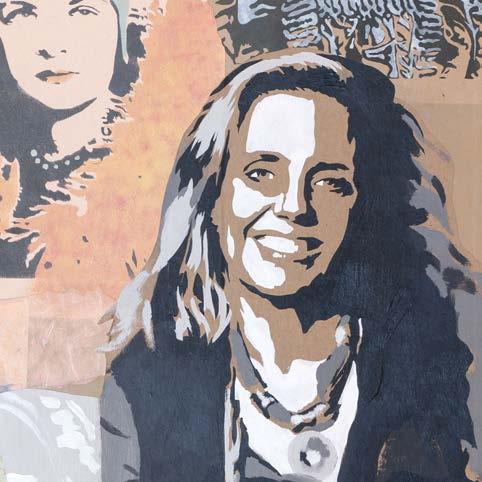
Geralyn Dreyfous
With an Academy Award, a Peabody Award, an International Documentary Association Amicus Award, and an Emmy, Dreyfous isn’t hurting for laudatory hardware. But the real reward in her work is in helping others tell stories in films like The Invisible War (2012), Won’t You Be My Neighbor? (2018), and the Oscar-winning Born into Brothels (2004). Dreyfous’ oeuvre is characterized by an effort to platform stories that improve the lives of others, and that activism continues with leadership roles at the Utah Film Center, Impact Partners, and Gamechanger Films.
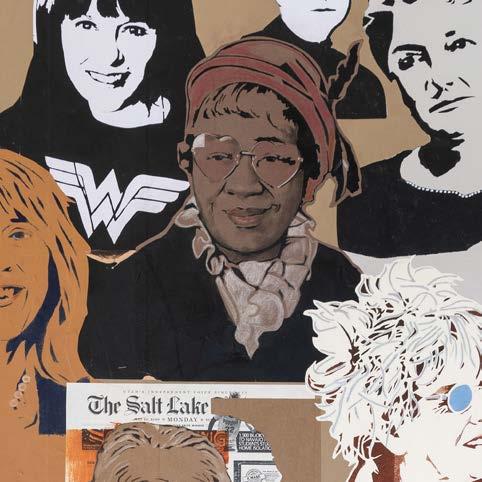
Ruby Timms Price
“Grandma Ruby” was described by her daughter as an entire movement all by herself. A cursory review of her life proves the point. She was a humanitarian, an educator (often credited as the first Black teacher in Utah), chair of the Davis County Republican Party, founding president of Utah’s NAACP chapter, namesake for four Davis School District scholarships, and recipient of the Huntsman Award of Excellence in Education.
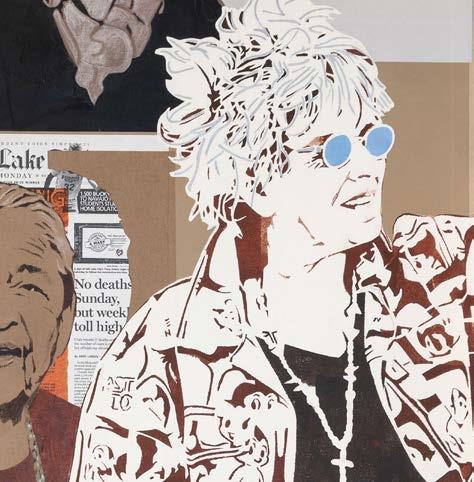
Mary Malouf
Mischievous, the North Star, culinary queen, deity, Bronte and Melville superfan — the qualifiers written in memoriam of the former Salt Lake Magazine editor are only limited by the imagination of those applying them. The quippy, easy wit evident in her own writing demonstrates that Malouf herself never had trouble finding the right words, and her thoughtful analysis of topics from food to Utah history remains as a monument to a life of cultural influence and gustatory joy. Those who had the privilege to know her off the page confirm that impression.
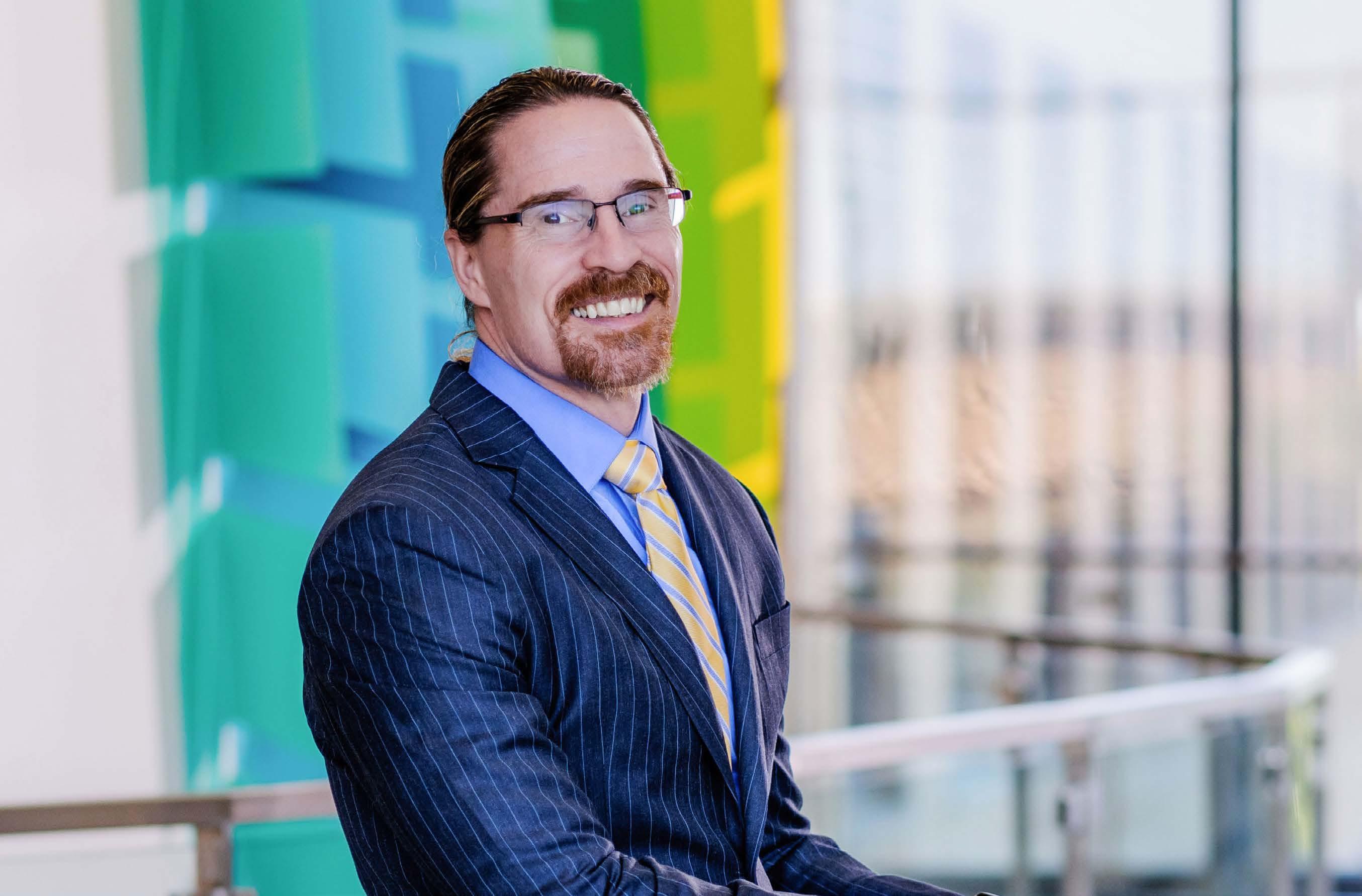
Opening Doors
By Rob Ware
THE MAN IN THE CHUCKS
While acting in his official capacity as Salt Lake Community College’s ninth president, Greg Peterson’s style rarely deviates from an established pattern: a suit, a tie, mid�length hair pulled back neatly, and a pair of Converse Chuck Taylor All Stars. On anyone else, the Chucks might seem like an affectation; for Greg, they’re a statement of purpose.
“The Chucks are part of being approachable,” he says of the incongruous footwear. The shoes demonstrate that he’s connected to the immediate, on�the�ground experiences of staff, faculty, and students.
The Chucks “indicate an openness and an invitation,” says Marjorie Wilson, an SLCC student who participated in
the Presidential Search Committee and has since worked with Greg on various campus initiatives. “He invites everyone to communicate their needs so that he can be a good leader.”
When assessing Greg’s leadership style, Wilson returns repeatedly to “inviting” as the defining aspect: a conscious, intentional push to encourage collaboration, make connections, and open doors rather than compartmentalize and throw up barricades.
Amanda Covington, chair of the Utah Board of Higher Education, gives a similar assessment, saying Greg “brings a quiet, compassionate confidence to his leadership � he listens and understands, then he gets to work.”
Inviting as many students as possible
through as many open doors as possible is a central tenet to the mission of SLCC. It’s also always foremost in Greg’s mind. He’s a self�described “system thinker” who recognizes that every system comprises individuals and every individual has specific needs informed by a unique experience. Any system that fails an individual is itself failing. This position is best demonstrated by an experience during his first summer at SLCC.
Greg recalls speaking with a staff member who told him about a young man who grew up in foster care, struggled through high school, and demonstrated interest in higher education. “He had a couple of brushes with Salt Lake Community College,” explains Greg, “but he hadn’t landed yet. That was really
As SLCC’s ninth president, Greg Peterson brings an inviting, empowering vision to SLCC
powerful. This idea that for this one student, we really are the option for his success,” he says. “We can’t give up on him.”
In that one student, he sees every student, with their own individual experience, needs, and circumstances. Higher education � especially at the community college level � should make supporting that student its primary mission.
This isn’t just a theoretical exercise in administrative leadership, just like his Chucks aren’t just a symbolic gesture toward relatability. He knows this because he learned it firsthand. Despite ultimately completing several degrees, culminating in an EdD, Greg was once also that one student who hadn’t landed yet.
Understanding some of the obstacles he encountered in his own academic journey reveals how � and why � he approaches higher ed administration with the invitational, listen�first leadership style that Wilson, Covington, and others attribute to him.
LEARNING THE VALUE OF ACCESSIBILITY
Growing up in an economically marginalized Oregon community, Greg saw a limited list of available career options, headlined by the postal service, mill work, teaching, or joining the police force. An interest in service reduced the list to two, teacher or police officer, and Greg’s police�officer father vetoed the latter. Having enjoyed his youth in the classroom, Greg saw a potential future there. Teaching got the nod.
He knew that the first step was college, but as a first�generation student, he didn’t
know how to actually take that step. When he tried, Greg ran up against an immediate and sustained series of closed doors. The first was affordability.
“I knew we couldn’t afford college, but I also didn’t know anything about FAFSA,” he says. Like that one student, Greg saw community college as his only option, economically, so he began as a part�time student. Shortly into his academic journey, he experienced a second barrier: lack of support from the institution itself.
“I took my transcript in, waited an hour to meet with an advisor, and he said, ‘What do you want to do?’” Greg recalls of his first experience. “I said, ‘I want to be an elementary school teacher.’ He looked at my transcript and said, ‘No, you don’t.’” Without any real understanding of the opportunities available to him, Greg was in no position but to agree. “I said ‘no, I don’t,’” he admits.
“Advising is a challenge for students because you need a master’s degree in education to even understand a course catalog,” he says only half�jokingly about the complexity of mapping an educational pathway toward a desired outcome. More than help to navigate the options available to him, Greg needed guidance to even understand that there were options. Instead, he met with an authoritative voice telling him, effectively, “No,” preemptively and definitively closing doors that he didn’t even know existed. Greg asked what he should do instead, and he recalls the advisor saying, “You’re gonna have to come back for that.”
Rebuffed and unsupported, he didn’t go back, and his first brush with higher
“The mission of a community college is to make education possible for anyone who’s willing to put in the time and effort.”
education came to an end. He hadn’t landed. Yet.
DEFINING THE ROLE OF HIGHER EDUCATION
Greg did eventually land, taking classes at Ricks College (now Brigham Young University�Idaho), where he pursued a dual major as incongruous as his signature suit�and�Chucks combo: English and Biology.
As a common pathway to teaching, English was his plan all along. The addition of Biology was not planned, nor was it because he discovered an innate talent for the hard sciences � Greg was and remains a humanities man, system thinking and all. The difference was his professor. “I had this faculty who was so amazing,” he enthuses. “She inspired me, and I fell in love with Biology.”
That love transferred with Greg to BYU’s flagship campus in Provo for his four�year degree. Two more science classes confirmed the connection; however, the third class severed it, closing yet another door. Like with his earlier positive experience in the sciences, Greg credits � or in this case, faults � the professor for this negative experience.
“I had a faculty member who didn’t want to teach, who was there only to do research,” he laments. Instead of support, guidance, or even basic encouragement, Greg says the professor explicitly offered this message: “Well, some people just aren’t cut out for the sciences.”
The professor treated that idea as a hypothesis, and he used the class to prove it. By the end of the semester, a third of the
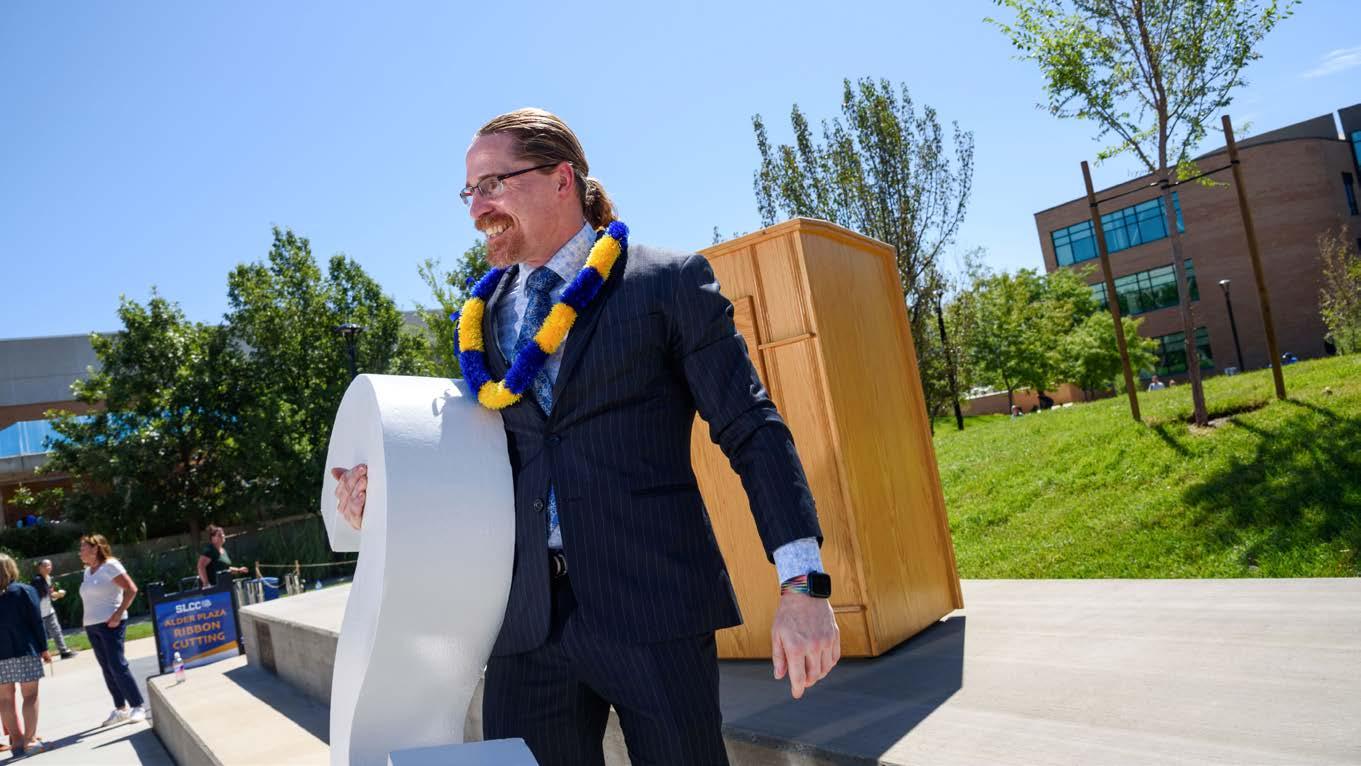
students were no longer studying science. “He had weeded us out,” says Greg in retrospect.
Later, as a young adjunct teaching ESL classes at a community college, Greg encountered a different, more passive form of weeding out, this time affecting the students he taught. Almost all of the dozens of students he saw each semester planned to transfer to a four�year institution. While serving on a committee, he learned that virtually none of them would make it through the transfer pathway.
“Our systems weren’t working for these students,” he says. That realization propelled him into administration, where it � and the barriers he’d encountered during his early student years, before he “landed” � prompted him to consider questions about education’s role.
“What is the role of higher education institutions?” he asks, setting up a series of binaries. “Are we in service of our students, or are we in service of our discipline? Are we gatekeepers, or are we helping people through barriers? How do we change systems to really support student learning and success?”
Though the questions are binary, Greg’s answers are less either/or and more both/ and � typical of his style of inclusive, collaborative problem solving.
“There is definitely this idea of protecting disciplines and knowledge, and there does need to be a certain standard of work,” he explains. He also immediately complicates that idea by noting the risk of erecting barriers for students who may not
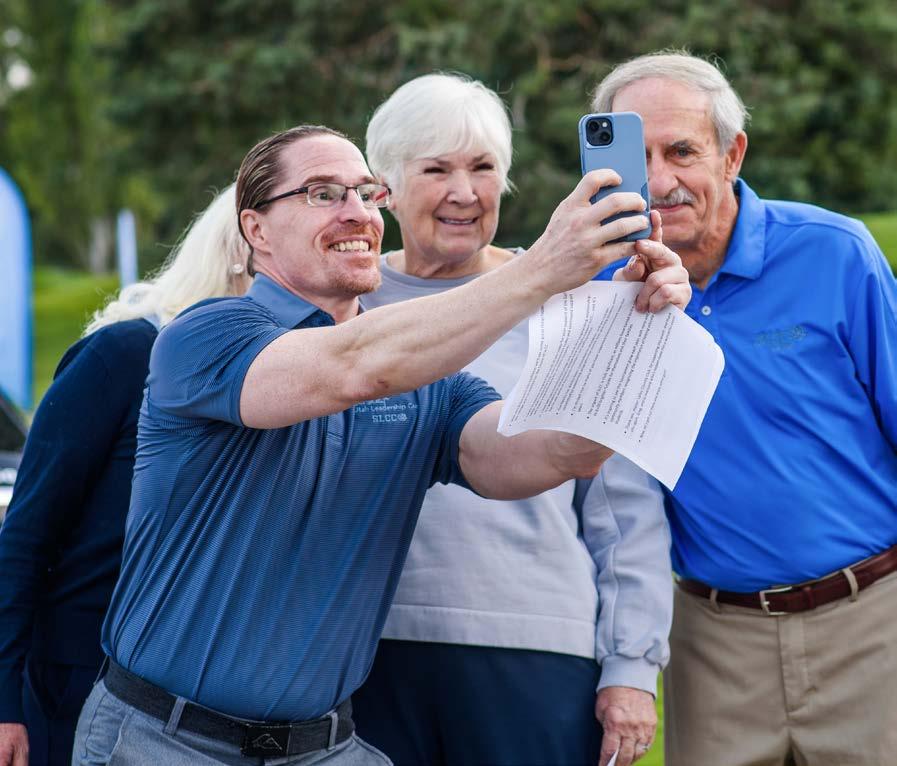
already have the expertise and knowledge to excel in a field of study or a profession, but, if given the chance, can gain them through learning and growth � the things that define education. Navigating that balance is even more important for SLCC than for a four�year institution.
“The mission of a community college is to make education possible for anyone who’s willing to put in the time and effort,” Greg says. “We can really embrace our students where they are, and say, you know, it’s not our role to gatekeep. It’s our role to be really clear, to help communicate those paths, to help students access those connections and move forward.”
PERSONAL EXPERIENCE, INSTITUTIONAL VISION
Greghimself is constantly moving, on foot in his Chucks, through SLCC’s campuses. When he does, he makes a point of embodying the accessibility a community college should have. “I want you to see me as part of the institution, and I want you to see me as accessible,” he says. “If I’m accessible, then the institution’s gotta be accessible, too.”
Apparently, it’s working. Shortly after Greg arrived at SLCC, Wilson, the student on the search committee, approached him about some campus initiatives she was pursuing. She was impressed not only by his accessibility, but also by that invitational style of leadership and his insistence on learning about her own experience.
“Very first in our meeting, he wanted to know me,” she recalls. “He wanted to really meet me and know who I was.”
Convington, from the Utah Board of Higher Education, attributes that impulse to know students to Greg’s own experiences with institutions that seemed uninterested in knowing who he was. “He has a personal understanding of the challenges many SLCC students face,” she says, “and that empathy drives his commitment to making higher education accessible and meaningful.”
Greg was dismissed, weeded out, and, as an adjunct faculty, witnessed administrative indifference to the obstacles faced by students. Those experiences helped him become “a visionary leader with a proven track record of success in community colleges and higher education,” according to Covington. From his early committee work to his first presidential role at Chandler�Gilbert Community College in Arizona, Greg has led key efforts in student learning and success impacting over 100,000 students. Now, he’s continuing that work with his first major initiative as SLCC’s president, the 2025 Vision Matrix.
The Vision Matrix’s three objectives � to engage students with easy access, guide and facilitate degree or certificate completion, and ensure graduates are positioned to thrive financially � are almost all exact remedies to the limiting experiences that so many students, including Greg himself, encounter in higher ed.
Entering as a first�gen student? Expanded concurrent enrollment opportunities create a bridge from high school to college, and simplified pathways eliminate confusion. Instead of college
being an “I guess so” option, it can become the plan, and students will have the chance to explore different opportunities before committing to a single pathway.
Uncertain about enrollment or coursework? Supplemental instruction and expanded access to advisor support help chart a course that doesn’t end with being weeded out by a disengaged professor or shrugged off by a negligent advisor.
Worried about post�college professional prospects? Perfectly reasonable. Work�based learning, internship opportunities, and coursework coordination with industry partners create real opportunities (and increased earnings) for students earning degrees and certificates alike.
GRACE & PURPOSE
The Vision Matrix objectives represent tangible, measurable impacts on students’ lives, and they’re informed not only by Greg’s immediate experiences, but by his practice of inviting input from every higher ed community he’s been part of. But his leadership style also privileges another angle, rooted in the less tangible, unquantifiable aspects of higher education: the importance of students learning that they belong, that they have value, and that they deserve grace from
themselves. These are all lessons that Greg had to learn himself.
“I laugh when people say, you know, ‘Greg, you do this really well,’” he says, actually laughing softly in his reserved way. “I think, ‘oh, if I could just tell you the seven times I messed up, the seven times it took me to figure out how to do this well.’”
The thought of becoming a college president was “daunting” to Greg. It required perfection, which he didn’t see in himself. “I looked at some of my heroes in the space, the type of leaders that they were, and I just assumed that they were born that way � seasoned, thoughtful, knowledgeable, patient, kind leaders,” he says, “and so I never saw myself as being one, because I was so flawed.”
Though not completely free from self�doubt today, he’s grown beyond those initial fears through moments where he felt lost, but “the next door opened, and I stuck my foot through, and it led to such a great place.” The Chucks now serve as a reminder of those foot�in�the�door moments, maintaining perspective by reminding himself � and everyone else � that his own life is a continual process of growth, never a perfect, finished product.
Greg’s struggles with self�doubt, worrying whether he really belonged anywhere, began when he was growing up
gay in a rural Oregon community. Those worries followed him through college, where his experiences at institutions like Ricks and BYU often reinforced a sense of alienation and, at times, pushed Greg into what he calls “dark moments.”
“It really struck me that I needed to love myself, which I think opened up a love for others.” He pauses thoughtfully here before continuing, a note of insistent kindness in his voice. “If we could teach all our students one thing, for me, it would be grace for themselves. I don’t know about you, but I can give grace to others a lot easier than I can to myself.”
That empathy for others has been with Greg since he was first planning a career � as a young man, he made “Where can I make a difference?” his guiding principle � and it now informs his people�first approach to system thinking. From the strategic impact of SLCC’s Vision Matrix to the inviting accessibility signaled by his iconic footwear, it’s the reason that his priorities are to open doors for all students to explore opportunities, advance careers, and contribute to their communities.
“Purpose feeds joy, the ability to do good, and to have an impact even in small ways that will trickle up in large ways,” he concludes. “Making one life better makes multiple lives better in turn. That is powerful.”
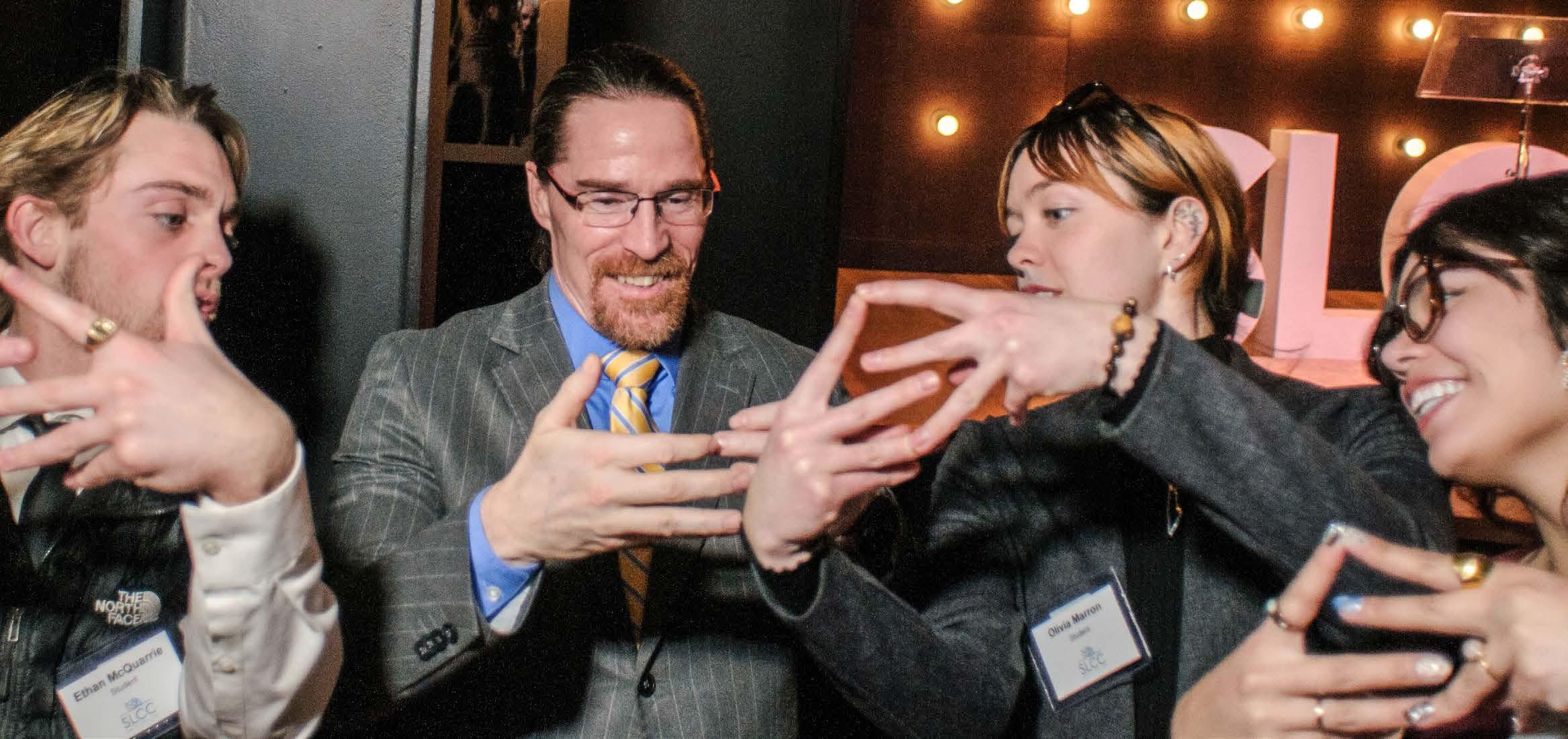

50,000
Students enrolled + retained
DIncrease in timely completion rate for certificates + degrees COMPLETE 50%
Increased median earnings for graduates THRIVE $5,000


While developing a long-term Strategic Plan, President Greg Peterson and the College’s senior leadership are implementing an 18-month Vision Matrix. The Vision Matrix serves two functions: providing immediate guidance to build upon existing initiatives and priming the College for the Strategic Plan. Its themes of engage, complete, and thrive are designed to support every step of a student’s SLCC journey.
On the front end, increased focus on concurrent enrollment and simplified program pathways will help SLCC engage students earlier in high school and clarify their higher-ed journey after they’ve graduated from the K-12 system.
Once they’re Bruins, students will benefit from increased support in foundational gen ed courses and focused outreach from academic and career advisors, helping them complete their SLCC goals in less time.
Finally, SLCC’s impact on a student’s life doesn’t end after their coursework is complete. Expanding work-based learning and internship opportunities while building stronger connections with industry, non-profit, and policy partners will equip students with tools they need to thrive after graduating.
THE SCIENCE OF HEALING AND THE ART OF COMPASSION
By Verónica Aguilera Sánchez
The Salt Lake Community College School of Health Sciences is revolutionizing the educational path to health professions inside and outside the classroom. The division’s nine programs prepare students for future careers by equipping them with necessary knowledge and skills while providing multiple opportunities to practice those skills as community service.
The School of Health Sciences is not only developing competent professionals. According to Dean Robert W. Pettitt, it is also creating compassionate healthcare by promoting what he calls the “science of healing and the art of compassion.”
“Our school is not in the business of producing robots,” Pettitt says. “We aspire to develop practitioners who begin their degree experience with a heart and soul for helping others.”
As SLCC students step into their new roles in sensitive career fields that are driven by science, they carry the lessons of compassion, patience, and understanding, providing care while aiding people in their most vulnerable moments.
INNOVATIVE ADMISSIONS
SLCC’s School of Health Sciences is one of five schools across the United States to receive a grant to study a more comprehensive admissions process that focuses on the whole person rather than only on academics.
Recognizing that the traditional admission processes in healthcare programs may inadvertently exclude deserving candidates, SLCC School of Health Sciences has adopted an innovative, multi�faceted review process. Cher Knupp, the Health Sciences admissions, recruiting, and marketing program manager, was pivotal in revamping the admissions strategy.
“We wanted to address the barriers faced by non�traditional students, including those making career changes or older adults pursuing new paths,” she explains. “Not everyone has a perfect academic record, but many possess valuable life experience and
skills that translate beautifully into healthcare and helping those in their healing time.”
Expanding access to education has boosted the programs at the School of Health Sciences, as they have a wide range of students, voices, and perspectives that enrich discussions and learning experiences. This encourages a culture that values collaboration and diverse viewpoints, which is vital in providing the best care for a patient.
INDUSTRY EXPERIENCE, COMMUNITY IMPACT
Each program at the School of Health Sciences meets regularly with industry professionals to ensure students are learning industry�standard practices. This helps establish strong relationships while connecting students with experiences and opportunities within their career field.
Students in the nine programs do actual work in their field from an early stage in their academic journeys, undertaking clinical hours in various settings that expose them to different healthcare patients and challenges. This experiential learning solidifies their technical skills and offers them an early glimpse into the complexities of patient care. The real�world experience they receive through SLCC institutional labs and partnerships gives the program � and the students themselves � a competitive edge that is highly valued in the industry.
Associate Dean of the Division of Allied Health Angela Belnap says, “SLCC Health Sciences is unique in the level of community engagement we have within each of our programs. Our students are engaged with the community from early in the program. This allows the students hands�on experience while positively impacting their community as they learn.”
Between all the School of Health Sciences programs, students donate over 10,000 hours of community service each year by
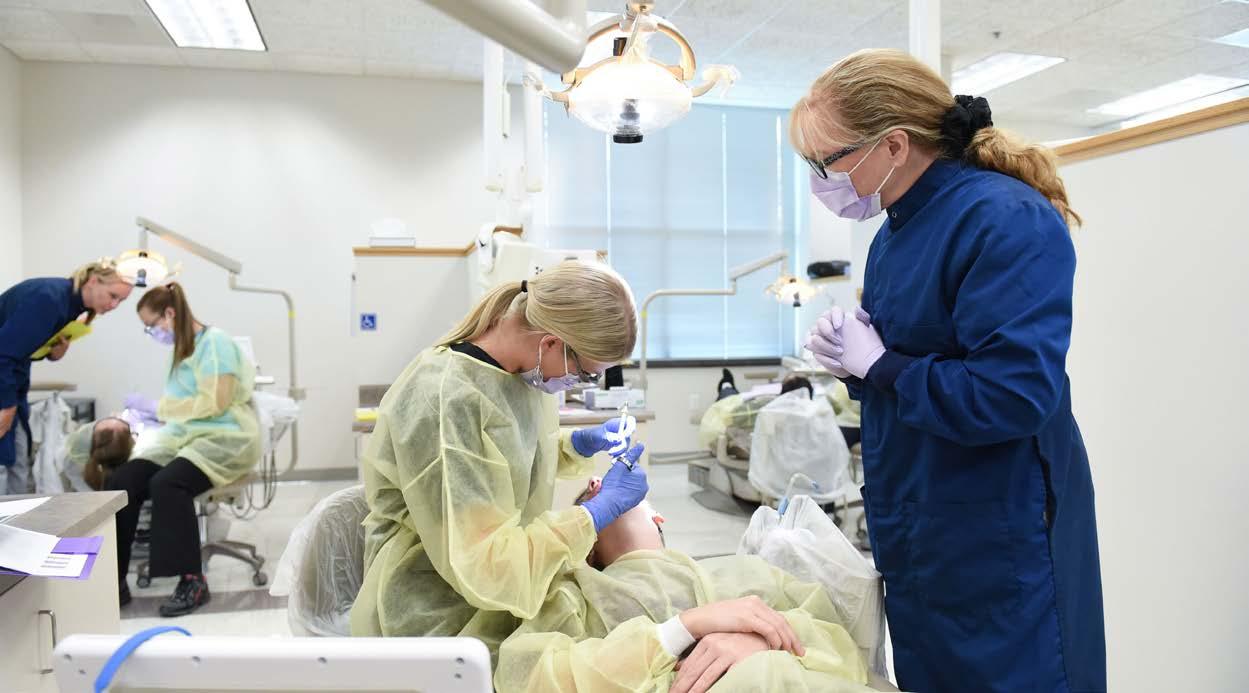
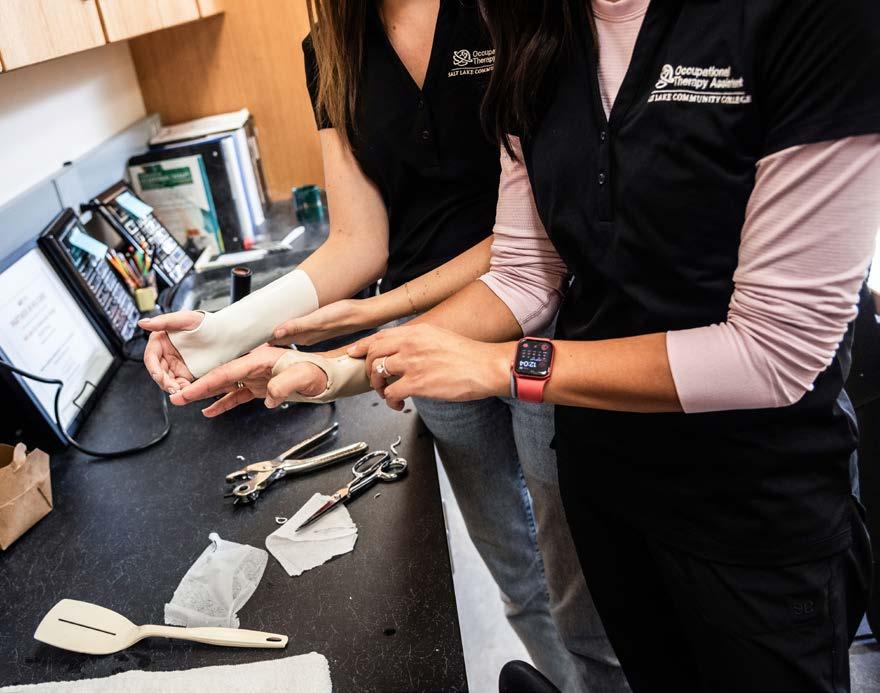
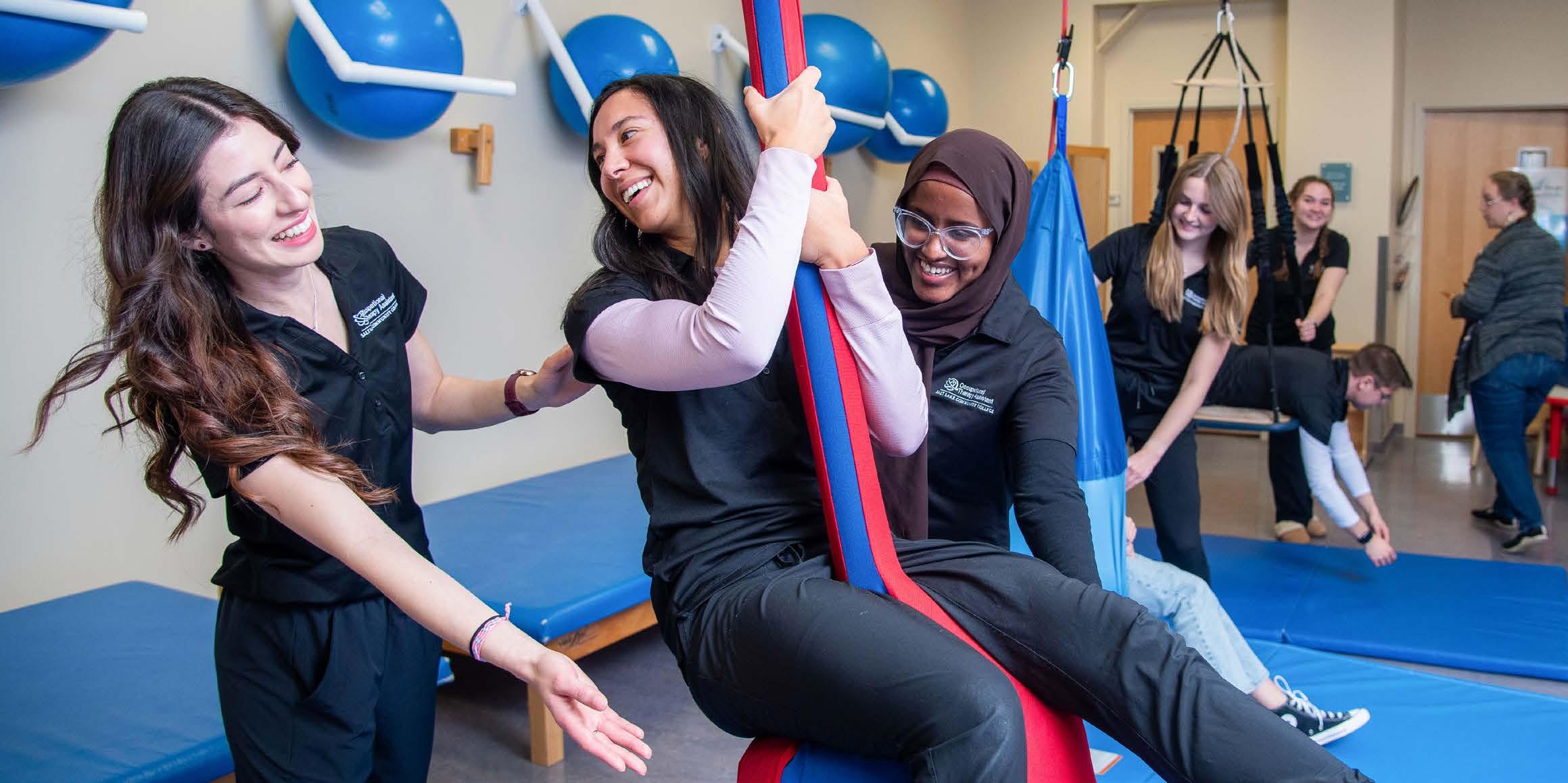
offering resources like affordable dental care and pro�bono occupational and physical therapy.
The Dental Hygiene Clinic has provided Salt Lake County residents with affordable dental care since 1995, with dental hygiene students at SLCC’s Jordan Campus operating under the direct supervision of licensed dental professionals.
The Physical Therapy Assistant program’s clinic is staffed by students like Ellie West, a recent graduate. “Working on real patients and seeing their evolution with hands�on training through the program contributed to my success as a student and professional,” she says.
ACCESS, QUALITY, AND PROFESSIONAL SUCCESS
Every year, many students who would otherwise be unable to afford college join the School of Health Sciences programs with 100� of their tuition paid by an industry partner. Upon graduation, those same students get a guaranteed job, and SLCC’s industry partners get highly trained employees to fill much�needed positions.
The high quality of the program is reflected consistently through the success of its students. West was recently awarded the 2024 Outstanding Student Award from the American Physical Therapy Association. She credits her achievement to the support she received from the institution, the program, and particularly from Assistant Professor Justin Carrier. “[He] was instrumental in my success and so passionate about us learning and growing and becoming fantastic clinicians.”
SLCC’s School of Health Sciences has consistently demonstrated remarkable outcomes, highlighted by outstanding retention, graduation rates, and licensing pass rates above the national average. In the nursing program alone, the graduation rate is 97�, and the licensure pass rate on the first attempt is 87�, which is above the state average. According to Belnap, the program also enjoys nearly 100� job placement.
SLCC ALUMNI RETURNING HOME
One of the most significant accomplishments of SLCC is that many graduates choose to return as educators. The alumni who return to teach at SLCC bring their knowledge of the school and experience in the field to the classroom, inspiring new generations to continue the Bruin legacy of serving the community through compassion.
Associate Professor of Mortuary Science Stephanie Kelly is one example, and her pedagogy is guided by her experience as a professional and as a former student.
“Having gone through the program and having my own teaching experience, I would take mental notes on how I would do things differently in the classroom,” says Kelly. “So, when the opportunity presented itself to teach here at SLCC, I could not pass it.”
Jeff Zealley, Mortuary Science coordinator and an associate professor, went from being Kelly’s professor to her colleague. He says Kelly was an exceptional student, and he is delighted to have her teaching beside him. “She is an amazing professor and has breathed a new life into the Mortuary Science Program.”
EXTRA CREDIT
HEALTH SCIENCES HONORS AND AWARDS
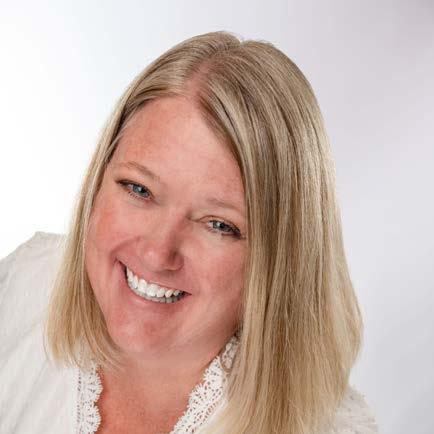
MINDY BATEMAN
Director
Crossroads Utah AHEC
2025 Utah ACTE
Counseling and Career Development
Professional Award
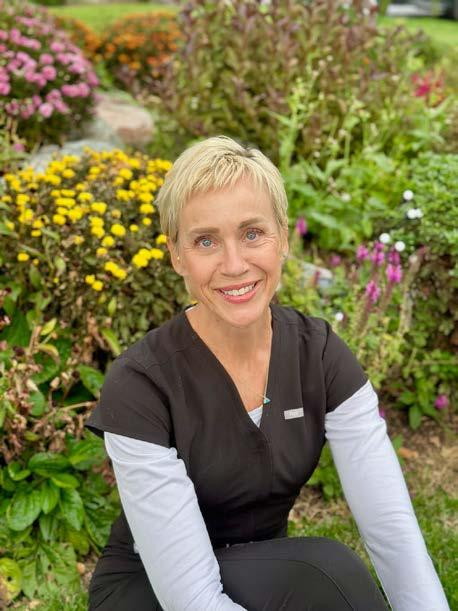
KRISTEN HALL
Second Year Coordinator, Associate Professor
Dental Hygiene
2024 Utah Dental Hygienists’ Association Educator of the Year
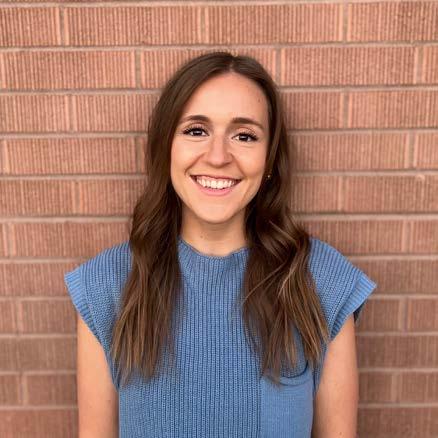
ELLIE WEST
Physical Therapist Assistant AAS, 2024
2024 APTA Outstanding Student
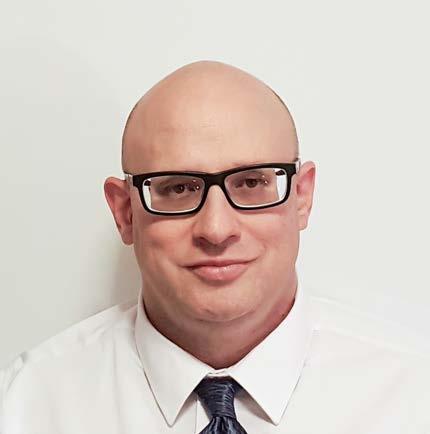
TERRY SMITH
Assistant Professor for Healthcare Technologies
2024 AMT Distinguished Achievement Award
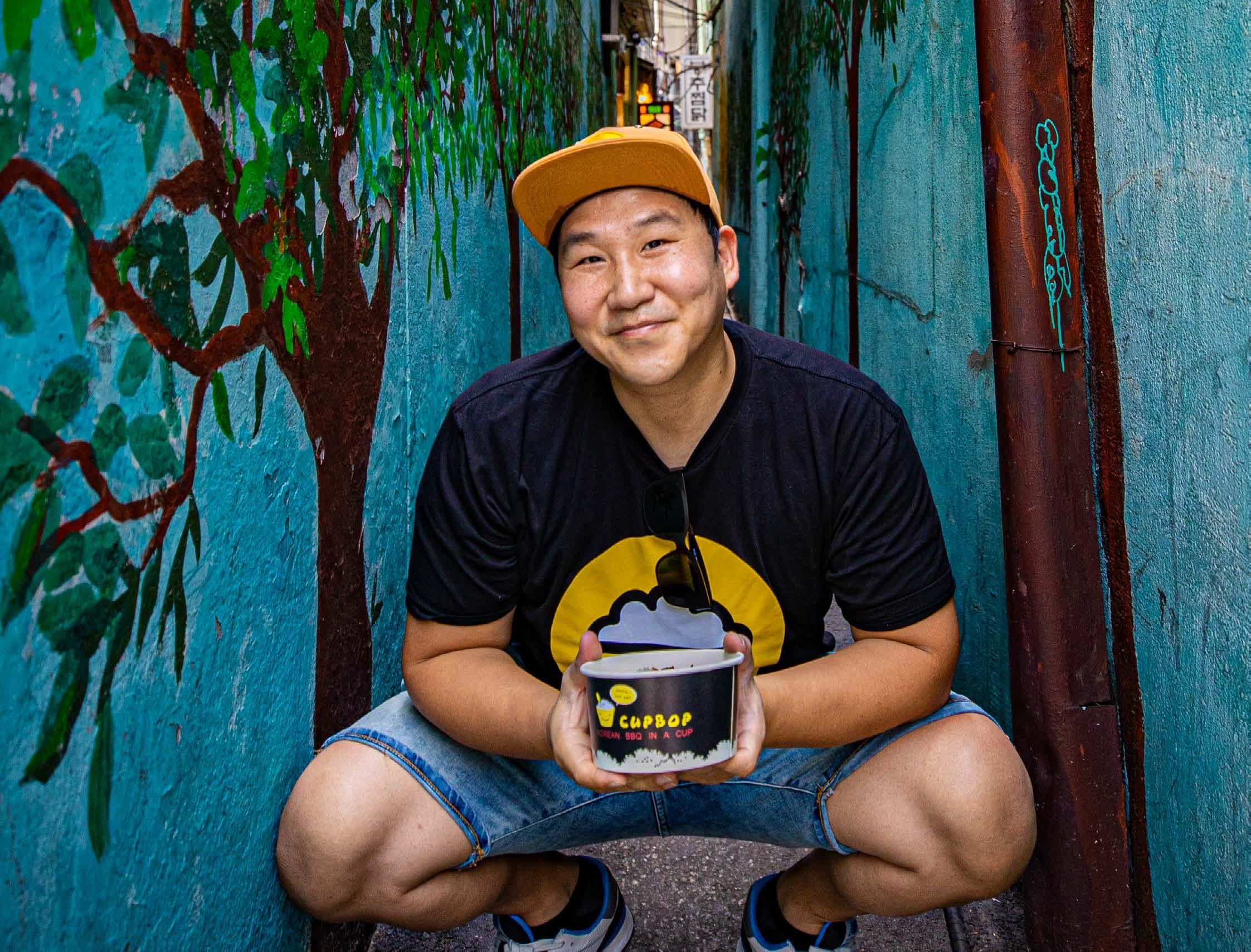
JUNGHUN SONG
WhenI came to SLCC, I didn’t speak any English. I had served an LDS mission in Korea, where I am from, then moved to Utah in 2004. I came here not knowing anyone and not being able to talk to anyone. It was a hard time for me. I was tempted to return home, when one morning I woke up and looked at my wrinkled, scrunched�up return airline ticket and I thought, “This looks like how I feel. I have to do better than this.” At that moment, I chose to enjoy my six months here and make the most of it. Through my ESL classes and the
ADVICE
D“Don’t think too much or listen too much to the people doubting you... You can do anything if you put action behind the idea.”
then and now
Asian club, I began making friends. I was a B�Boy back home, so I would connect with others by teaching them how to breakdance.
I always joke that I learned my ABCs at SLCC. I started learning English in one of the few college ESL programs at the time, and my teacher was incredibly patient with me. It was here that I learned English well enough to start a business and interact with my customers.
In 2013, I remember seeing my first food truck ever in downtown SLC and
I loved the concept. I had grown up working around food and collected BBQ recipes � I especially enjoyed serving food to people more than making it. I knew that one day I wanted to have my own business, so when I saw that food truck, I knew what I wanted to do. With every cent I had, I bought a used truck and started my business, Cupbop, based on Korean street food. There are now more than 200 Cupbop stores nationally.
on’t think too much or listen too much to the people doubting you. When I bought that food truck, I could have listened to all the reasons why I should not go for it, but I didn’t. And every day when I would wake up, I would see it and it would motivate me to work hard. You can do anything if you put action behind the idea.
Visit the Then and Now gallery to discover more about the lives and experiences of SLCC alumni.
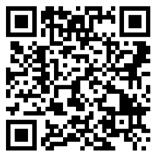
EXPERIENTIAL
ZACHARY INGREY
ASSOCIATE DEAN & DIRECTOR, ADVANCED MANUFACTURING
UNDERGRADUATE DEGREE
Materials Science & Engineering, University of Utah, 2021 GRADUATE DEGREE
MBA, Southern Utah University, 2024 CERTIFICATES
Certified Composites Technician, American Composites Manufacturer Association
YEARS WORKING & TEACHING AT SLCC
I have worked at SLCC since December 2019, so it has been over six years! My journey here has been amazing. I started as a lab aide in the composites area, and SLCC helped me complete a bachelor’s and master’s degree and move through the ranks to the position I have today. I was a professional, a student, and an instructor for years, so I have a fresh perspective on contemporary student life, giving me the insight and the passion to improve our student’s experience here at the College.
CLASSES TAUGHT & CURRENT ROLE
I used to teach all the Composites courses here, but now I just teach a small section of a U of U Materials Science class that buses over to our campus for some hands�on labs every fall. Now, as an associate dean and a director, I’m here to assist faculty, students, and our community with any of their needs. I truly believe that I work for each of these groups, working with local businesses and industry and taking care of all the background things required to maintain successful pathways to careers.
CONNECTING SLCC TO INDUSTRY
I grew up in a family business building carbon fiber masts for racing boats, so I’ve spent my whole life in composites manufacturing. I understand the needs of small and large businesses, and I can speak their language.
At SLCC’s Westpointe Workforce Training & Education Center, we pride ourselves on our close collaboration with over 30 industry partners, including notable names like Albany Engineered Composites, Merit Medical, and Cummins. These partnerships ensure that our education is highly relevant, focusing on the skills required for specific careers. Industry partners advise on the lab equipment, software, and standards we teach, ensuring our education is relevant to employers' needs and giving our students the best chance of landing an engaging job � with a living wage � right out of school.
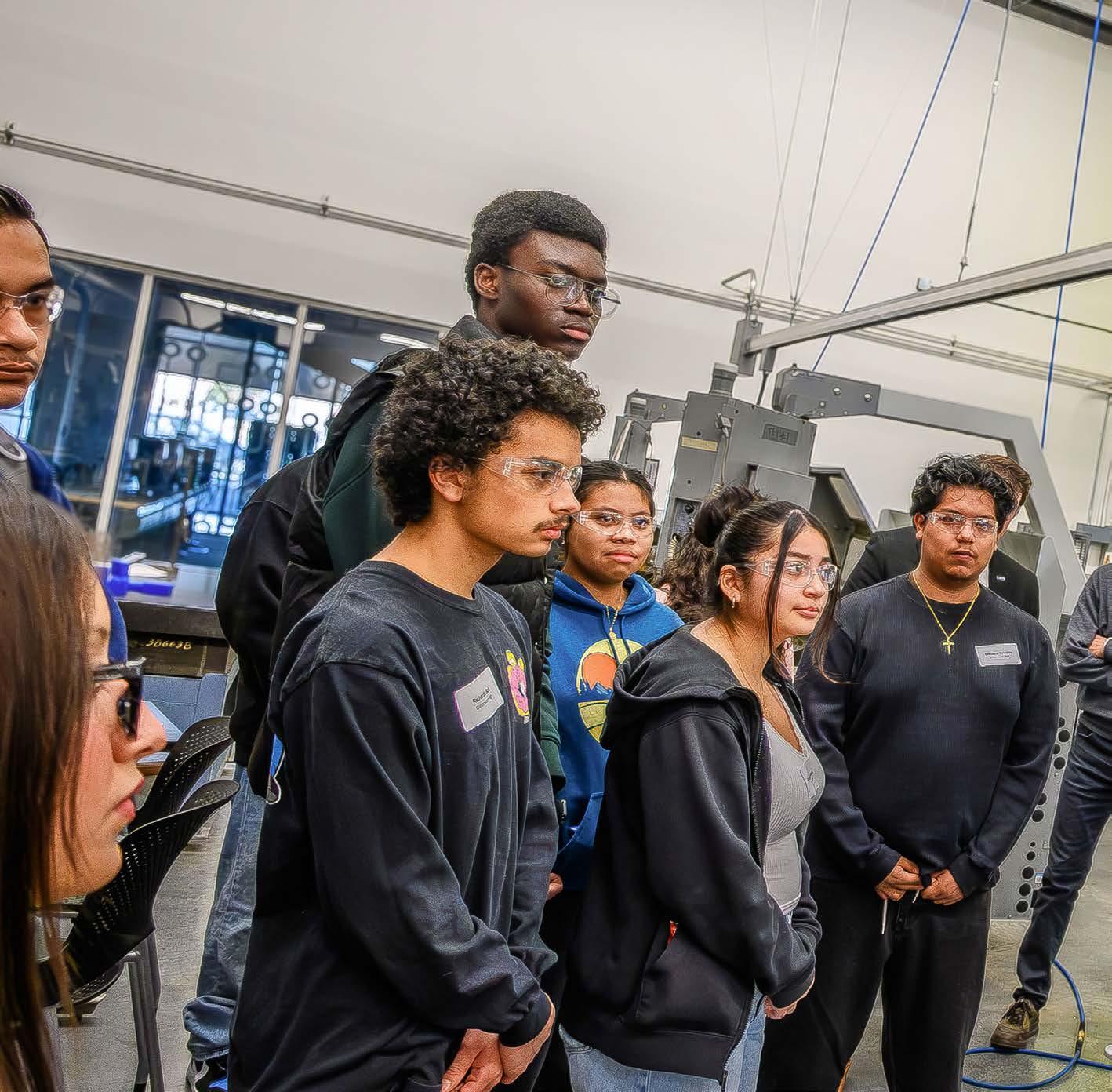
GREATEST PROFESSIONAL ACCOMPLISHMENT
I am very proud of revamping our Advanced Manufacturing AAS program. This program matches high school seniors with local manufacturers while they complete an associate’s degree. Students gain work experience while getting their credential paid for by their industry sponsor. I have seen the impact this has for the student and the business, and it is such an effective program! We would like to implement these high�impact youth apprenticeship and work�based�learning models in more program areas, and this one has taught us a lot about how to approach this style of learning.
GREATEST PROFESSIONAL CHALLENGE
For me, this has to be navigating the rules and processes that govern higher education. It is extremely challenging to explore programs that could have a huge impact on our community, only to find that we can’t offer them because they don’t fit the mold. Our department is unique because we offer all forms of higher ed: undergraduate, apprenticeship, technical, and non�credit education. Leveraging resources between all categories can be a headache, but a strong relationship with the SLCC Provost’s Office has helped me overcome these barriers by better understanding the current boundaries, and in many cases, changing these boundaries to ensure students have access to the best education possible. Internal collaboration is key to our success, and SLCC staff in this area are great creative problem solvers.
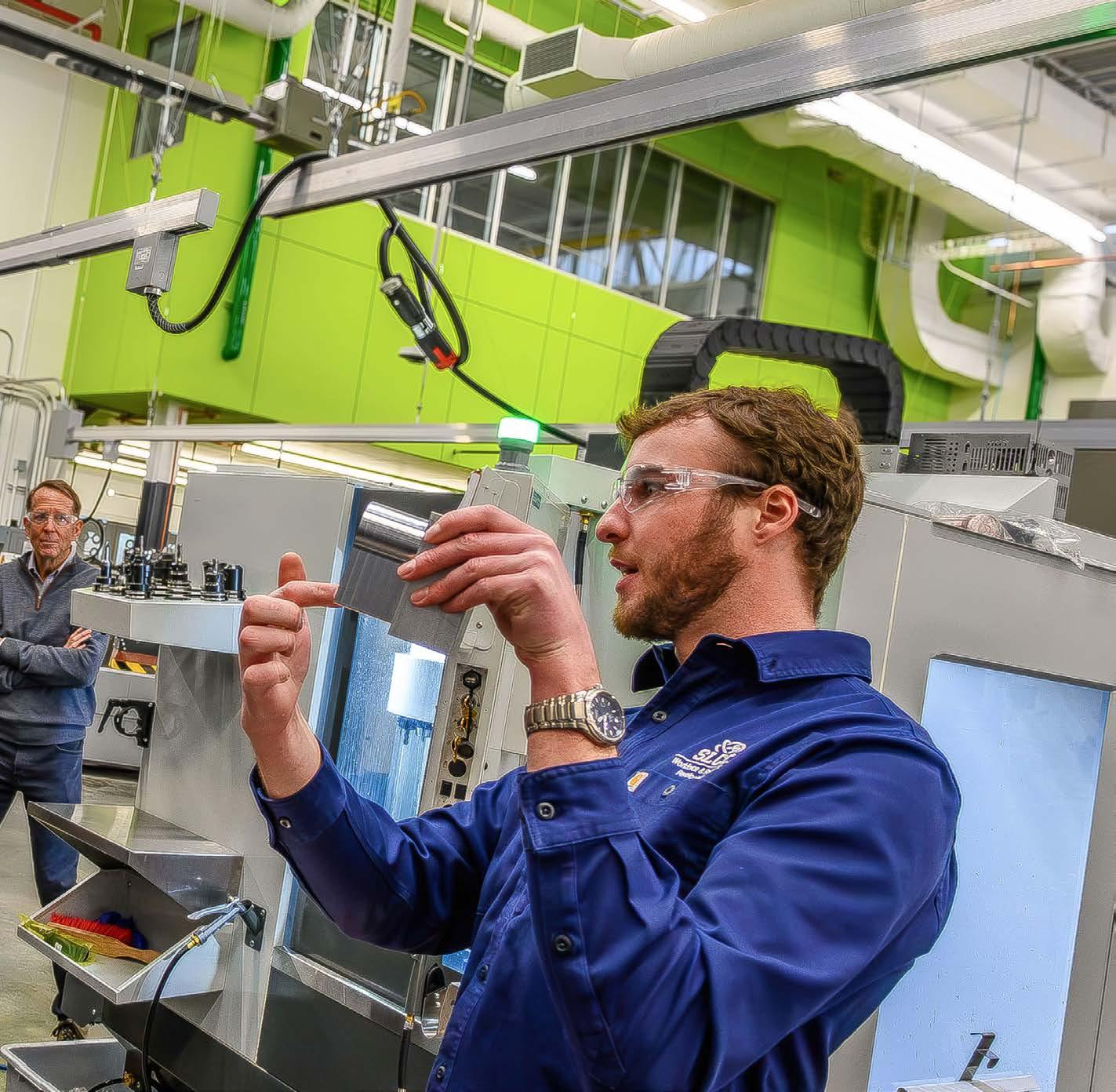
ADVICE FOR STUDENTS & PROFESSIONALS
For advanced manufacturing students, I’d say to find something that truly interests you, and give it your all. Being engaged and curious in your coursework really shows when you get out into the field. Working hard literally pays off, and so does exploration � don’t be afraid to switch programs if your current pathway doesn’t pique your interest.
SLCC offers tools for established professionals, too. Many times, getting an associate’s degree will give you more soft skills that can help with management or supervisor roles. Additionally, joining a professional organization will help you stay up�to�date on best practices and new technology. This also helps you build a network within a certain industry.
WHAT STUDENT SUCCESS LOOKS LIKE
We have hundreds of success stories from our students, and it’s difficult to pick just one. Here is a snippet of wonderful feedback from a graduate of the Advanced Manufacturing AAS program:
“My degree has paid more dividends than I knew to expect. Since graduation, I have used my degree to leverage a new position as a semiconductor equipment technician with a 17% raise. The courses I took for my degree have also helped me navigate professional challenges gracefully and prove myself as a young woman in a male�dominated industry.”
Talent in skilled trades has been extremely hard to come by as industries face an aging population of workers. For students like this one, we are a bridge from our community to industry � that’s what success looks like. Everyone wins! Our community earns great wages, our industry can fill their workforce gap, and from an economic and social lens, this helps Utah thrive.

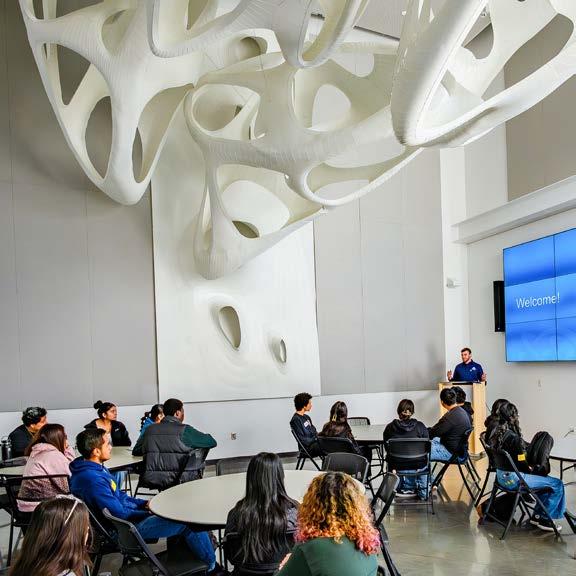
SALT LAKE TECHNICAL COLLEGE WESTPOINTE CAMPUS
Westpointe Campus is small but mighty. The campus offers some of the most engaging programs at SLCC, often across departments and in collaboration with industry partners to connect community members with real careers that have real impact on their lives. Cost, time, results — every aspect of SL Tech education privileges efficiency, providing shortterm training for long-term results.
PROGRAM AREAS OFFERED AT WESTPOINTE
• Advanced Manufacturing
• Electronics & Automation
• Energy
• Diesel & Truck Driving
• Apprenticeships
• Welding
• Machining
DONORS & INDUSTRY PARTNERS
• American Welding Society
• Boeing
• Frank Buckler
• The Katherine W. Dumke and Ezekiel R. Dumke, Jr. Foundation
• Kenworth Sales Company, Inc.
• Komatsu Equipment
• Lincoln Electric Company
• Richard K. and Shirley S. Hemingway Foundation
• Scott Machinery/Intermountain Bobcat
• Sorenson Legacy Foundation
THE POWER of LEARNING BEHIND THE BARS FOR INMATES AND FOR SOCIETY
By Peta Owens-Liston
Sitting in a front row seat at the graduation ceremony for Salt Lake Community College’s Prison Education Program (PEP), Dantzel Wall carefully folds a pile of tissues on her lap into neat squares. She hands one to her husband, Mark, next to her. He tucks it gently into his breast pocket.
They have come prepared to cry.
In front of the Walls sit several rows of new graduates, cloaked in graduation robes and tasseled mortarboards. Their daughter, Mauren, is among the 28 graduates who will receive an associate’s degree through the PEP. She earned her degree in Business while maintaining a 3.85 GPA.
Mauren is one of four who will be speaking to their fellow graduates and to the small crowd gathered at the Utah State Correctional Facility about what this educational journey meant to her. For the Walls, this spring day marks a high point in the years of heartbreak and despair they have endured watching their daughter, starting at 14, begin a long spiral into drug abuse and addiction, until she landed in prison.
“Mauren didn’t even graduate from high school. She hated school. Her grades were horrible,” recalls Dantzel. “It’s like a whole new world has been opened up to her � she has discovered that she is extremely bright and capable and has
found self�worth.” Dantzel has watched her daughter emerge. “Once she got clean and her mind was clear, she took advantage of every opportunity in prison.”
Mauren steps up to the podium. She tells her fellow graduates: “This day is about more than just earning a degree; it is about creating change […] I truly believe that we are our own limitation. The day that we recognize this is the day that you’ve left all excuses that have held you back behind.”
Looking out at the SLCC faculty and corrections staff, Mauren says, “All of you are truly changing not only our lives, you’re changing the culture here in the prison.” With pride, she shares that she has been accepted into the University of Utah’s Utah Prison Education Project and will go on to pursue a bachelor’s degree.
The tissues are no longer dry.
“Everything can be taken from me, but not my education.
I am my education.”
SLCC’sPEP started as a small pilot program in 2017, with funding from the Utah State Legislature. In 2020, the U.S. Department of Education designated SLCC as a Second Chance Pell experimental site, allowing incarcerated students to use federal Pell Grants to attend.
Today, the College’s program has become one of the largest in�person prison education programs in the country, with more than 40 faculty members teaching and engaging with students face�to�face, without relying on distance learning.
This past year, over 200 students, men and women, participated in SLCC classes with pathways leading to five different associate degrees: Anthropology, Business, Criminal Justice, General Studies, and Humanities.
“Providing education in the prison makes so much sense on both a practical level and a human level. It transforms individuals’ sense of self, promotes hope and ability, and this ultimately benefits society,” says David Bokovoy, director of SLCC’s Prison Education Program.
He points out that recidivism drops dramatically for those earning an associate’s degree. “College students are less likely to return to prison,” says Bokovoy, adding that studies have also shown that every dollar spent on prison education saves taxpayers at least $4 in reincarceration costs.
Representative Melissa Ballard, a fierce advocate for rehabilitation in prison, echoes this sentiment. “If we support education and reintegration efforts while these individuals are incarcerated, then we [taxpayers] aren’t
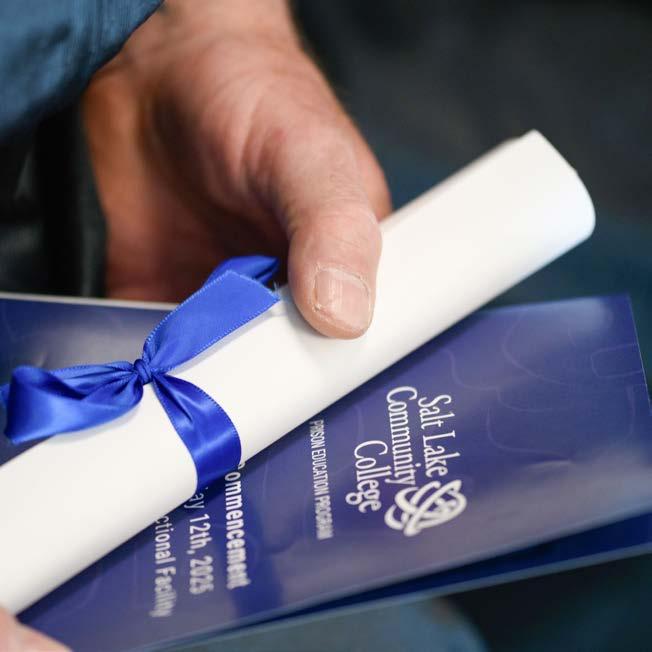
“EDUCATION IS THE DIFFERENTIATOR — IT NOT ONLY CHANGES THEM, BUT IT CHANGES FAMILIES AND IMPACTS THE NEXT GENERATION.”
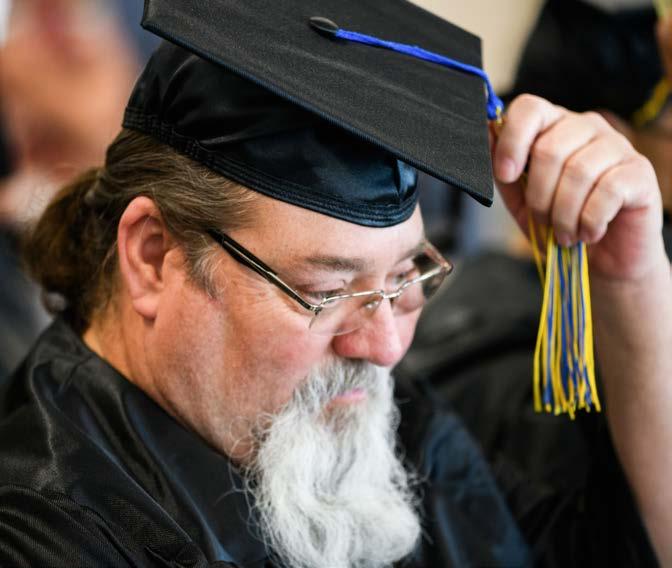
paying for their incarceration over and over again.”
In a meta�analysis involving 750 studies, the Mackinac Center for Public Policy found that any form of participation in an educational program leads to a 14.8� decrease in the likelihood of recidivism. The more education acquired, the more recidivism decreases.
Since 2021, Ballard has chaired the Higher Education and Corrections Council to reduce barriers and increase opportunities for education in prison. She has spearheaded efforts to bolster rehabilitation and pathways to ease re�entry into society.
“Education is the differentiator � it not only changes them, but it changes families and impacts the next generation,” says Ballard, who helped bring more educational opportunities into the women’s prison, which had far fewer options then the men’s prison several years ago.
What Ballard says is true for Melissa Richmond, whose three children have watched her earn an associate’s degree while in prison. They see a mom who is empowering herself and making choices to improve her life. “I have the ability to make great changes in the world,” says Richmond.
She adds, “Life is fragile. Things are broken, things are stolen, things get lost. Friends, family, cars, phones, homes � everything can be taken from me, but not my education. I am my education.”
How Education Changes the Climate Within Prison
Education in prison doesn’t just potentially change the trajectory of individuals once they are no longer incarcerated, but it changes
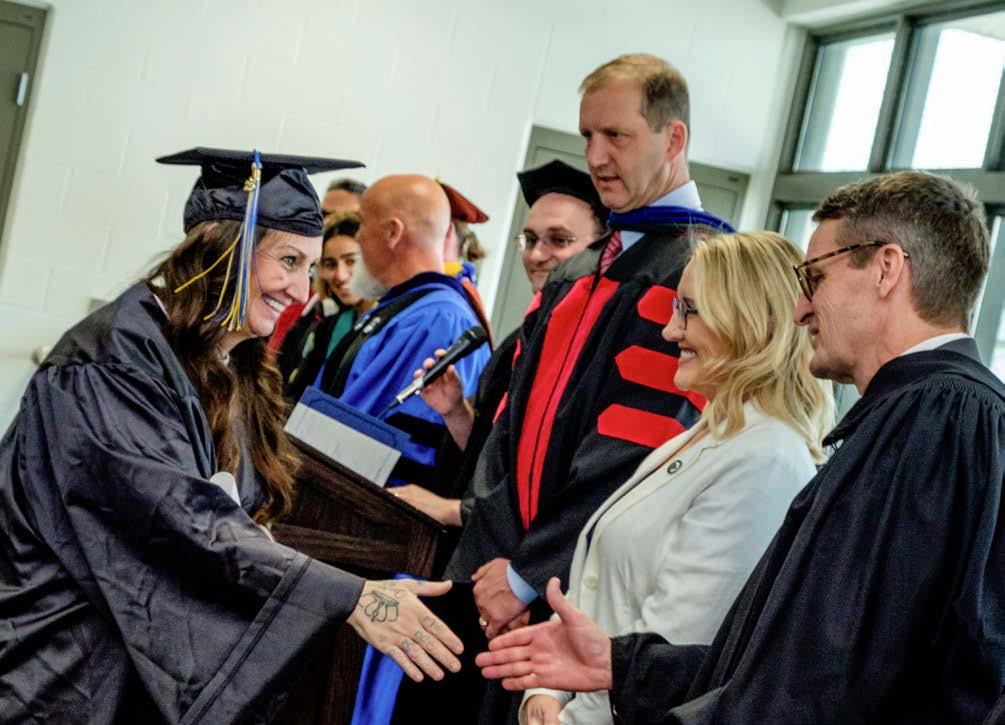
the climate and morale within the prison walls where staff spend long shifts and inmates are there for years.
Chief Randall Honey, who has worked in the corrections system for more than 20 years, some of it in maximum security, has witnessed the change not only in the behavior and attitudes among the inmates, but also as a system�wide shift among staff to focus on rehabilitation.
“Many of these individuals are going to leave prison one day and become our neighbors and become part of our communities again, so our approach is how can we encourage them and help set them up for success,” says Honey. “Many of our offenders are craving education and rehabilitation, and they are trying to hold each other accountable because they don’t want to lose access to classes.” This has resulted in a reduction in violence and a climate of more respect, and overall, a more enjoyable environment for everyone, including staff, says Honey. Officers remind inmates that they have class or ask how class went today. “Staff are seeing how rewarding it is to see the incarcerated be successful,” Honey adds.
Phillip Leishman, who also earned a degree in business, was another speaker at the graduation. He acknowledged that many of them were years away from returning to their families and communities, but striving for education could still make a difference here, within the prison.
“We can inspire others around us through our actions and produce a correctional culture where education becomes the norm, not the exception,” says Leishman. “Let’s be the spark that ignites the way forward to a much more conducive and supportive environment.”
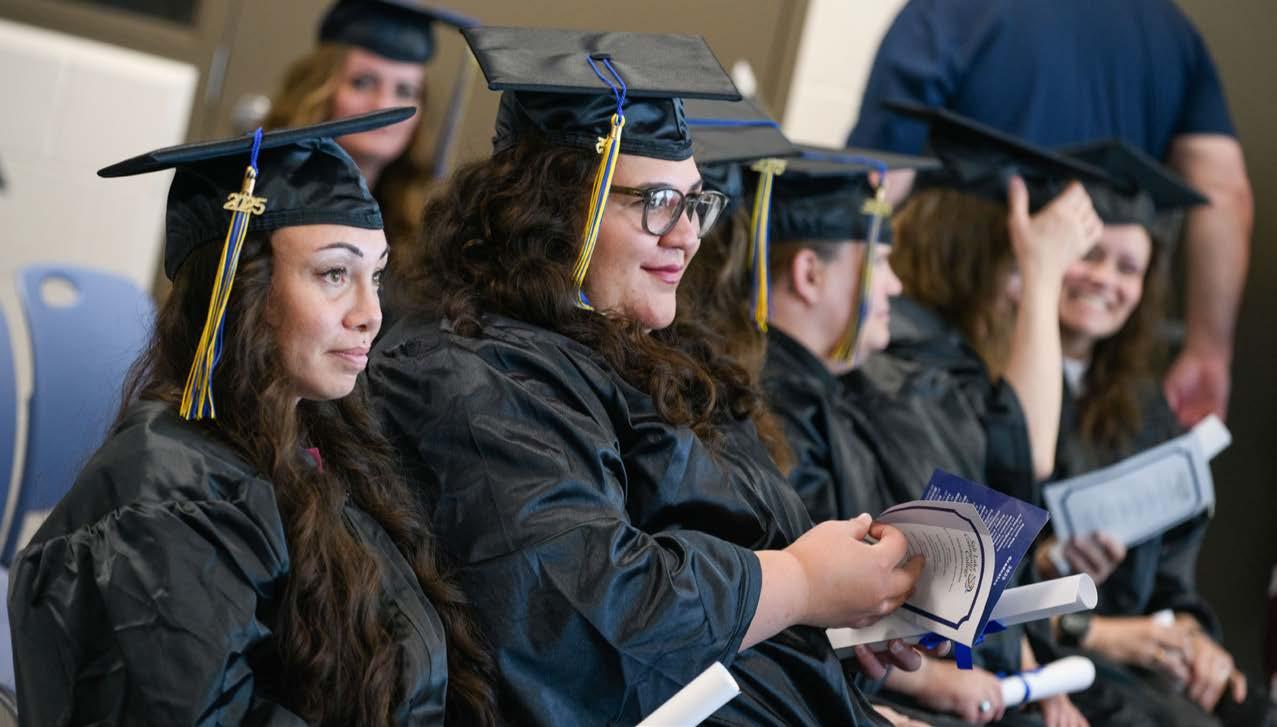
then and now
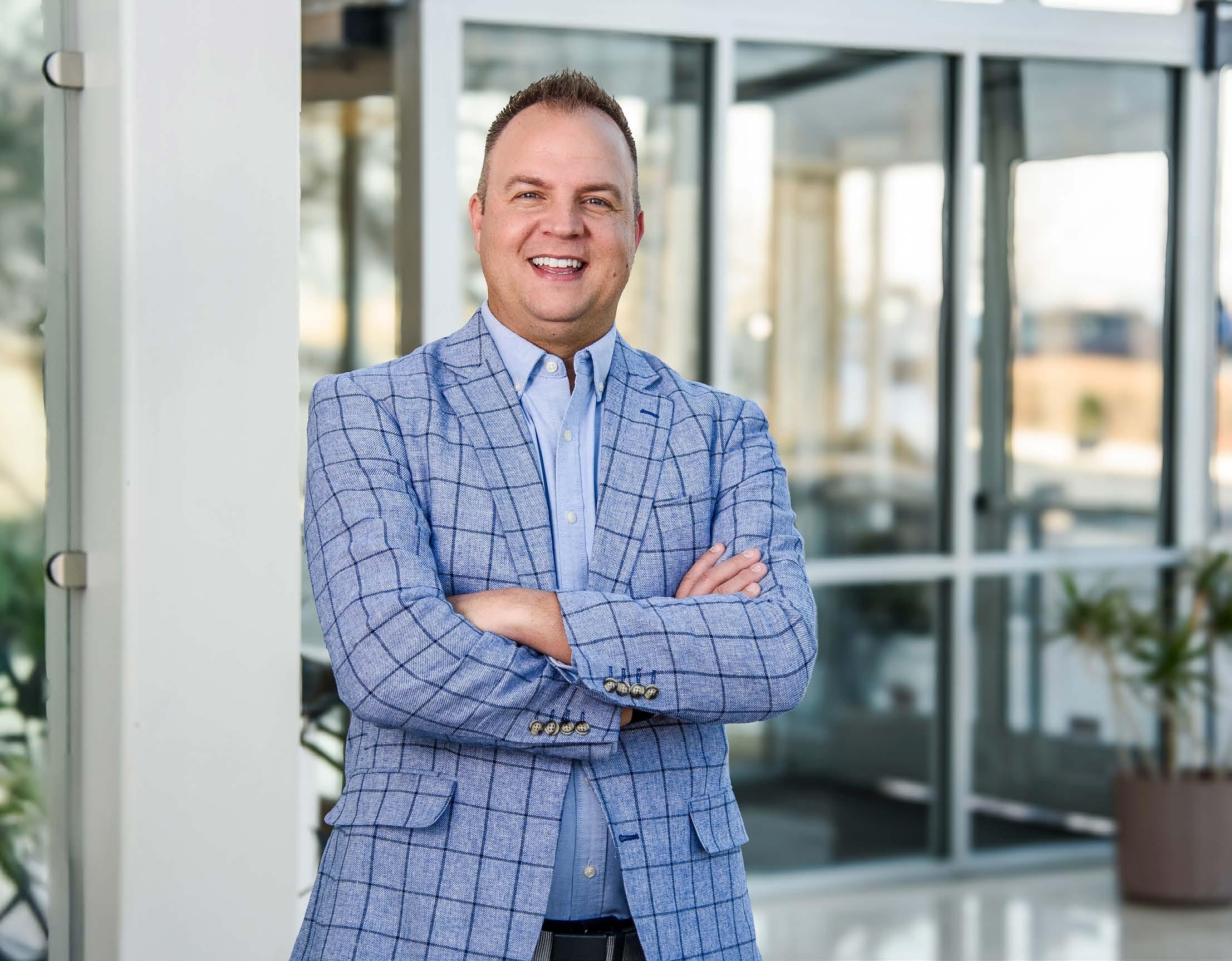
“I’ll be honest with you, there were times I really struggled to continue — my attitude was to just get through it.”

Visit the Then and Now gallery to discover more about the lives and experiences of SLCC alumni.
BUDDY BENNETT
Iheard about SLCC from family who lived in Utah, so I figured I would check it out for one semester before leaving on my LDS mission. I enjoyed it enough that I came back to it after my mission in the West Indies.
I was working two jobs and paying for my own education while at SLCC, so the locations and class times were convenient and conducive to my schedule. But I’ll be honest with you, there were times I really struggled to continue � my attitude was to just get through it. Then other times I was laser focused and determined, knowing that it would pay off.
ADVICE
I had to withdraw one semester because of a family crisis and additional financial pressure, but I came back and kept at it because I knew education would help me grow personally and professionally. With all I had going on, I wasn’t the smartest student in the class, but I worked hard. It helped that classes were small and teachers accessible, so it was easy to ask questions and get help. I really connected with some of my professors; my personal finance teacher was amazing.
While at SLCC, I worked part�time as a bank teller at Cyprus Federal Credit
Union and have been there over 19 years. I’m now the chief operating officer of the credit union, which has 22 branches and over $1.8 billion in assets. I’ve been lucky to grow here � new opportunities and the company culture have kept me here.
I do believe SLCC helped me get to where I am today, and I still plan to return to school to earn my bachelor’s in possibly business management and administration or economics.
Take advantage of every opportunity that you can. My career experience is a direct result of placing myself in the path of opportunities and being willing to take on new roles even if it was a stretch. You never know what can happen when you put yourself up to a task and work hard � in school and in your career.
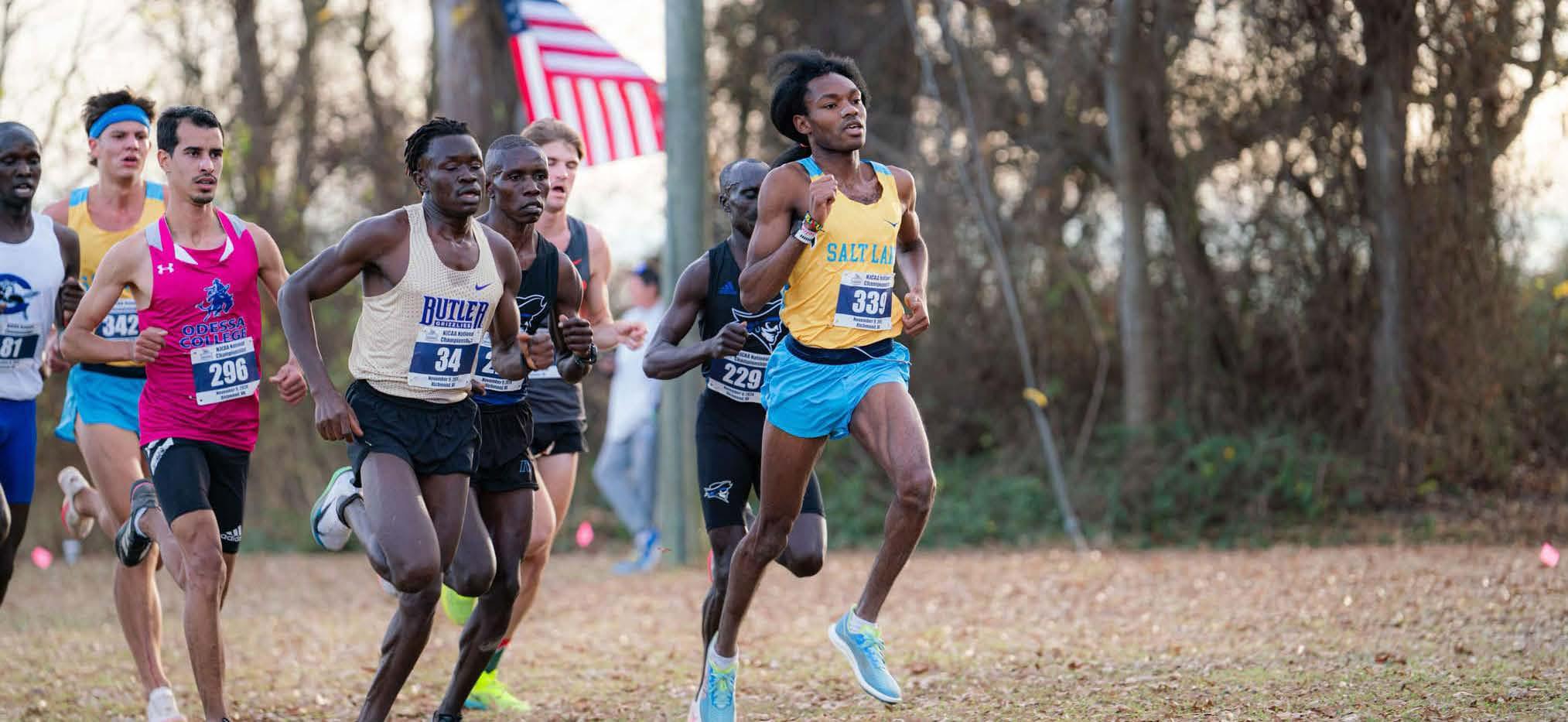
PFAITH, FIGHT, AND FINISH LINES
Keeping pace with XC superstar JaQuavious Harris
By Verónica Aguilera Sánchez
JaQuavious
“JQ” Harris’ path from an aspiring runner in South Carolina to a national champion at Salt Lake Community College and professional athlete sponsored by Saucony is something of a modern fairy tale. He’s even got an appropriately fantastic nickname after losing a shoe during his final race at SLCC.
“That race earned me the title of Cinderella,” he says with infectious laughter. Like much of his career, Harris’ Cinderella race had a bit of magic in it. Despite running backwards to retrieve his errant shoe � and then losing more time to put it back on � he still managed to win the race and break a record. Instead of calling it magic, though, he might call it miraculous.
“When I was toward the end of the race, I felt like I could no longer keep going, and I remember asking God for help,” he says. “I felt God's love, strength, and voice telling me that this race was not only for me but also for my team, my family, and everyone who has always been behind me.” Whether through miracle, magic, or moxie, it worked. “I felt like I no longer had two but four legs,” he explains. The race results back him up.
For Harris, running has always been a response to adversity. He joined his first cross�country team in eighth grade when he realized he was great at running, which he learned by outrunning bullies. Later, a severe injury left him out of competition and wheelchair�bound, unable to run for three years � torture for an elite athlete. But throughout, he remained true to himself, using his belief in his own abilities and his faith to sustain himself.
“I was lost without running,” he says. “I remember praying to God, asking him to heal me. I told him if he helped me run again, I wouldn't do it for myself, but for him.”
Harris's dream was to belong to a team, to be part of something bigger than himself. The path he took after his injury
led him from Utah to Oklahoma, California, Canada, and back to Utah. Throughout his healing journey, the constants in his life were his faith and, as a bridge for returning to competition, the support of coach Isaac Wood.
Harris was coaching a high school team when he first met Wood at a cross�country meet, and Wood invited him to run for SLCC. “JQ never really got a chance to show how good he was, you know, on a national level. And I had no doubts that he would be incredible,” says Wood. “I've never coached someone with more heart, so naturally.”
Harris first arrived at SLCC in 2023, a year after Wood founded the College’s cross�country program. The program had been performing well since its inception, with high placings in national rankings, and the addition of Harris to the team in year two only supercharged those results.
At SLCC, Harris earned multiple NJCAA national records, including the indoor and outdoor 5,000 meter and the indoor 3,000 meter. He was also a two�time NJCAA National Athlete of the Year, 2024 NJCAA West Region Athlete of the Year, and back�to�back NJCAA Cross Country National Champion in 2023 and 2024. For his fairy tale ending, he recently went pro by signing with Saucony, retaining Wood as his professional coach.
Harris’ superlative career may seem like magic to an observer, but Wood isn’t surprised.
“I don't think I've ever coached someone who, when they smell the opportunity for a win when they are in the hunt, is that unbeatable,” Wood says. “He's unbeatable when he thinks he can win, unbeatable, seriously, like when he truly believes he can win a race. No one can beat him.”
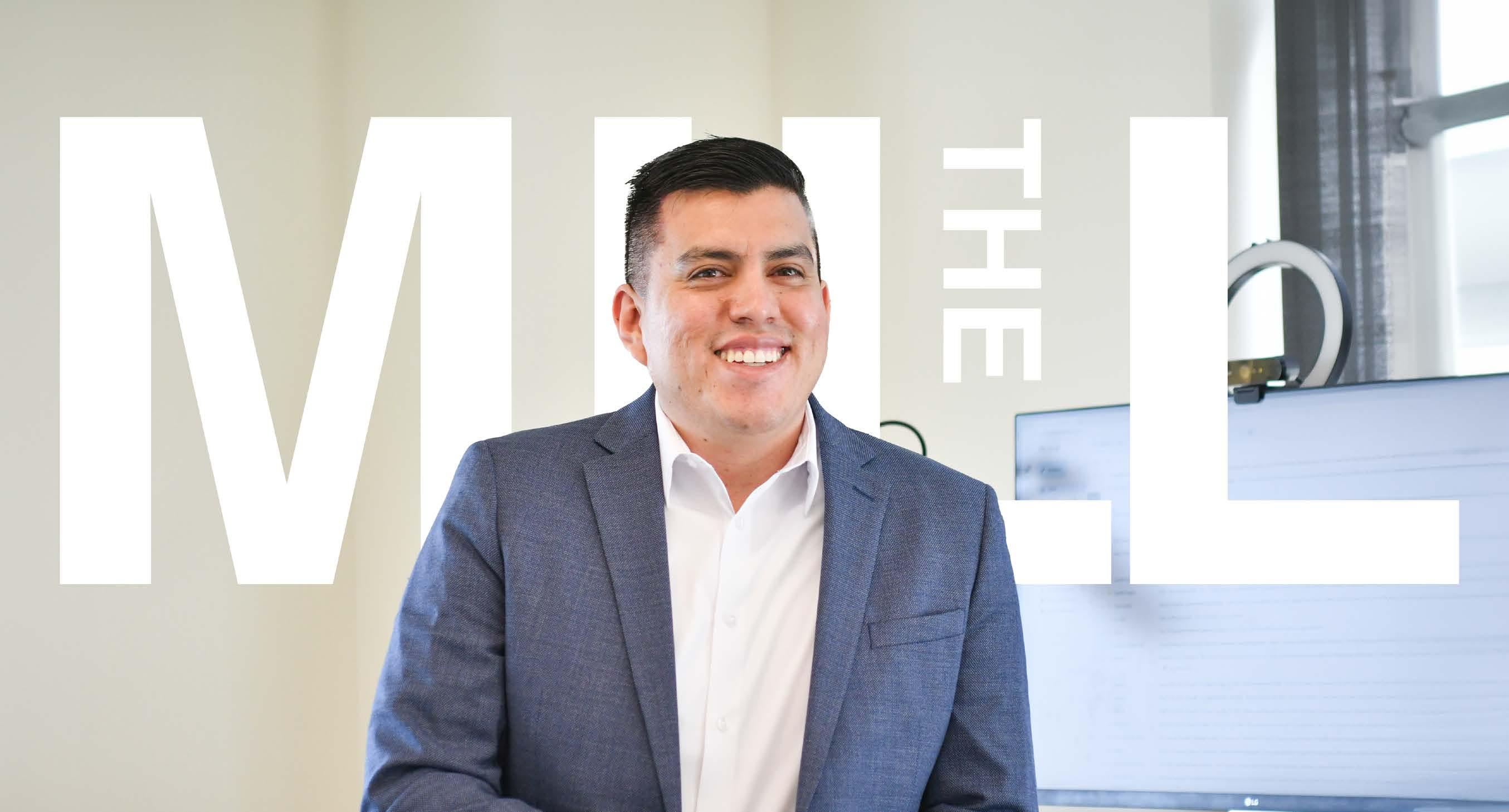
FROM A SINGLE DESK TO A $5M VALUATION
By Clint Stoker
Rick Hernandez remembers the early days of his startup vividly � long hours, cold calls, and a single desk at The Mill, SLCC's business incubator, where he worked tirelessly to bring his vision to life.
Now, as the CEO of Social Good Software, Hernandez is celebrating a major milestone: securing a $250,000 investment from Morgan Stanley’s Inclusive & Sustainable Ventures Lab, a move that marks the next phase of his journey. What started as a small idea in a shared workspace has since grown into a multimillion�dollar company, proving that persistence and purpose can turn a simple concept into something remarkable.
Born in Mexico and raised with a deep appreciation for perseverance, Hernandez’s journey to success has been anything but conventional. His passion for technology led him to Salt Lake
Community College, where he earned a degree in computer science before working at the University of Utah. While there, he saw a gap in the nonprofit sector � museums, aquariums, and cultural institutions struggled with outdated membership and ticketing systems.
Hernandez knew he could create something better. In 2019, he founded Social Good Software, an SaaS platform designed to make museums more sustainable by replacing paper tickets, plastic membership cards, and printed magazines with digital alternatives.
It was a promising idea, but as any entrepreneur knows, ideas alone don’t build businesses, and the early days of Social Good Software were a test of endurance. Hernandez returned to SLCC, where The Mill provided him with an affordable workspace and a community of motivated, like�minded founders. “The
marketing strategy was definitely guerrilla at first,” he recalls. “I did a lot of cold calling, mailed out hundreds of prospect packages. It was scrappy, but it worked.”
His team grew, his client base expanded, and his reputation as an impact entrepreneur solidified.
Now, with Morgan Stanley’s investment and validation, Hernandez is preparing for the next phase of growth. He was selected from over 7,000 applicants nationwide to participate in the firm’s accelerator program, one of only two winners from Utah. The $250,000 investment, in exchange for a 5� equity stake, values Social Good Software at $5 million � a number Hernandez plans to multiply.
STEM SCHOLAR JAYSON CARRIER: BUILDING A BRIGHT FUTURE IN TECH
By Liz Radley
WhenJayson Carrier enrolled at Salt Lake Community College, he wasn’t entirely sure what his future would look like, but he did know he needed an affordable, flexible place to begin his college journey. SLCC provided exactly that. Carrier has since graduated with an associate’s degree in computer science and, with an internship under his belt, he now has a job offer from Texas Instruments to launch his career.
Carrier is a proud recipient of SLCC’s S�STEM Scholars Program, which provides scholarships and support to academically talented, financially disadvantaged students pursuing STEM degrees. “The S�STEM Scholarship made a huge impact � not only financially, but emotionally too,” Carrier shared. “It gave me confidence that others believed in my potential, which pushed me to stay focused, work hard, and stay committed to my academic path.”
With funding provided by the National Science Foundation, the S�STEM Scholars Program at SLCC has provided scholarships to 69 students: 57 incoming freshmen and 12 “near completers” who were close to earning their degrees at the time of scholarship application.
In addition to scholarship money, the S�STEM Scholars Program offers students a comprehensive support network that includes faculty mentoring, financial literacy training, transfer assistance, career placement services, and social activities to build a strong sense of community.
Thanks to this program, Carrier was able to immerse himself in his studies and seize opportunities � like the internship that led him to Texas Instruments. His work ethic and technical skills impressed the company so much that they offered him a full�time position.
Reflecting on his time at SLCC, Carrier credits much of his growth to the supportive community he found on campus. Programs like SEEA (Student Engagement, Experience
Achievement) and TRIO helped him manage the challenges of balancing school and work, while caring instructors made a lasting impact. Becky Connelly, an associate professor in SLCC’s Math Department, had a particular impact on Carrier. “She inspired me to push myself further in math and truly believed in her students,” he said. “Her dedication and energy made me want to do better.”
In 2023, Carrier’s achievements earned him the opportunity to attend the national S�STEM Scholars Meeting in Washington, D.C., where he connected with STEM students and professionals from around the country. The experience reinforced his commitment to his academic and professional goals and broadened his vision of what’s possible.
Looking ahead, Carrier plans to transfer to the University of Utah to complete his bachelor’s degree in information systems and eventually pursue an engineering degree. His internship, combined with the solid academic foundation he built at SLCC, has given him the skills and confidence to dream bigger. “SLCC gave me the academic and technical foundation I needed, and just as importantly, it gave me the confidence to aim higher,” he said.
For students considering their next step, Carrier offers this advice: “Don’t underestimate the value of starting at SLCC. It’s a great environment to explore different fields, save money, and build up your skills before transferring or jumping into the workforce. Take advantage of resources like scholarships, tutoring, and career events. SLCC is more than just a stepping stone � it’s a strong launchpad.”
This material is based upon work supported by the National Science Foundation under Grant No. 2027796. Any opinions, findings, and conclusions or recommendations expressed in this material are those of the author(s) and do not necessarily reflect the views of the National Science Foundation.
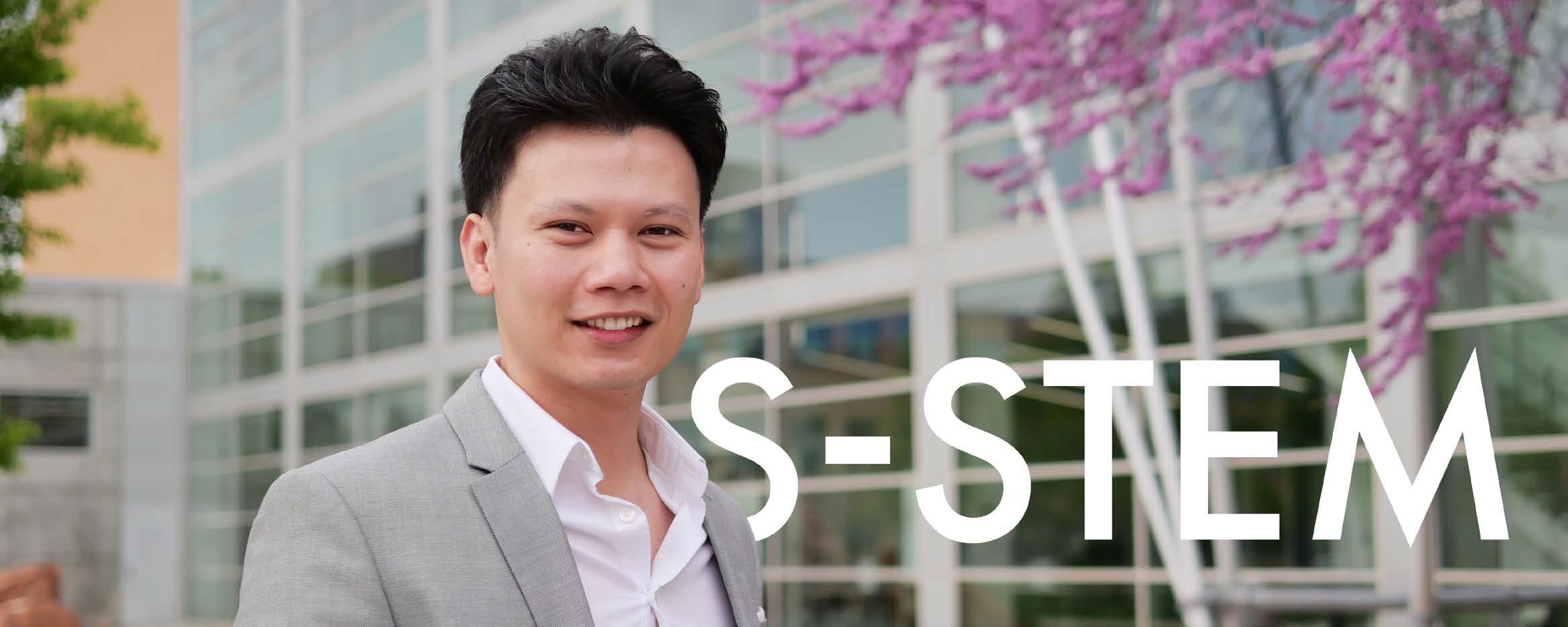
INSIGHT
INTO THE CHEMISTRY OF TEACHING
By Peta Owens-Listons
With dark glasses matching a wave of dark hair, Dr. Ned Lindholm places his white cane on the lip of the whiteboard. It is the first day in his chemistry class.
“Let’s talk about the 500�pound gorilla in the room,” he says, his deep baritone voice resonating. “I’m blind.”
“This means I will not see you nod your head, or raise your hand, or looking confused. You need to verbally speak up � feel free to interrupt me.”
As part of his pedagogy, Lindholm encourages his students to ask questions and seek out his help. Then he starts chipping away at the students’ intimidation of the subject, using an Albert Einstein quote to help eliminate barriers to learning:
“It’s not that I’m so smart, it’s just that I stay with problems longer.”
He tells the students the jargon and the long words they will hear are “just an attempt to make us sound smarter than we are” for concepts that are quite simple once you start applying them.
He sees his role as part teacher, part motivator, and part coach, and he aims to demystify chemistry, a complex subject, making it accessible and relevant for his students.
“I think we too often defeat ourselves in our mind before we’ve even given something a chance,” says Lindholm, who has been an adjunct faculty member at the College since 2016. “I don’t want any of these students giving up on a career dream because they give up on themselves in this class.”
Lindholm teaches Elementary Chemistry, in which many of the students are pursuing healthcare professions, and General Education Chemistry, which introduces students from a variety of backgrounds to chemistry. In both classes, he connects chemistry concepts with
scenarios they will find in a healthcare profession or just in everyday life. He tells students to go home and look at what is in their toothpaste or on their kitchen shelves to match it to the nomenclature that comes up in class like fluorine or sodium bicarbonate.
Lindholm’s teaching style involves a lot of verbal interaction. His expectation is that his students take a collaborative approach. “I don’t just work through a problem and solve it for them � I ask, what do we need to do here? They come back with something, so I say let’s try it and see what happens. Nope, it doesn’t work and this is why. Any other ideas?”
“He is able to visualize these high concept things in his head and helps us understand them or writes formulas on the board and talks us through them,” says student Cooper Beckstead, a pre-nursing major. “He is just a really knowledgeable teacher, who is also understanding when we need flexibility.”
Cooper adds that everyone can benefit by engaging with people who have different perspectives, for whatever reason. “To imagine what it is like for Dr. Lindholm to navigate the world opens my mind more.”
Exploring New Ways to Teach Science to Those without Sight
Lindholm honed his teaching skills in his former career as a project scientist for Jacobsen Engineering, where he also contracted with the military and taught soldiers chemistry�related topics. “It was a tough audience,” recalls Lindholm. “But engagement levels jumped significantly once I drew it to what they might encounter in deployment, especially regarding chemicals used to make homemade explosives.” Lindholm also taught chemistry while in grad school.
Ned Lindholm breaks down barriers to learning science while navigating the classroom and the world while blind
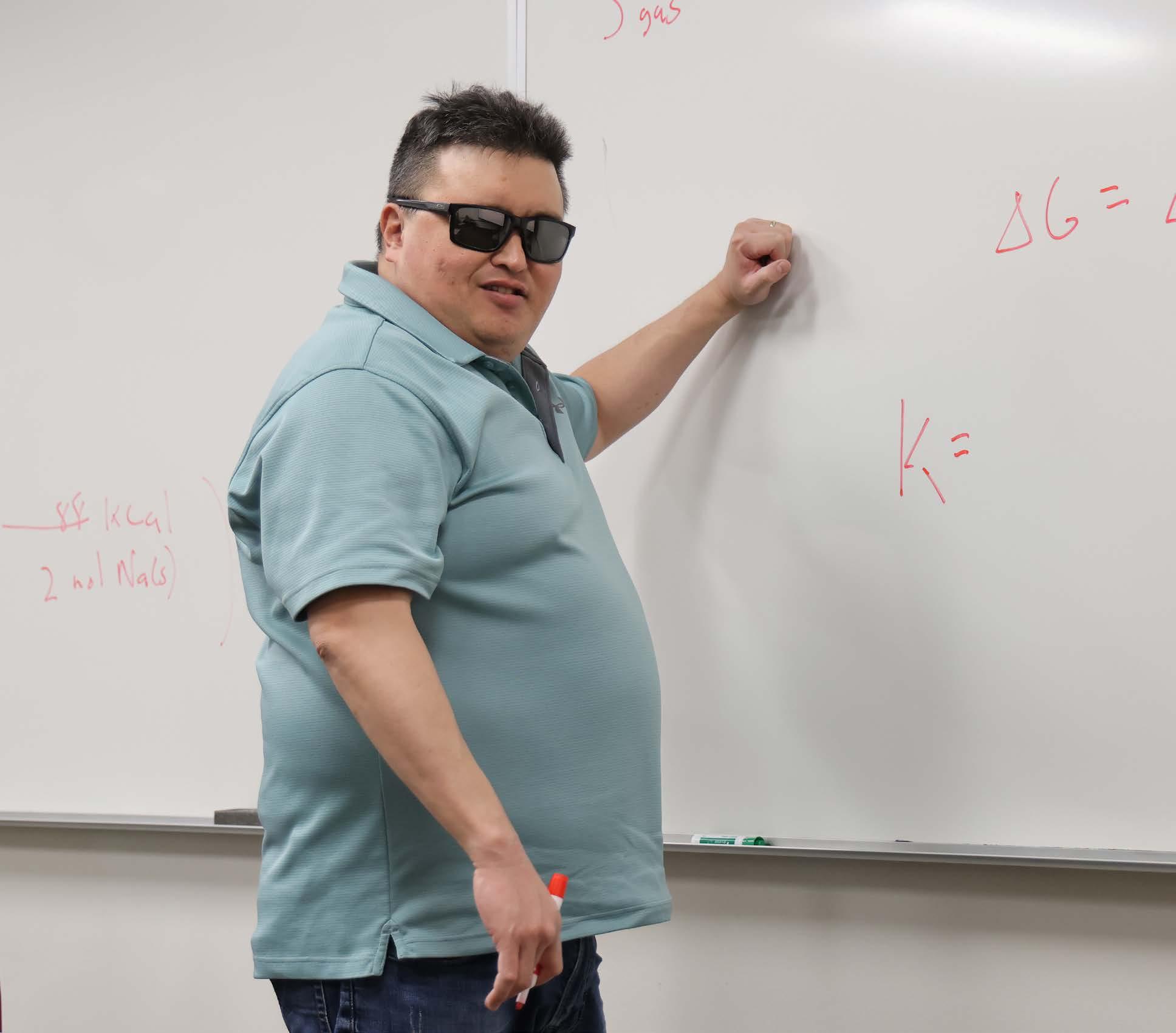
In 2013, an experiment went awry, resulting in an explosion that destroyed Lindholms eyesight and damaged his ear drums and right hand. “I took the [rehab] challenges one thing at a time, otherwise it would have felt insurmountable,” says Lindholm. “I had only one option and that was to get better.” After rehab and a yearlong training to adjust to being blind through the state’s Services for The Blind and Visually Impaired, Lindholm asked himself, “What can I still do?” This led him to SLCC.
It also led him into advocacy work for the blind through the National Federation of the Blind. The organization’s tagline: “blindness is not the characteristic that defines you or your future.” “This is exactly what I needed to hear after my injury,” expresses Lindholm.
When he realized science education for youth who are blind was nearly nonexistent, it infuriated him, and he dove into figuring out new ways to run experiments to teach
"I THINK WE TOO OFTEN DEFEAT OURSELVES IN OUR MIND BEFORE WE’VE EVEN GIVEN SOMETHING A CHANCE."
science without sight by focusing on tangible elements like temperature changes or an inflating balloon as it fills with gas.
Back in his classroom on SLCC’s Taylorsville Redwood Campus, Lindholm asks his students to name the two types of energy. One answers, “Kinetic,” and 30 seconds later another student responds with “Potential energy.”
“And what is kinetic energy?” projects Lindholm. He looks expectantly out at the students. He waits. He trusts that they want to learn and that they see him as an advocate who will help them move closer to achieving their educational goals � especially if chemistry is a tough subject for them. A student quietly utters, “Motion,” then louder: “Kinetic energy is energy in motion.”
SLCC ATHLETICS: TRANSFERS OF NOTE
By Spencer Porter
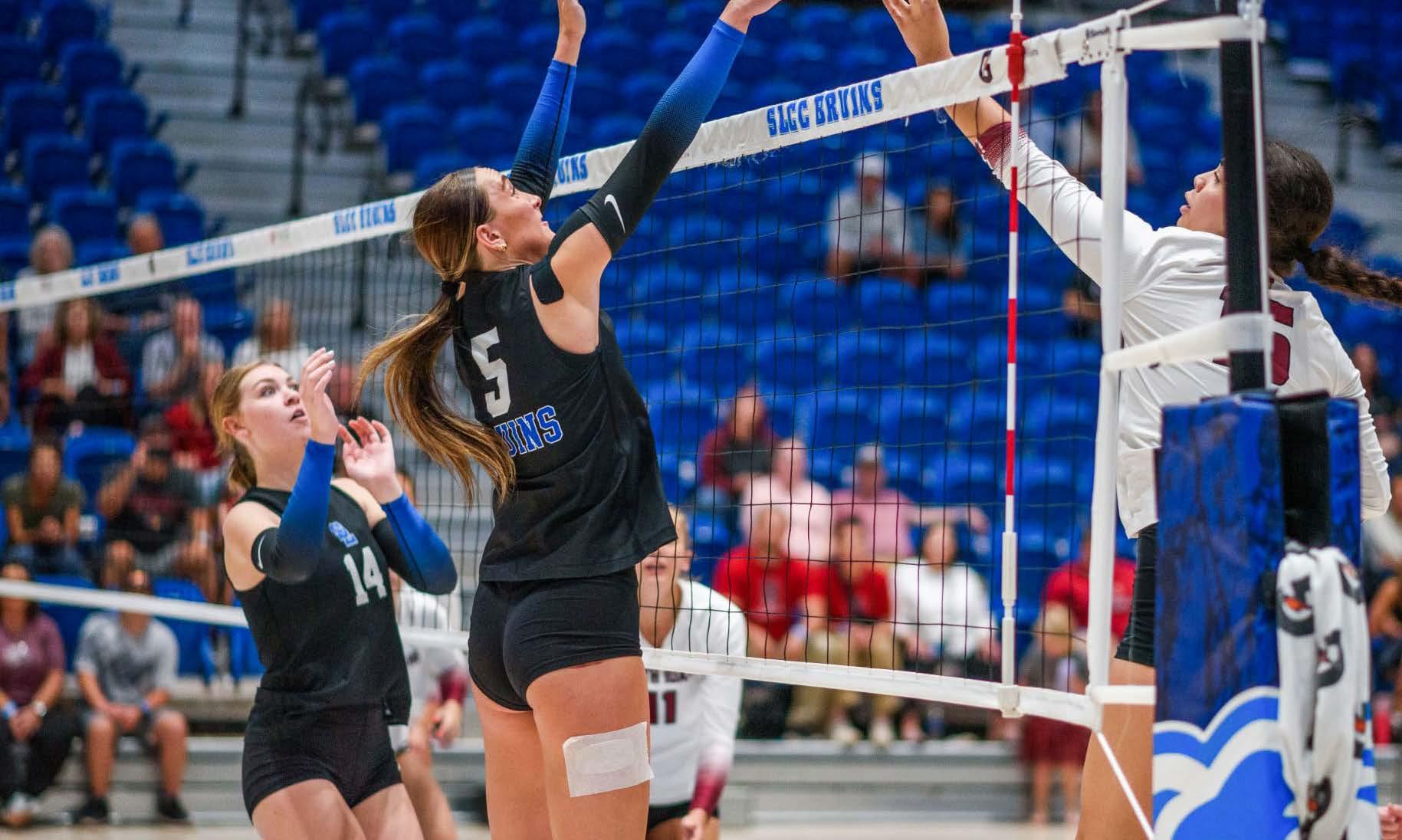
“For many of our student athletes,” says Gary Veron, SLCC’s athletic director, “we’re a launching pad.” When he uses that language, he’s of course referring to excelling in competition, which Bruins certainly do (current national titles include baseball and cross-country). More importantly, he also means how the College prepares young adults for their post-SLCC lives as transfer athletes and students.
“We’re not trying to hold onto these great young people,” he explains, “We’re equipping them to succeed at their next destination.” Bespoke attention, athletic development, academic tools, character building — all create lasting impacts long after student athletes have given off the blue and gold.
“That’s the beauty of community college,” Veron says, “and that’s exactly what we strive to do each day.” These transfer athletes prove the concept, and the trophies, plaques, and rafter banners they earned for the College are inspiration for those who will follow in their footsteps.
LOGAN LINDSAY
Volleyball
SLCC UNLV
After two seasons at SLCC, Logan Lindsay is transferring to UNLV to further her volleyball career. Lindsay led the Bruins in the 2024 fall season with a team-high 234 kills. A 6-foot-2 right side hitter, Lindsay had a standout year as she earned Second Team All-American honors and was named to the conference’s All-Region First Team.
“My experience at SLCC helped me balance my time, relationships, and physical health, all while being a student athlete,” says Lindsay, who grew in confidence on and off the court. Lindsay finished her sophomore season with 45 service aces, 41 block assists, and five solo blocks. She ended the year with 95 sets played and had her career-high of 16 kills in two different conference matches.
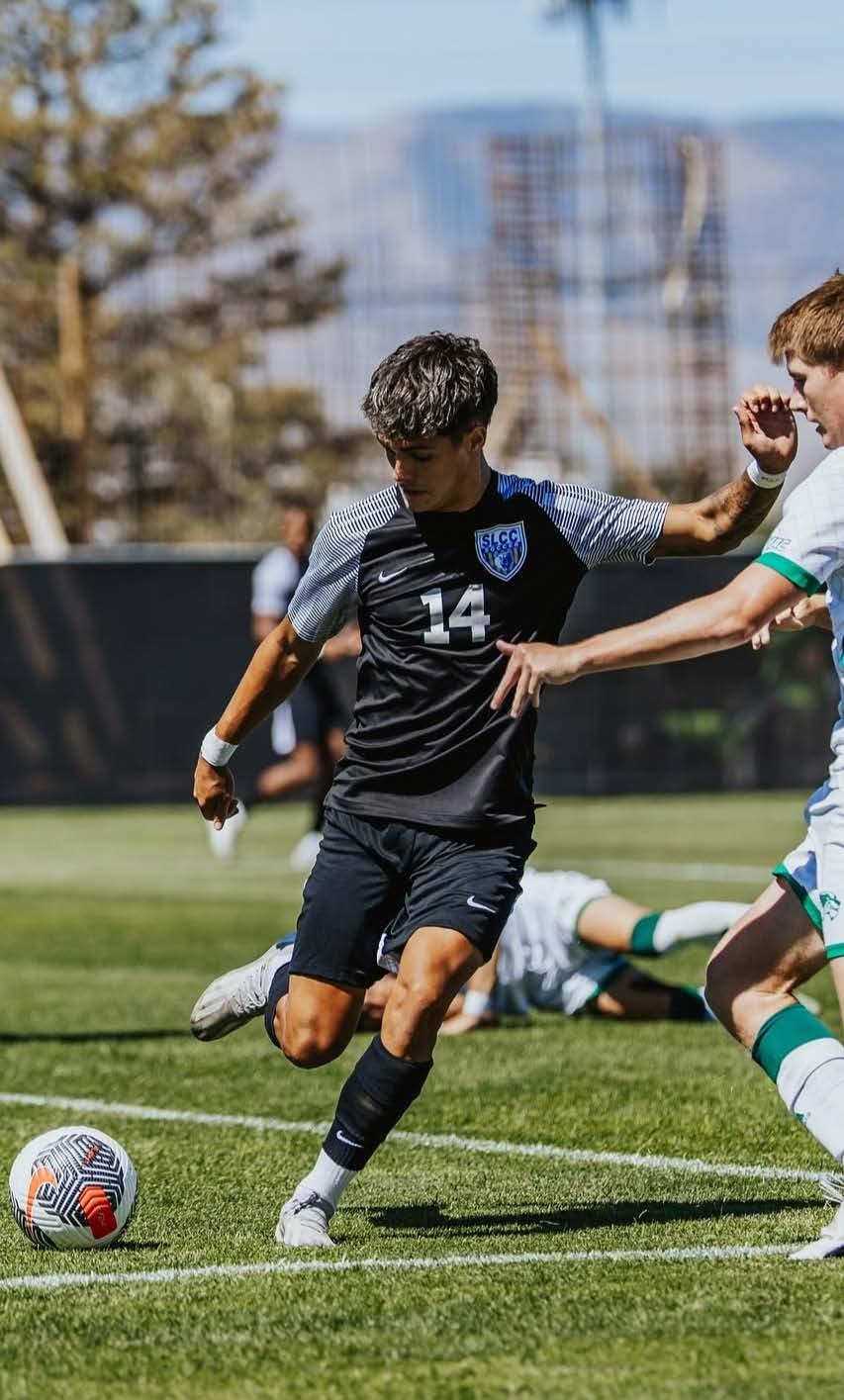
IGOR GONCALVES
Soccer
SLCC ST. JOHN’S
Igor Goncalves is heading to St. John’s University in the Big East Conference to continue his playing career. Goncalves was named to the NJCAA Division I All-American Team and was the Scenic West Athletic Conference Player of the Year. The right back was the first ever Bruin defender to win SWAC Player of the year.
Goncalves is from Almada, Portugal and was the captain throughout the season for SLCC. During the regular season, the Bruins were the No. 1 team in the nation and received an at-large bid to the National Tournament. Goncalves scored three goals on the year and contributed to the 14 games in which SLCC recorded a clean sheet.
LUKE JACOBS
Baseball
SLCC Utah
Luke Jacobs has committed to play baseball at the University of Utah — fitting, since his father also played ball there. For the Bru Cru, Jacobs was named the SWAC Player of the Year and made All-American Second Team while playing a big role in the Bruins winning the JUCO World Series. Luke led the conference in extra-base hits, home runs, and RBI while batting .373.
“My time here at SLCC turned out better than I could’ve imagined,” Jacobs says. “Everyone involved in the baseball program has helped me grow on and off the field, but I’m most thankful for the friendships and relationships I’ve built with each coach and teammate.”
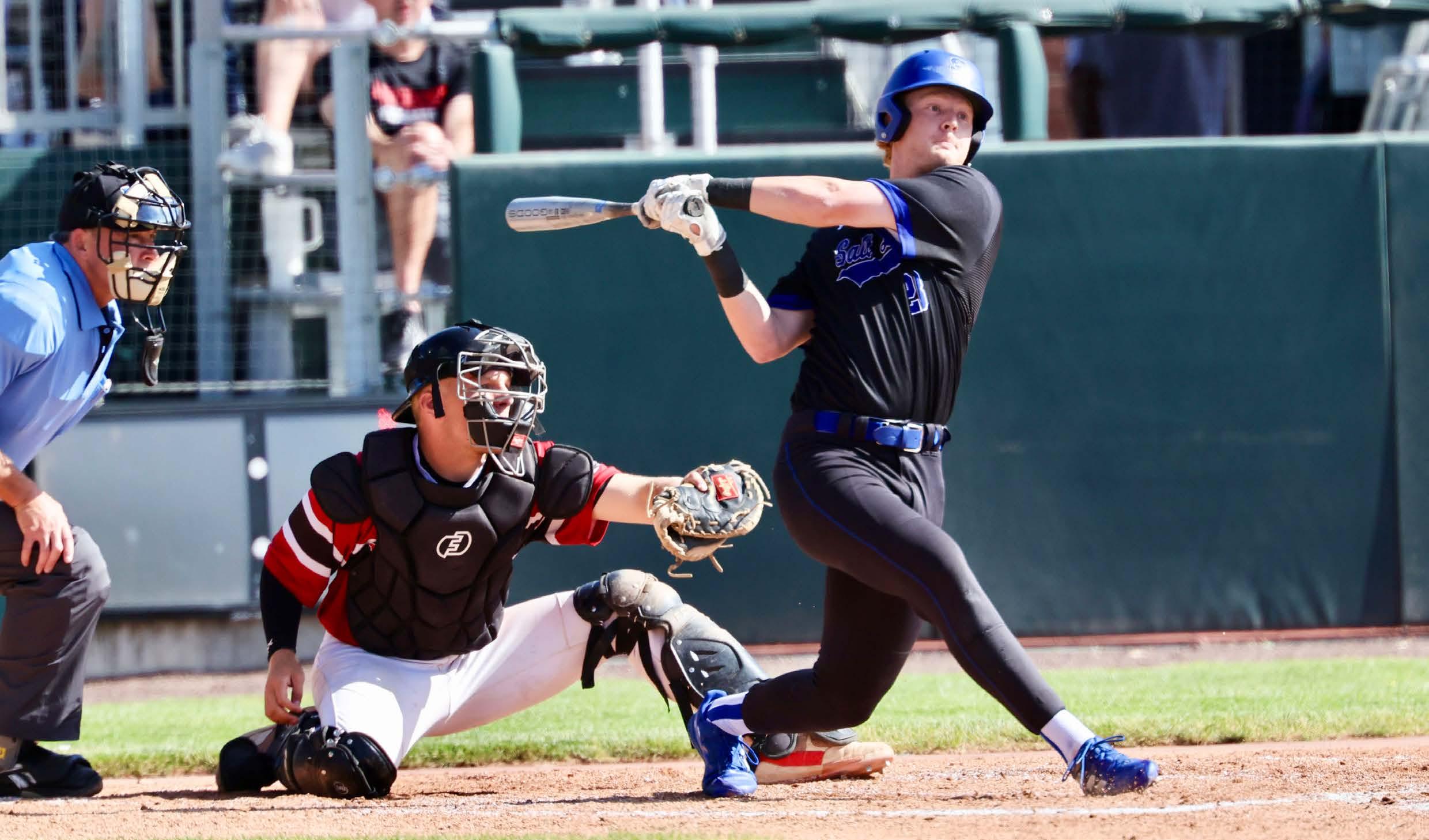
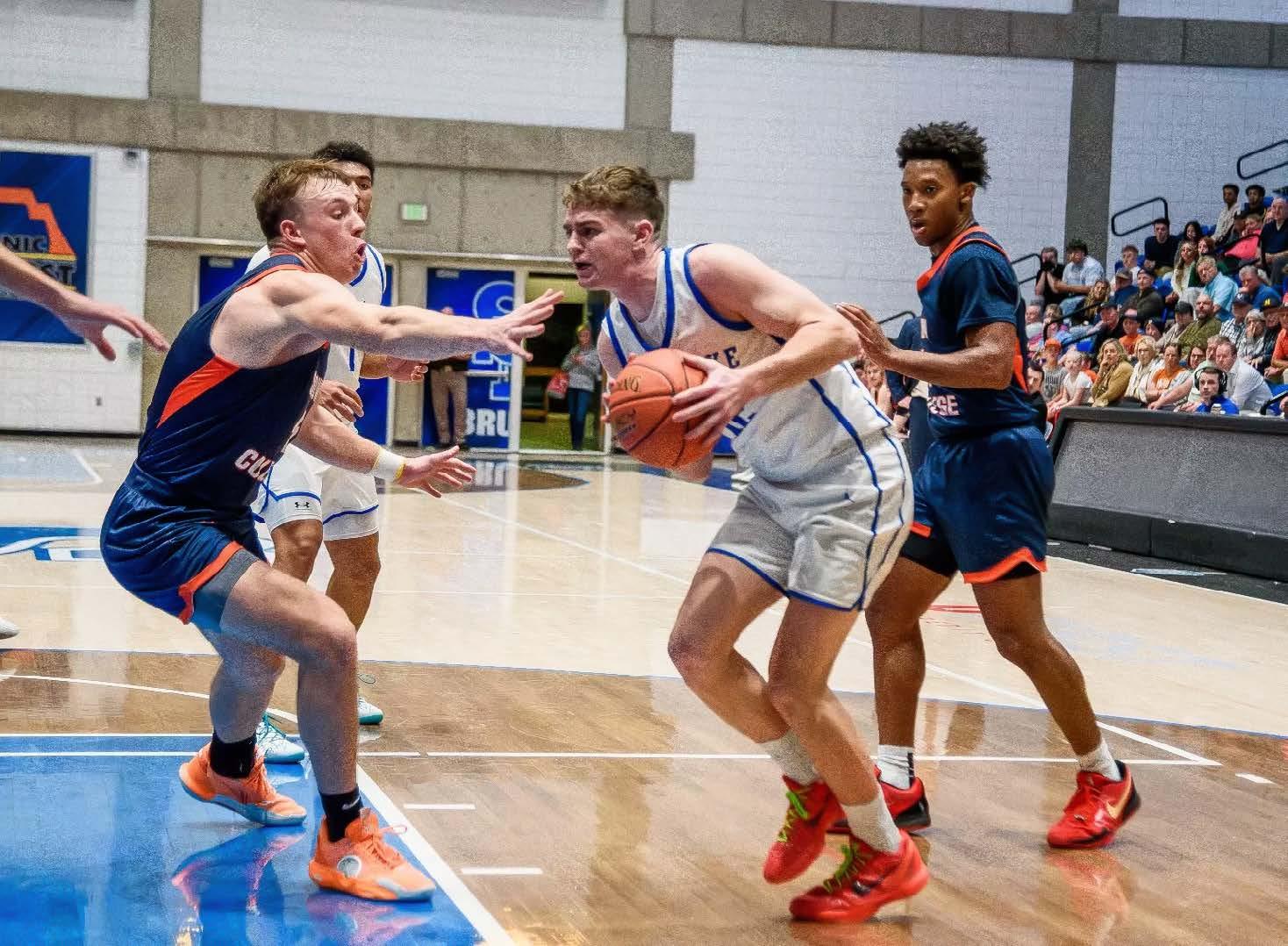
ETHAN COPELAND
Basketball
SLCC Stetson
Ethan Copeland transferred to SLCC for his sophomore season as a sharpshooter. He proved his mettle by leading the SWAC with 104 three-pointers on the season, going over 40% from the three-point line. He also earned Second-Team All-Conference as he led the Bruins in assists, steals, and minutes played this past season. In early April, Copeland announced that he’s transferring to Stetson University.
Copeland is from Sunnyside, WA, but he played highschool ball at Lone Peak in Utah, creating a natural bridge to the Bruins. “My experience at SLCC was great. The coaching staff was amazing and they allowed me to be who I was and grow in all aspects of my game,” he says. “I’m very thankful for the coaches, teammates, and the opportunity I had to showcase my abilities to fouryear schools and show them what I am capable of.”
PAIGE SHUMWAY
Softball
SLCC UVU
Paige Shumway transferred from USUEastern to SLCC for her sophomore season. As a freshman, she played both volleyball and softball. For her sophomore campaign, she focused on softball. It paid off. In the leadoff spot, Shumway hit .369 with 48 hits, 47 RBI, and 12 home runs, earning First Team All-Region as the Bruins’ shortstop. For her junior year, she’s already signed to play at Utah Valley University.
“My experience at SLCC was truly special because of the coaching staff,” Shumway says. “They pushed me every day to grow not just as a player, but as a person, and they helped prepare me for the next level. I’m really grateful for their belief in me and the standard they held me to.”
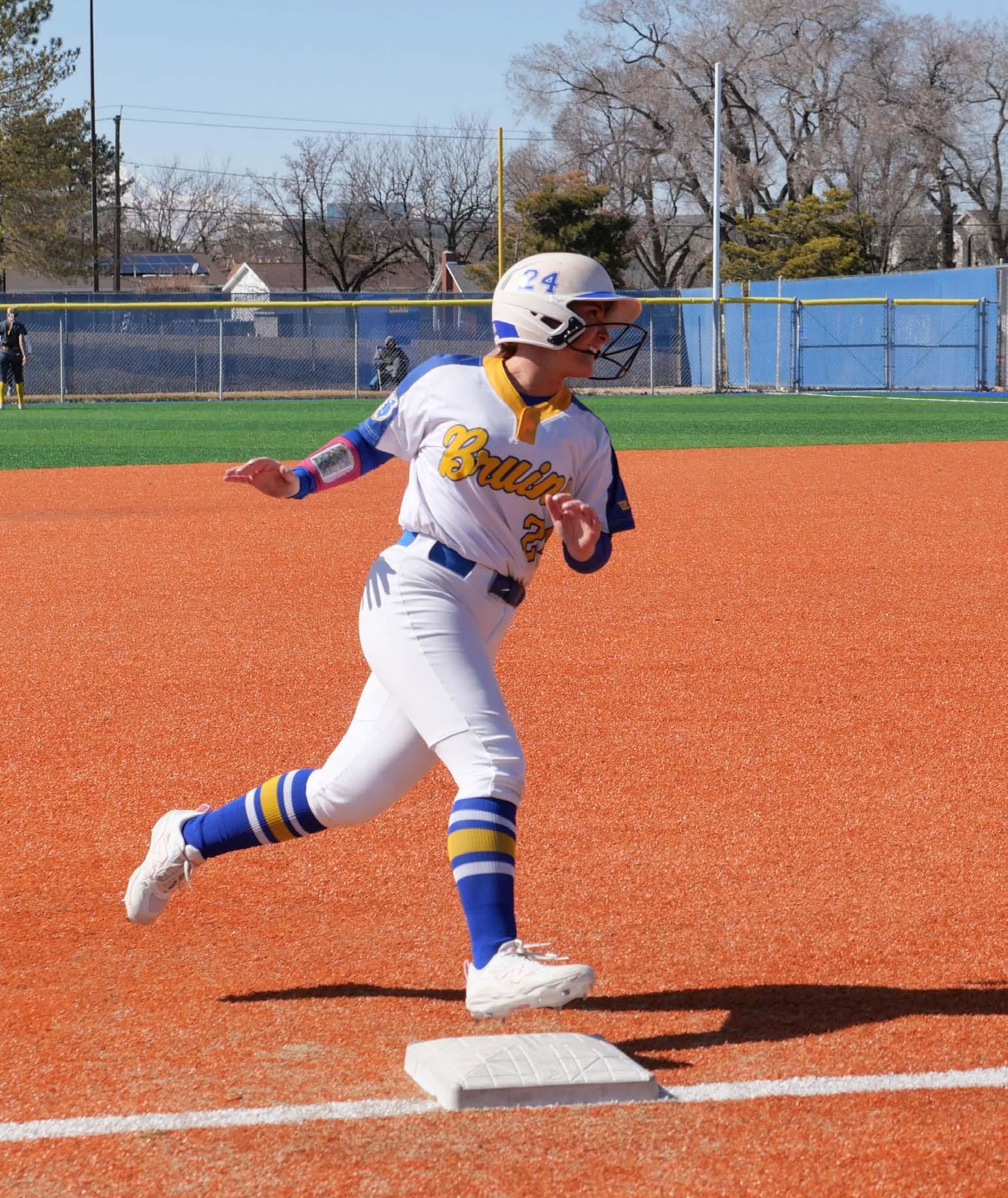
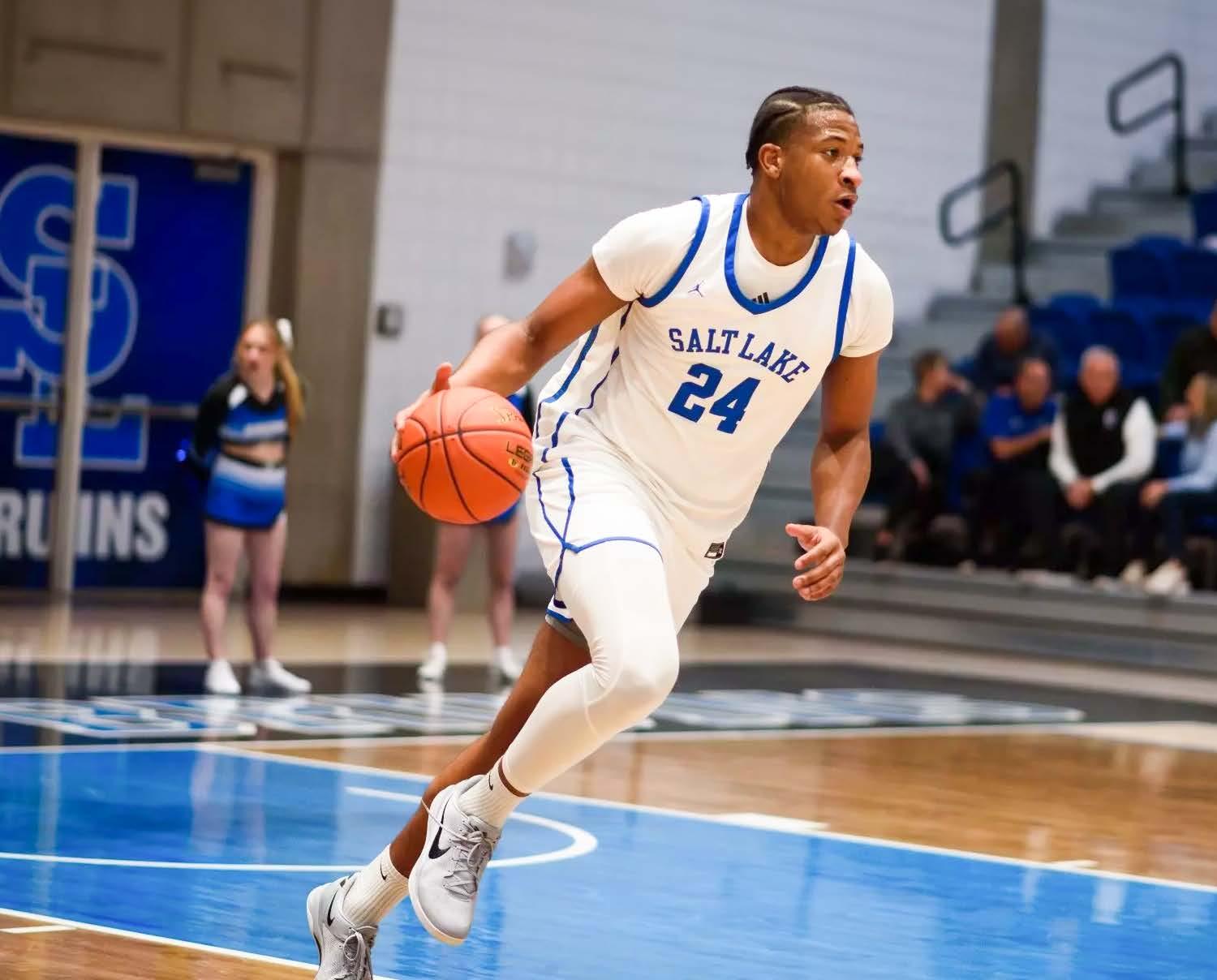
XAVIER EDMONDS
Basketball
SLCC TCU
Xavier Edmonds began his sophomore season as one of the most touted players in all of JUCO basketball. At the start of the 2024 season, Edmonds committed to TCU in the BIG XII before averaging 19.2 points and 8.2 rebounds this past season. He also had ten double-doubles and a career-high game with 37 points while leading the Bruins in assists and blocks.
In his final year with the Bruins, Edmonds was named to the NJCAA Division I All-American Third-Team and was also named to the SWAC First-Team.

GRADUATION BY THE NUMBERS
3,385 TOTAL GRADUATES
4,046 AWARDS
1,004 HIGH HONORS (Cumulative GPA 3.8 or higher)
924 HONORS (Cumulative GPA 3.5 — 3.79)
874 HISPANIC
SPANNING DEMOGRAPHICS
1,977 FEMALE
1,403 MALE
1,580
FIRST-GENERATION
151 VETERAN
45 Countries
SPANNING GEOGRAPHIES
33 States
SPANNING GENERATIONS
19 Utah Counties
16
Age of youngest graduate
67
Age of oldest graduate
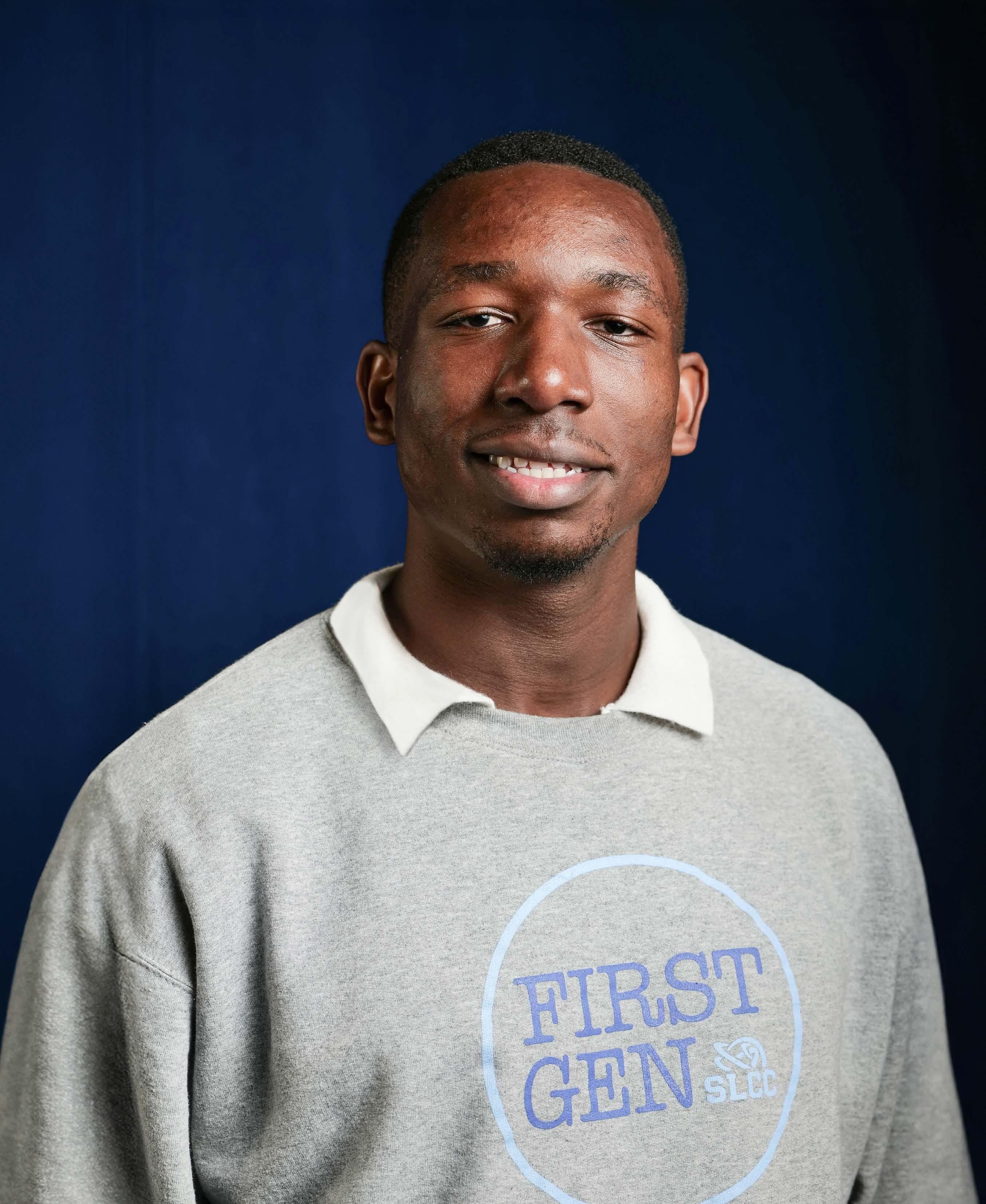
IN SPIRE
PROVOST’S GRADUATES OF EXCELLENCE
A Provost’s Graduate of Excellence award is a prestigious distinction that acknowledges students for their hard work, commitment, and talents. One student is chosen from each school within the College and General Studies. These students have excellent GPAs and typically receive scholarships and awards for their academic achievements. They also demonstrate leadership skills and a dedication to serving others in addition to achievements related to the creative arts, athletic excellence, or involvement in SLCC or beyond the classroom.
TAWANANYASHA DZENGA
Business
Gail Miller Business School
“My experience at SLCC has been shaped by triumphs and challenges, helping me learn about myself and the world. I am an international student from Zimbabwe, and I am pursuing a double major in Computer Science and Business. I am also a proud honor student. I had the chance to represent SLCC at the Western Regional Honors Conference, where I presented my research. I have also led two service-learning trips and currently serve on the Utah Global Diplomacy Youth Advisory. SLCC’s mission of supporting students and the community inspires me to give back to higher education, especially by focusing on student success. I appreciate the opportunities I’ve received during my time here and look forward to continuing to build on this foundation.”
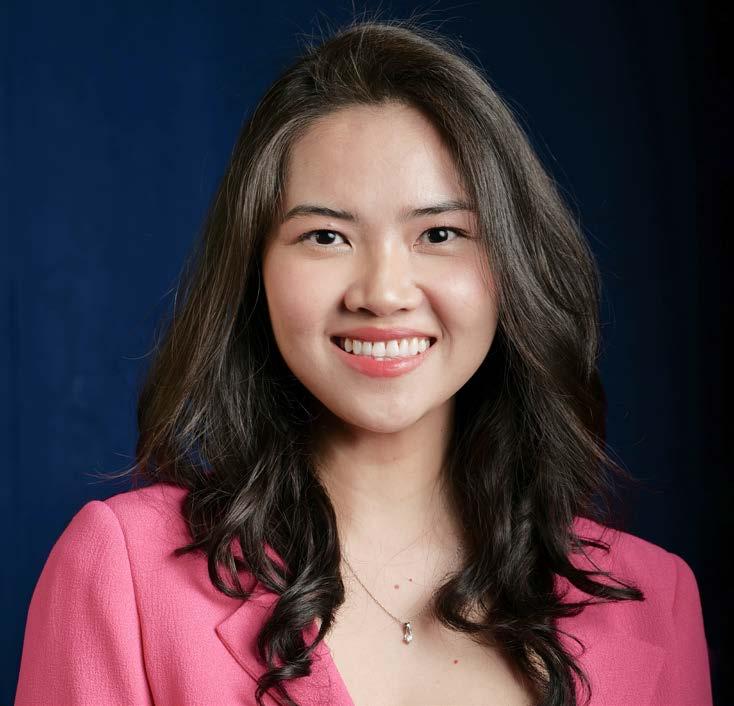
CARLYN BARLOW
TRAN HUYNH Biology
School of Science, Mathematics and Engineering
“I chose to enroll at SLCC because it was a great starting point for my education. Returning to school was tough after a long break, but I started by taking two classes each semester to help ensure my success. At SLCC, I made the President’s List, received scholarships, and took part in alternative breaks. I feel proud now that I am nearing the end of my journey at SLCC. My experience here has been more than just earning a degree; it has been a significant accomplishment for me and my family. SLCC helped me build a strong foundation and opened many doors for my future.”
Apprenticeship Electrical Independent Technology
School of Technical and Professional Specialties
“My academic journey has been far from traditional, and I can confidently say that attending SLCC has been one of the best decisions I’ve made. This place not only became a safe place for me, but it also provided me with the tools to pursue higher education. My journey has not been easy, but I have learned that anything is possible with hard work and the right support. For the past four years, I have worked as a licensed electrical apprentice for the State of Utah, and I am proud to say that I am now a licensed journeyman electrician. The support I received here at SLCC made it all possible.”
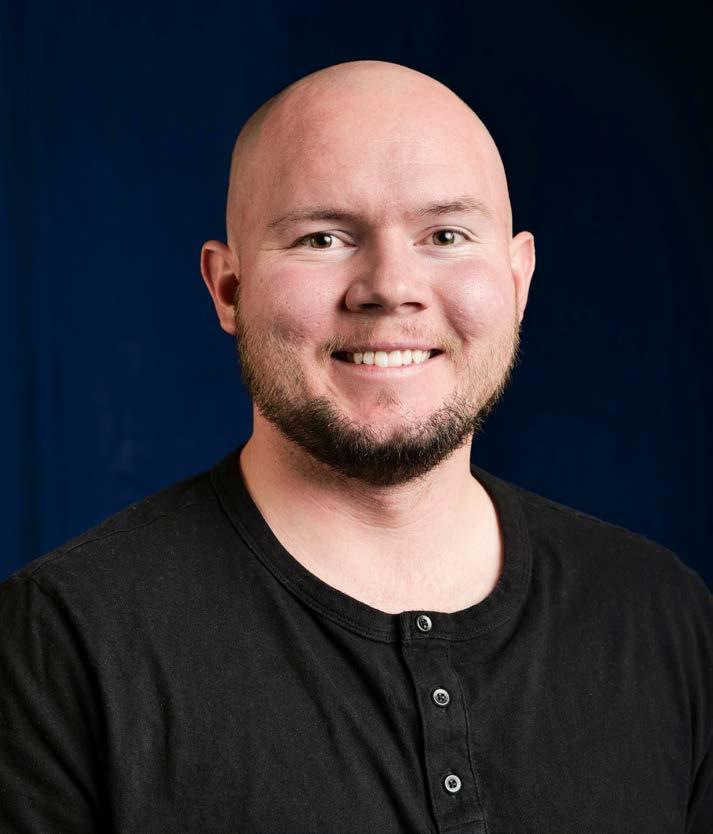
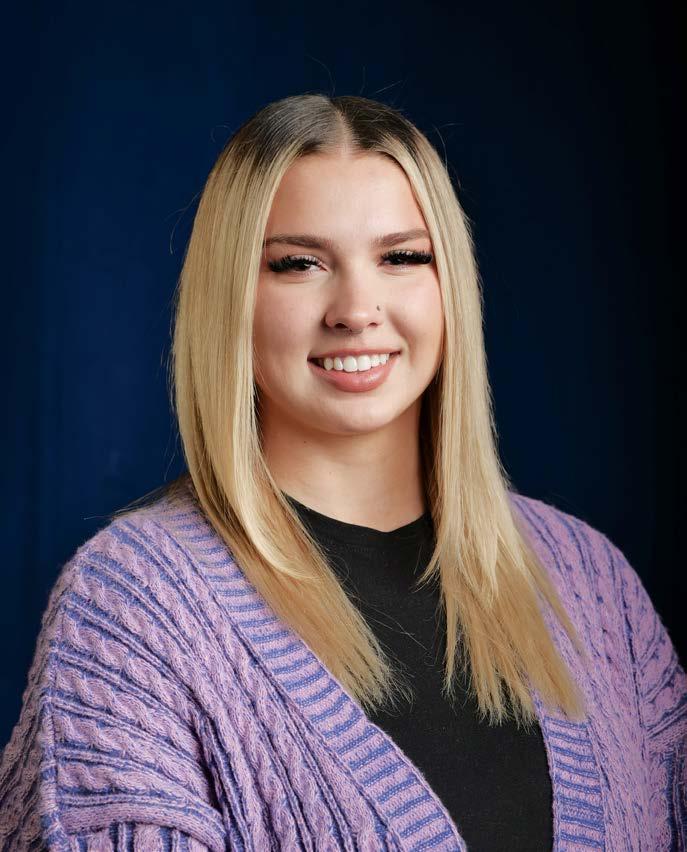
MARILYN HOWARD
General Studies
EMMA BARUCIJA
Architectural Technology
School of Arts, Communication and Media
“A significant part of my academic success here at SLCC stems from the mentorship and support of the faculty in the Visual Art and Design department. Whether it was through their thoughtful critiques, engaging discussions, and unwavering belief in my potential, these mentors have pushed me to think beyond conventional design and challenge myself daily. Beyond academics, service involvement has been central to my college experience. My role with the Engaged Learning Office allowed me to mentor others who directly impact our community. The combination of rigorous coursework, hands-on experience, mentorship, and leadership roles has shaped me to think critically, design with purpose, and contribute meaningfully to everything I do.”
“My time at SLCC started nearly two decades after graduating from high school. The journey has not been easy as I have faced multiple challenges that have felt overwhelming — from illnesses in the family to the passing of my brother to brain cancer. One of the things that kept me going was remembering my brother’s words to be my own person and have my own success. SLCC has been an institution of learning and a place of safety, growth, and opportunity. It is where I found self-confidence, lasting friendships, mentors, and academic success. SLCC has become a second home.”
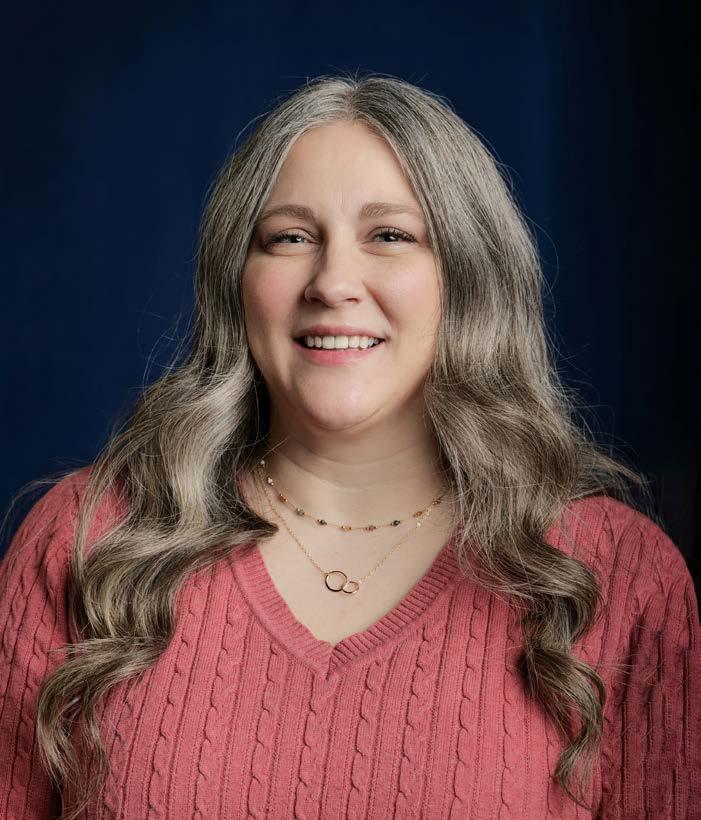
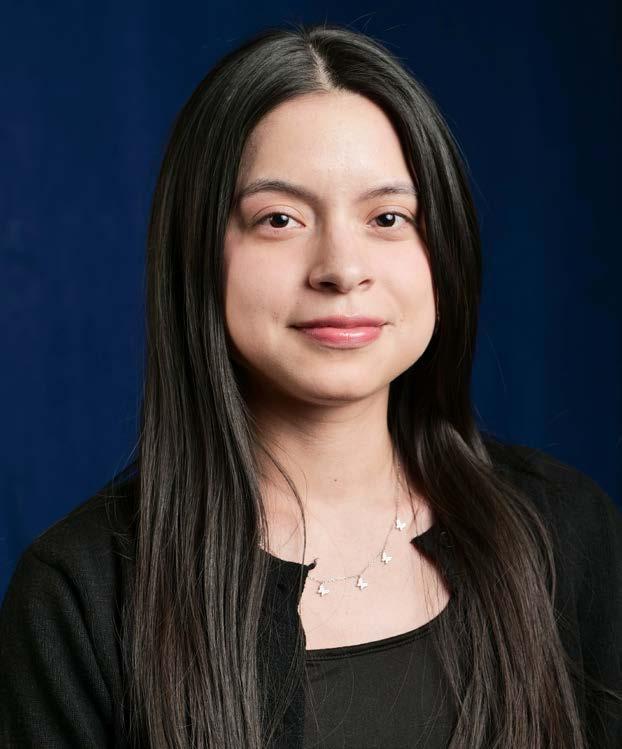
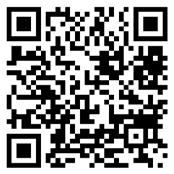
NATALIE CABRERA MANSILLA
Psychology
School of Humanities and Social Science
“My time at SLCC taught me the importance of perseverance and dreaming big. Soon after my first semester, I started getting involved at the College, which led me to create a community that helped me discover new interests. I was also accepted into the Honors Program, which improved my college experience. It gave me valuable tools to grow as a student and as a person. I completed my first research project and got the chance to present it at the Western Regional Honors Conference in Long Beach, Calif. While at SLCC, I developed critical thinking skills and gained the confidence to write an essay, which became my first published work.”
Scan the QR code to see our 2025 Provost’s Graduates of Excellence video.
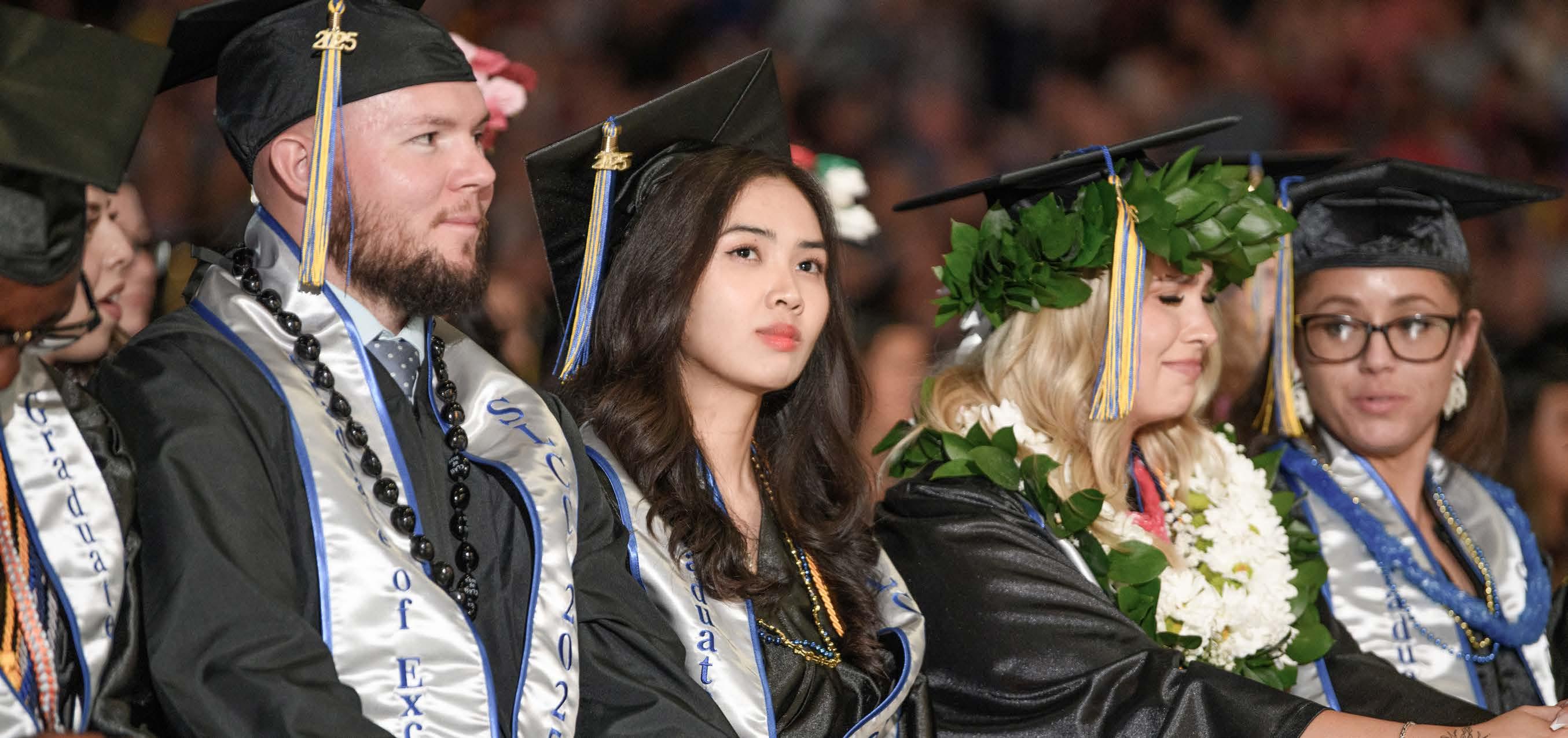
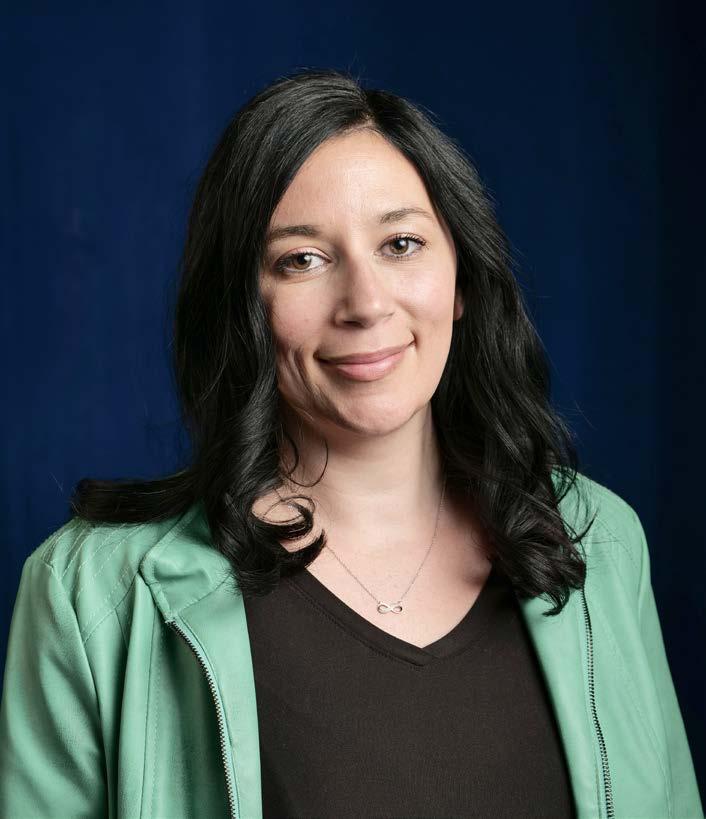
CASSIDIE ARCHULETA
Radiologic Technology
School of Health Sciences
“Reflecting on my time at SLCC, I realize how miraculous it is that I’ve continuously achieved a high level of performance despite challenges. My daughter has participated in a clinical trial requiring us to travel across the country for her treatment. While managing her medical needs and school, I also advocated for Galactosemia and rare diseases. In my technical writing class, I wrote a letter to representatives about important legislation that was under consideration. With support from the SLCC community and advocates nationwide, I’m proud to say the legislation passed in 2022, helping many people living with rare diseases. This success isn’t mine alone; SLCC has impacted my life, and I will always be proud to be an SLCC Bruin.”
LACY LOWRY
Diesel and Professional Truck Driving
Salt Lake Technical College
“I have always found myself drawn to the unconventional, and the strength to pursue my passion was only magnified after my father’s passing. He once told me I could only fail if I gave in to defeat. His words have removed all the fear of failure from my life. I quickly realized that traditional jobs weren’t for me, so I started exploring various professions from a young age. This led me to research every commercial driving school in Utah, and I concluded that my best option was to attend SLCC. It was the only institution that offered a level of instruction that could help me excel in my field. I finally have a chance to get a job on my own terms.”
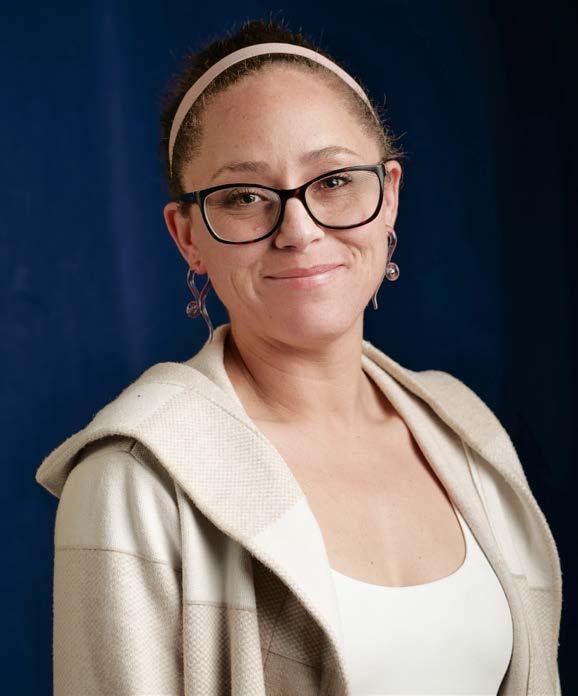
MCDERMOTT
Branigan KNOWLTON EMBRACING THE UN KNOW N
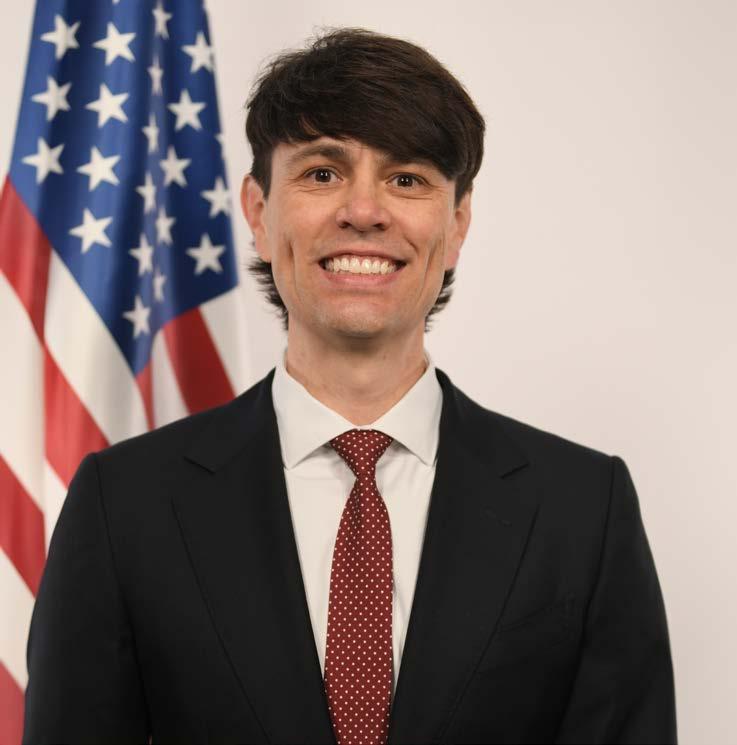
BRANIGAN MCDERMOTT
KNOWLTON Foreign Service Officer
United States Department of State
Branigan Knowlton has built a career on embracing the unfamiliar. As a U.S. Foreign Service Officer, he has lived and worked around the world, navigating complex diplomatic challenges in Hong Kong, Mexico, Colombia, and Italy. His ability to adapt and grow in new environments has shaped his 12�year career with the U.S. Department of State, where he currently serves at the U.S. Embassy in Rome.
“I’ve actively sought opportunities that push me into the unfamiliar, even when it’s challenging,” says Knowlton, a husband and father of four. “Early on, I realized I liked being uncomfortable, because it’s in that space that I’ve truly grown � both professionally and personally.”
Knowlton’s path to diplomacy started at Salt Lake Community College, where he completed his general studies coursework before earning a bachelor’s degree in Journalism and Communications from Utah State University. He also holds a Master’s of Public Administration degree from the University of Utah. Knowlton credits his time at SLCC with sparking his interest in government and international affairs.
“I took an American civilization course that wove the ideals I grew up with into the history of our country,” he says. “I also took a public speaking class that opened my eyes to the importance of understanding different perspectives, and a U.S. government class that helped me understand how our government’s actions impact the world.”
Before joining the State Department, Knowlton spent two years in Australia serving a mission for the Church of Jesus Christ of Latter�day Saints, and he lived in the Philippines working for a private company. Those experiences of living abroad reinforced his passion for global engagement.
Knowlton hopes SLCC graduates will embrace the unknown, take on challenges, and find growth in the unexpected. “In life, you always want to have options, so don’t tell yourself you can only have one specific career or live in one specific place � it limits your possibilities,” he says. “Although I eventually found my ideal job, it took me a while to think beyond what was familiar to me. Never be afraid to explore outside your zip code.”
“I REALIZED I LIKED BEING UNCOMFORTABLE, BECAUSE IT’S IN THAT SPACE THAT I’VE TRULY GROWN.”
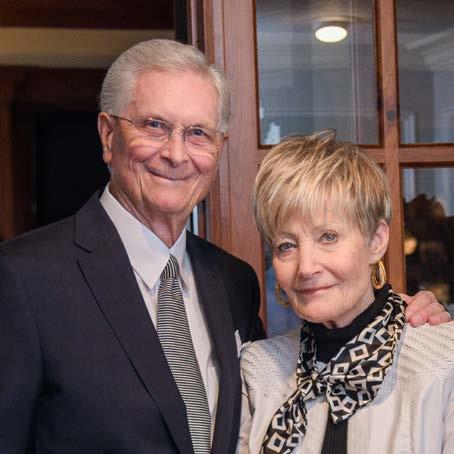
HONORARY DOCTOR OF HUMANE LETTERS
Salt Lake Community College has awarded Honorary Doctor of Humane Letters degrees since 1955. Selected by the SLCC Board of Trustees, recipients are outstanding individuals who have achieved distinction, contributed significantly to their professions, and made a lasting impact on their communities and/or higher education.
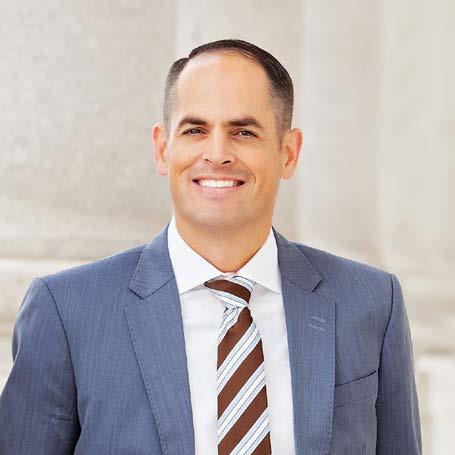
MICHAEL K. MCKELL
Utah State Senator, District 25
LEGISLATIVE
CHAMPION
The Salt Lake Community College Legislative Champion Award honors state legislators who demonstrate a commitment to improving higher education in Utah. The College’s Legislative Champion is selected following every legislative session.
ALAN E. HALL, CHAIR
JEANNE NOWAK HALL, PRESIDENT
Alan and Jeanne Hall Foundation
Community. Education. Service. Family. Faith. These values have guided Alan and Jeanne Hall for many years. As dedicated supporters of Salt Lake Community College, they have championed innovative training programs and scholarships, helping hundreds of SLCC students achieve their dreams. For the Halls, investing in education isn’t just philanthropy � it’s a meaningful way to empower individuals and strengthen communities.
Alan, who holds an undergraduate degree in Psychology from Weber State University (WSU) and an MBA from Brigham Young University (BYU), understands firsthand the transformative power of education. As founder of several global companies, including Blue Sky Energy Corporation and MarketStar, he has witnessed how education shapes lives and careers. “College is where students dedicate themselves to learning the skills and knowledge they need to graduate with a degree,” he says. “Mastering the fundamentals during this unique time helps people become successful citizens and a benefit to their families.”
In 2013, Senator Mike McKell began his service in the Utah Legislature. Since taking office, he has been a dedicated champion for Salt Lake Community College and for all of Utah’s higher education institutions. Senator McKell has continually emphasized the importance of community colleges and has advocated for programs and scholarships that benefit SLCC students, and he regularly makes time to meet with College representatives to understand the institution’s priorities and perspectives on critical issues.
Senator McKell is also an ardent supporter of incarcerated students and works to provide them with every opportunity to receive postsecondary education that will allow them to successfully transition into society upon their release. He currently chairs the Utah Higher Education and Corrections Council, which is responsible for overseeing the development and delivery of accredited higher education curriculums in the state’s correction system. Senator McKell recently attended the graduation ceremony for students in SLCC’s highly successful Prison Education Program, and his efforts have resulted in meaningful assistance and support to those pursuing their education through this initiative.
Jeanne also promotes education and community service through her role as president of the Alan and Jeanne Hall Foundation. “It doesn’t matter what field you’re in; what matters is that you share your knowledge to lift and help others,” she says. After earning a bachelor’s degree in Psychology from WSU and master’s degrees in Counseling from BYU and the University of Utah, Jeanne worked for years as a high school counselor with the Ogden School District. She has also served the community by donating her time and energy to numerous charitable organizations, including singing in the Mormon Tabernacle Choir, organizing and running the Boys & Girls Club of Weber�Davis, and serving on the Alan E. and Jeanne N. Hall Endowment Committee for Community Outreach at WSU.
For students transitioning from college to career, the Halls emphasize that business, at its core, is about service. “Successful business begins with a deep understanding of human behavior and is sustained by being a thoughtful and compassionate individual,” Alan says.
Since joining the Utah Legislature, Senator McKell has served on several key committees. From 2019 to 2021, he chaired the Higher Education Appropriations Committee, which is responsible for recommending funding for Utah’s public universities and colleges. Today, he continues to serve as a member of that committee as well as the Senate Education Committee, which is tasked with setting policy for public education institutions.
In 2024, Senator McKell was elected by his colleagues as a member of the Senate Leadership Team, serving as the Majority Assistant Whip. In that role, he serves on the Executive Appropriations Committee, which is responsible for reviewing and approving the entire state budget.
Senator McKell earned a bachelor’s degree from Southern Utah University and a juris doctor degree from the University of Idaho. In addition to his work in the legislature, he leads the Olympic and Paralympic Winter Games Coordination Committee and is a practicing attorney primarily focused on insurance law. He and his wife, Brandi, are parents to four children.
DISTINIGUISHED ALUMNI
Salt Lake Community College’s prestigious Distinguished Alumni Award honors SLCC graduates and former students for professional excellence and exemplary service to their communities in their chosen professional or academic fields. It’s the highest award the college bestows upon alumni. Traditionally, one female alumna and one male alumnus are selected as honorees each year.
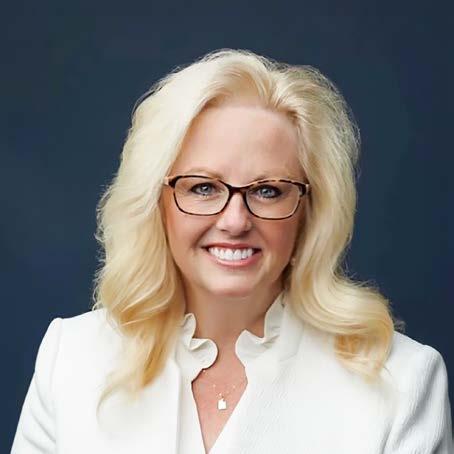
DAWN R. RAMSEY
AS, General Studies 2017
Mayor, City of South Jordan
DawnRamsey experienced Salt Lake Community College at two very different points in her life. The first time, she was just a few years out of high school, and later, after raising six children, she returned to the College as a nontraditional student. “I chose to take a break from my education that unexpectedly lasted 20 years,” says Ramsey. “I cannot imagine there ever was a nontraditional student as excited as I was to be back in school.”
As she began attending SLCC for a second time, Ramsey recalls the dedication of an academic advisor who combed through her transcripts to create a learning roadmap for her. “His time and effort were an immense gift � it allowed me to re�engage with my education and determine a path forward.”
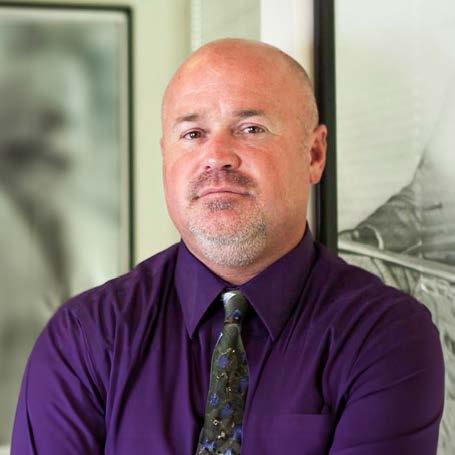
She also recalls an SLCC anatomy and physiology professor who encouraged and supported her. “She recognized things I could do that I might not have been fully aware of at the time,” says Ramsey. “She was helping me see who I could become.”
Just a few months after graduating from the College in 2017, Ramsey was elected as South Jordan’s first�ever female mayor. “That SLCC degree instilled confidence in me that made me feel like I belonged on that ballot,” she says. Soon after, Ramsey completed a bachelor’s degree at Brigham Young University in Family Science with emphasis in Political Science and Civic Engagement Leadership. She is currently serving in her second term as mayor of South Jordan City.
DANIEL BARNEY STIRLAND, M.ED.
General Studies
Principal, Kearns High School
Danny Stirland has been a part of the Kearns High School community for 25 years, first as a student, then as a basketball coach, then as a history teacher, and now as the school’s principal. He has also worked for the Granite District as a School Leadership Director, where he supervised high school and junior high school principals.
“I’m just lucky and blessed to be here; there’s something special about being where you grew up,” says Stirland. After high school, Stirland attended Salt Lake Community College to complete his general education requirements.
While at the College, Stirland cherished the small class sizes and teacher attention. “The small, intimate nature of the community college really worked for me,” says Stirland, who credits two SLCC professors for turning him on to history. “They had their views but also taught from a balanced approach, pulling in different perspectives. I appreciated this; it helped inform
me as I started making my own decisions in life.”
After completing his studies at SLCC, Stirland attended the University of Utah, where he earned a bachelor’s in Health with a minor in History, as well as a teaching degree. He later returned to the University to pursue a master’s degree in Educational Leadership.
Stirland was voted secondary principal of the year in 2014 by his Granite School District peers and received the Granite Education Foundation’s Excel Award in 2017. Even with all his public accolades, Stirland considers a shift in the culture at Kearns High School his greatest professional achievement. “We are a very diverse school in every aspect, where there is a lot of mutual respect, acceptance, and inclusion. This results in a positive learning environment that makes us all want to be here.”
“ ”
AUTHENTIC EXPERIENCES
HELP US CONNECT WHAT WE TEACH WITH OUR LIVES.
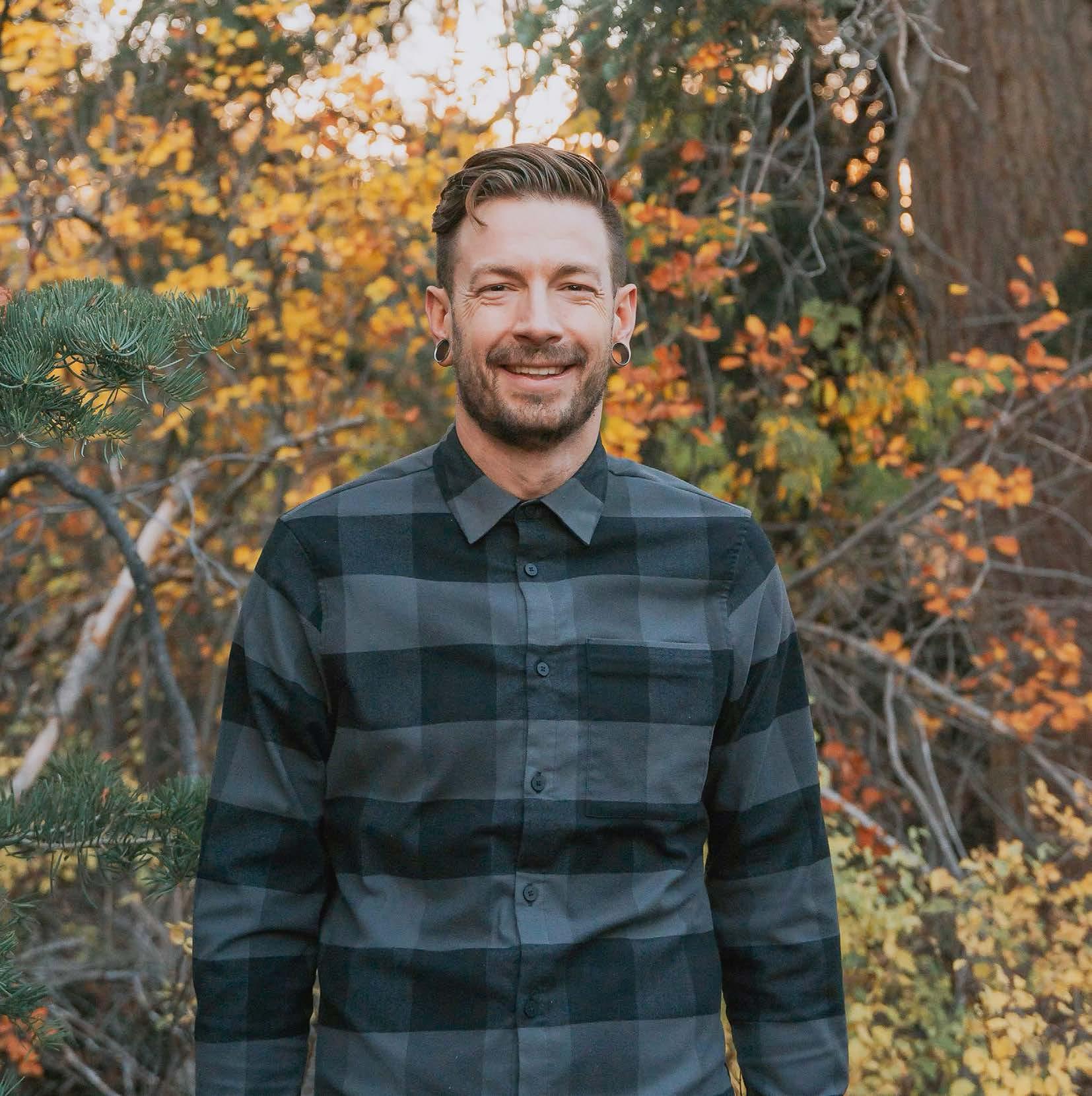
ANDREW VOGT, PhD Associate Professor Engineering
Dr. Andrew Vogt’s teaching philosophy is guided by two principles, curiosity and efficiency.
“Curiosity leads us to study a topic and allows us to really understand the ins and outs of research, while efficiency is all about sustainability,” he says. Vogt describes curiosity as a pure, open�minded impulse to explore, such as the ease with which children learn new concepts with virtually no instruction. Efficiency adds maturity to that childlike impulse, creating structures and pathways for accomplishment.
DISTINGUISHED FACULTY LECTURER
The Distinguished Faculty Lecturer is a recognition of quality work by one of Salt Lake Community College’s fulltime faculty and a charge to develop that work over an academic year into a public presentation. A committee chosen by the Associate Provost for Learning Advancement selects the faculty lecturer each year. The lecture takes place in the following spring.
Vogt’s work has always been grounded in the sensations of the body, and he teaches his students at Salt Lake Community College to learn using multiple senses � for example, sight and hearing can provide radically different understandings of acceleration. His instruction also relies on non�academic activities, like music and endurance exercise, to encourage a comprehensive understanding of engineering concepts.
“Authentic experiences help us connect what we teach with our lives,” Vogt says. “For example, the wave patterns of music directly correspond to stability of motion, and running can help us understand efficient biomechanics.” His lecture, to be delivered in Spring 2026, will follow that approach and use running as a lens to examine how curiosity drives exploration and how efficiency promotes sustainability of inquiry.
Andrew earned an undergraduate degree in Mechanical Engineering from the University of Idaho and holds a PhD from the University of Utah. Since arriving at SLCC in 2012, he has taught many subjects ranging from statistics to engineering applications for the guitar.
TEACHING EXCELLENCE AWARDS
Teaching Excellence Awards, presented by the Salt Lake Community College Foundation Board, recognize excellence in professional education over the span of careers. Both full-time and adjunct faculty are eligible.
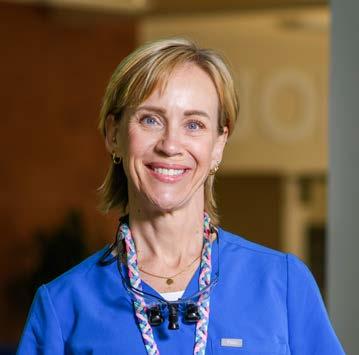
KRISTEN HALL
Associate Professor
Dental Hygiene
ISn 2012, Kristen Hall was a busy mom trying to balance her career as a dental hygienist with her family life when she met Renee Mendenhall, associate professor and program coordinator of Dental Hygiene at Salt Lake Community College. Their sons played on the same soccer team, and their shared profession sparked a conversation in which Mendenhall asked Hall if she would consider teaching at the College.
“I initially declined,” Hall says. “While I liked being a hygienist, I didn’t care for my experience in hygiene school.” Eventually, Mendenhall convinced
tudents in Emmanuel Santa�Martinez’s classes learn that bumblebees can carry pollen across three miles, expanding the gene pool for plants and promoting greater crop yields. Likewise, Santa�Martinez encourages his students to enhance their educations by venturing beyond the classroom for immersive field research. “I feel a deep responsibility to guide my students in developing essential skills, encourage critical thinking, expose them to extracurricular opportunities, and nurture their love for biology, all of which will help them thrive in their future careers,” he says.
Other examples of “cross�pollination” in Santa�Martinez’s work include internships and classroom innovations. He pioneered a
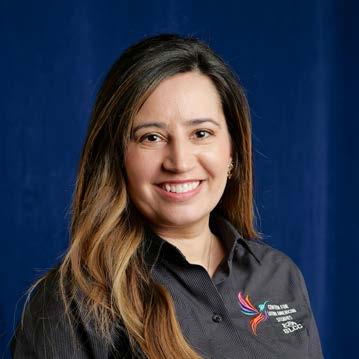
Hall to join the faculty at SLCC, and she became a full�time instructor in 2019.
Hall strives to ensure her students feel supported. “I sometimes felt like just a number to my professors, so I make sure to meet with my students several times each semester to learn what’s going on in their lives and how I can help,” she says. “I’m honored to help my students reach their full potential and see their profession not just as ‘mouth janitors’ but as a way to help people live their best lives.”
program that connects students with local internships, and he developed the College’s first dual�language biology class. Here, Emmanuel presents course material in Spanish and leads discussions in both English and Spanish.
Santa�Martinez’s interest in biology began on a farm in San Lorenzo, Puerto Rico. “I learned from my father the importance of understanding and taking care of plants and animals,” he says. This work inspired him to eventually pursue an undergraduate degree in Biology at the University of Puerto Rico and a PhD in Entomology at the University of Wisconsin�Madison. He began teaching at SLCC in 2019.
N. CAROLINA BLOEM, PhD
Associate Professor Spanish
Director
Center for Latin American Studies
Creating a positive learning environment where students can develop knowledge and thrive is Carolina Bloem’s guiding principle. “My goal is to provide students with the necessary tools to succeed in the classroom,” she says. “That path may look different for each student, but together we will get there.”
Bloem, who describes her teaching style as student�centric, encourages her students to connect the material in her classes with what they are learning in their other courses. She believes this
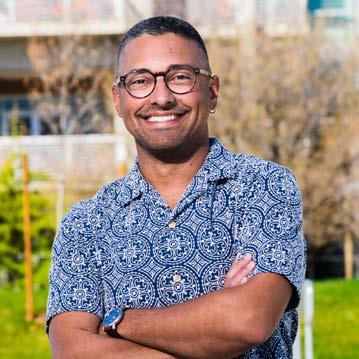
EMMANUEL SANTA-MARTINEZ, PhD
Assistant Professor Biology
interdisciplinary approach deepens understanding and fosters both creative and critical thinking. “My role in the classroom is to be a leader,” she says. “I am guiding my students toward a shared outcome of gaining knowledge, and together, we can reach that goal.”
Bloem is grateful that her journey led her to SLCC. “I am incredibly lucky and honored to work here. Our students are at the heart of everything we do, and I take my role in helping them build their dreams very seriously.
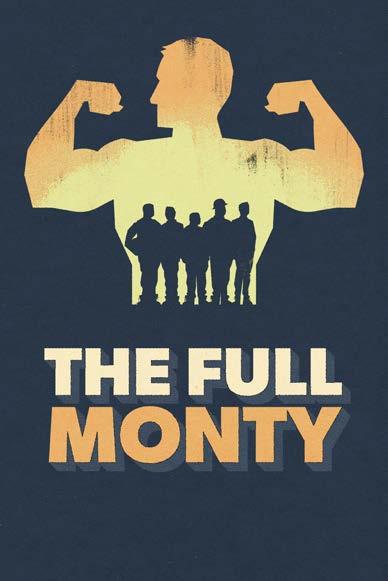

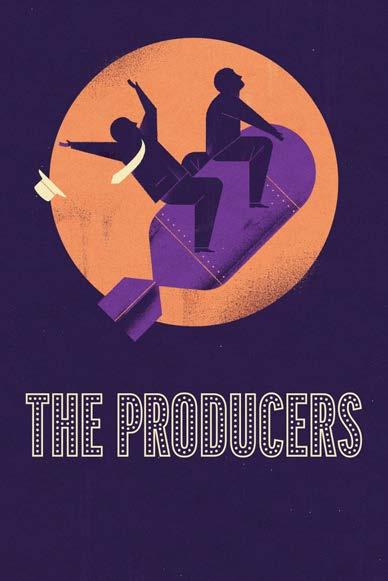
Every season, the Grand hosts award-winning theatre, dance productions, and concerts that attract arts enthusiasts from all along the Wasatch Front.
Visit grandtheatrecompany.com for tickets and information on the new season beginning September 2025.
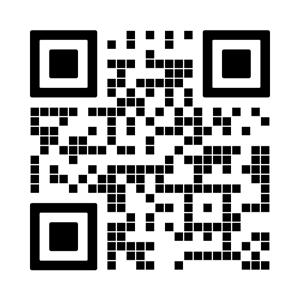
Scan QR code for more information.



